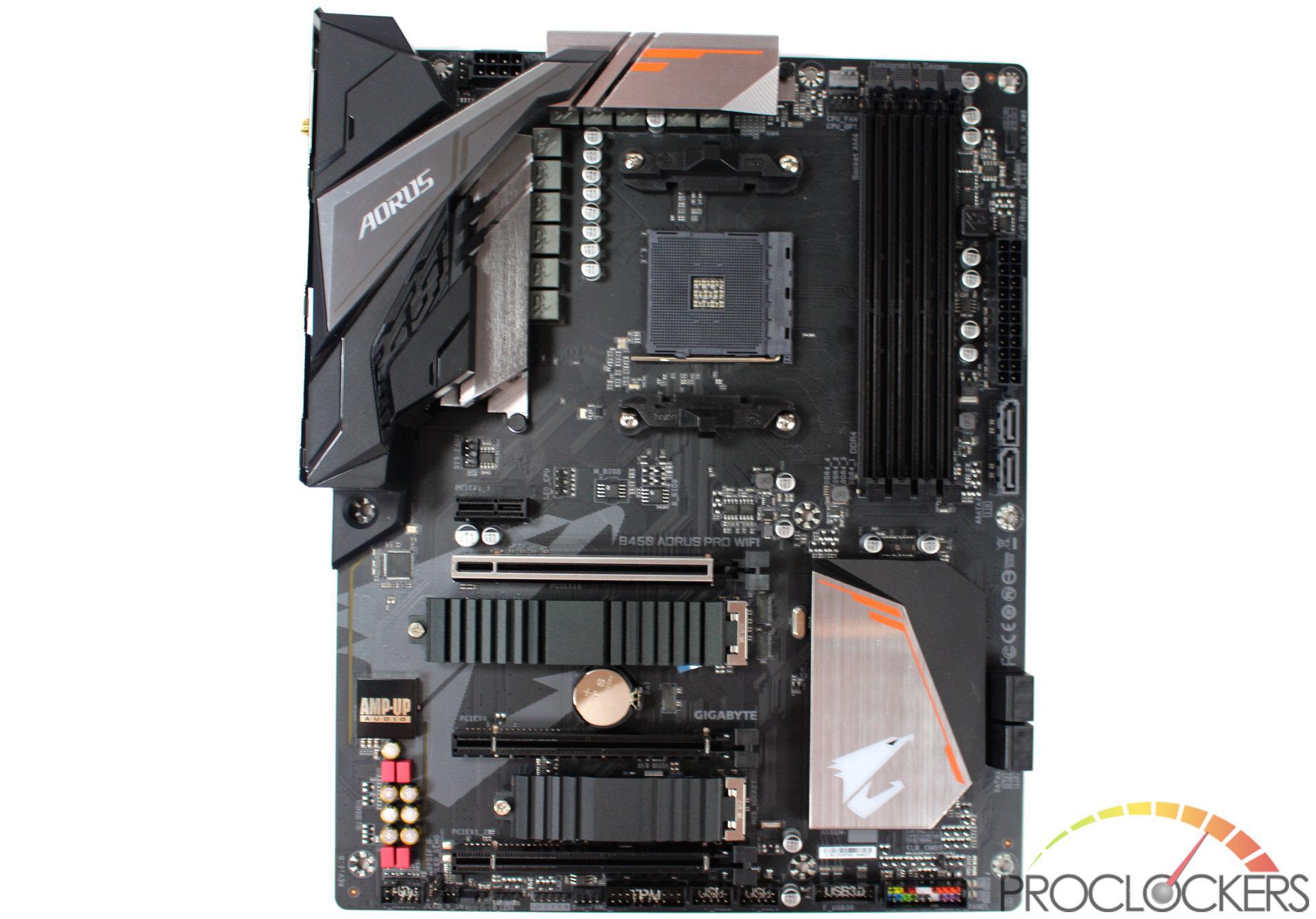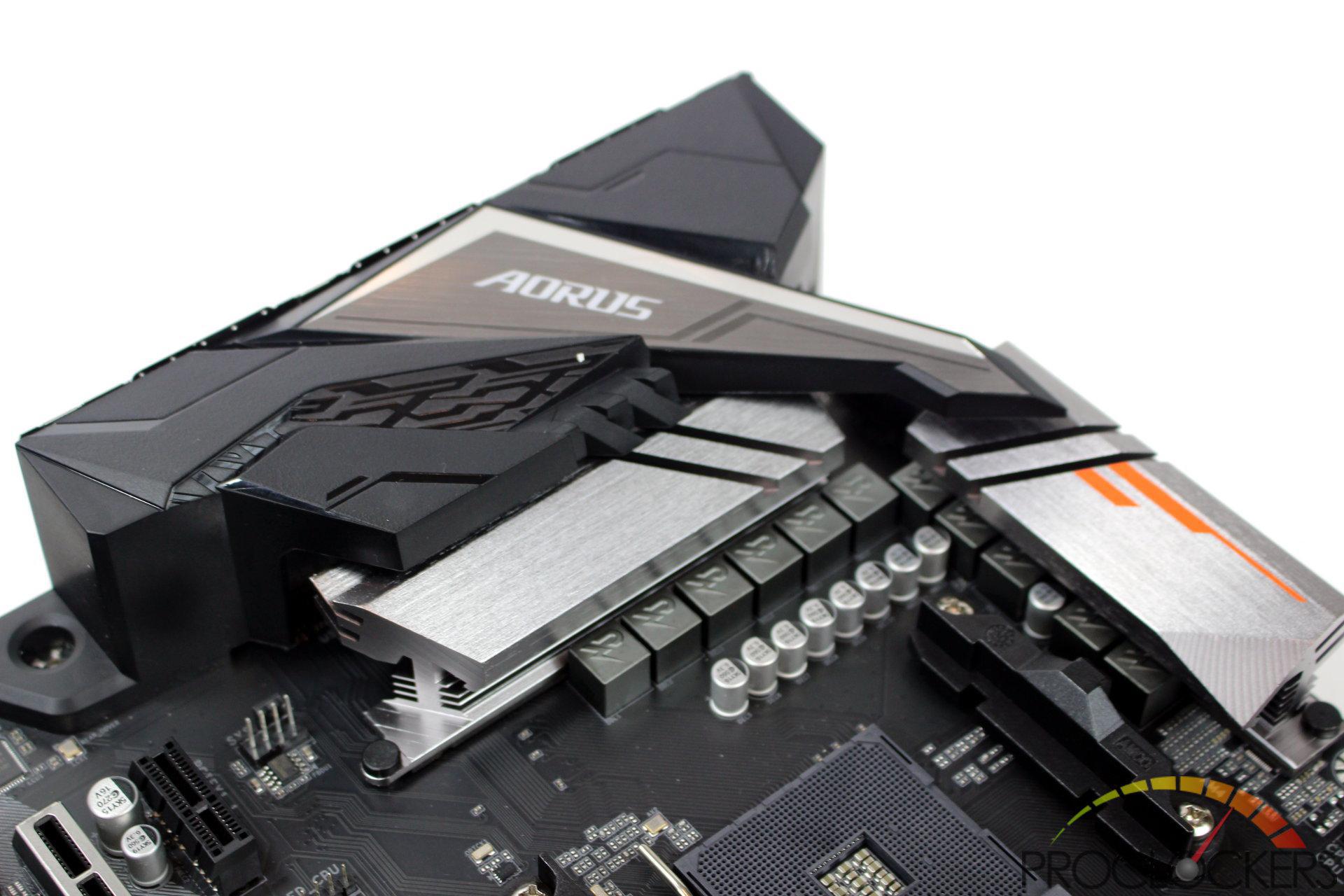Hardware
Gigabyte B450 Aorus Pro WiFi AM4 Motherboard Review
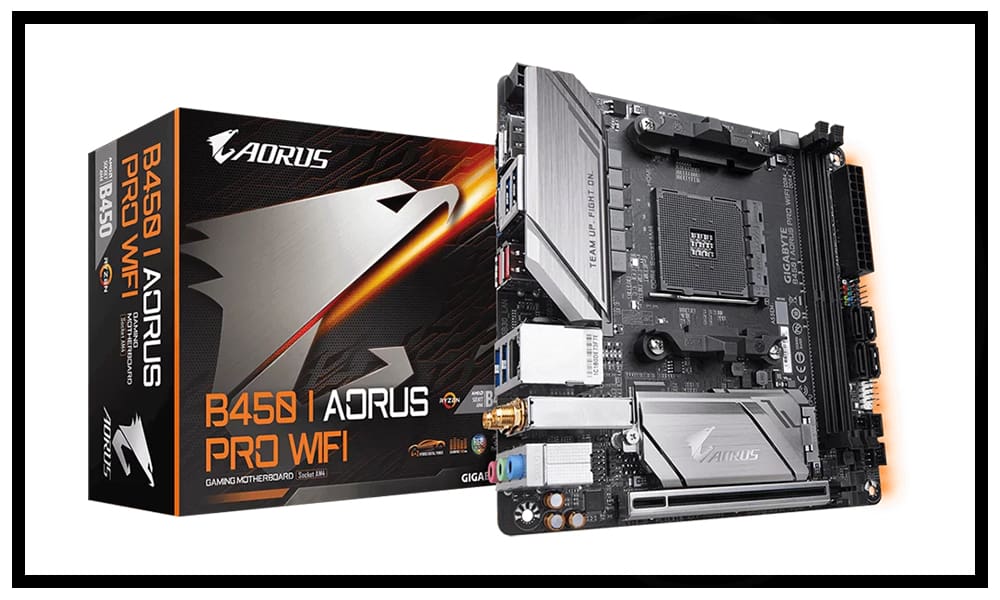
Introduction
AMD’s B450 chipset is one of those rare gems that only comes along every couple of generations. Every bit as capable and unlocked as its bigger X470 sibling, you give up almost nothing with the exception of spending more to buy a board.
Gigabyte has capitalized on this with the affordable but well equipped B450 Aorus Pro WIFI. Featuring that legendary Aorus styling with the best connectivity on the market along with Ultra Durable reliability.
ProClockers would like to thank Gigabyte for sending the B450 Aorus Pro WiFi over to check out!
Gigabyte’s take on the B450 Aorus Pro WiFi:
AMD B450 AORUS Motherboard with Hybrid Digital PWM, Intel® Dual Band 802.11ac WIFI, Dual M.2 with Dual Thermal Guards, Audio ALC1220-VB, Intel® GbE LAN with cFosSpeed, CEC 2019 ready
- Supports AMD 2nd Generation Ryzen™/ Ryzen™ with Radeon™ Vega Graphics/ 1st Generation Ryzen™ Processors
- Dual Channel Non-ECC Unbuffered DDR4, 4 DIMMs
- Intel® Dual Band 802.11ac WIFI & BT 4.2
- HDMI, DVI-D Ports for Multiple Display
- Integrated I/O Shield of Ultra Durable™ Design
- Dual Ultra-Fast NVMe PCIe Gen3 M.2 (x4, x2) with Dual Thermal Guards
- ALC1220-VB Enhanced 114dB(Rear) / 110dB(Front) SNR in Microphone with WIMA Audio Capacitors
- RGB FUSION with Multi-Zone LED Light Show Design, Supports Digital LED & RGB LED Strips
- Intel® GbE LAN with cFosSpeed Internet Accelerator Software
- Smart Fan 5 Features 6 Temperature Sensors and 5 Hybrid Fan Headers with FAN STOP
- APP Center Including EasyTune™ and Cloud Station™ Utilities
- CEC 2019 Ready, Save Power with a Single Click

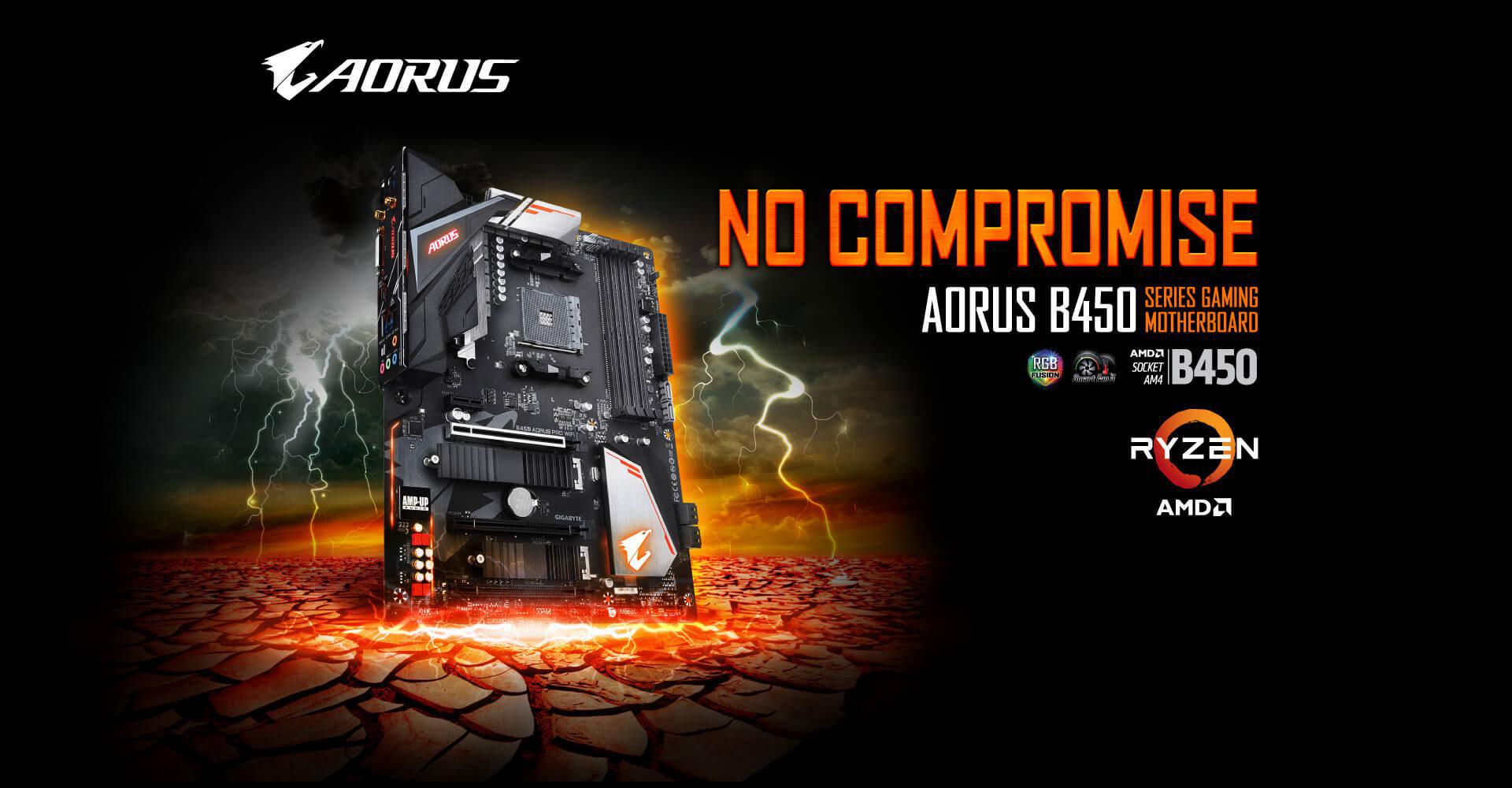
Features & Specifications
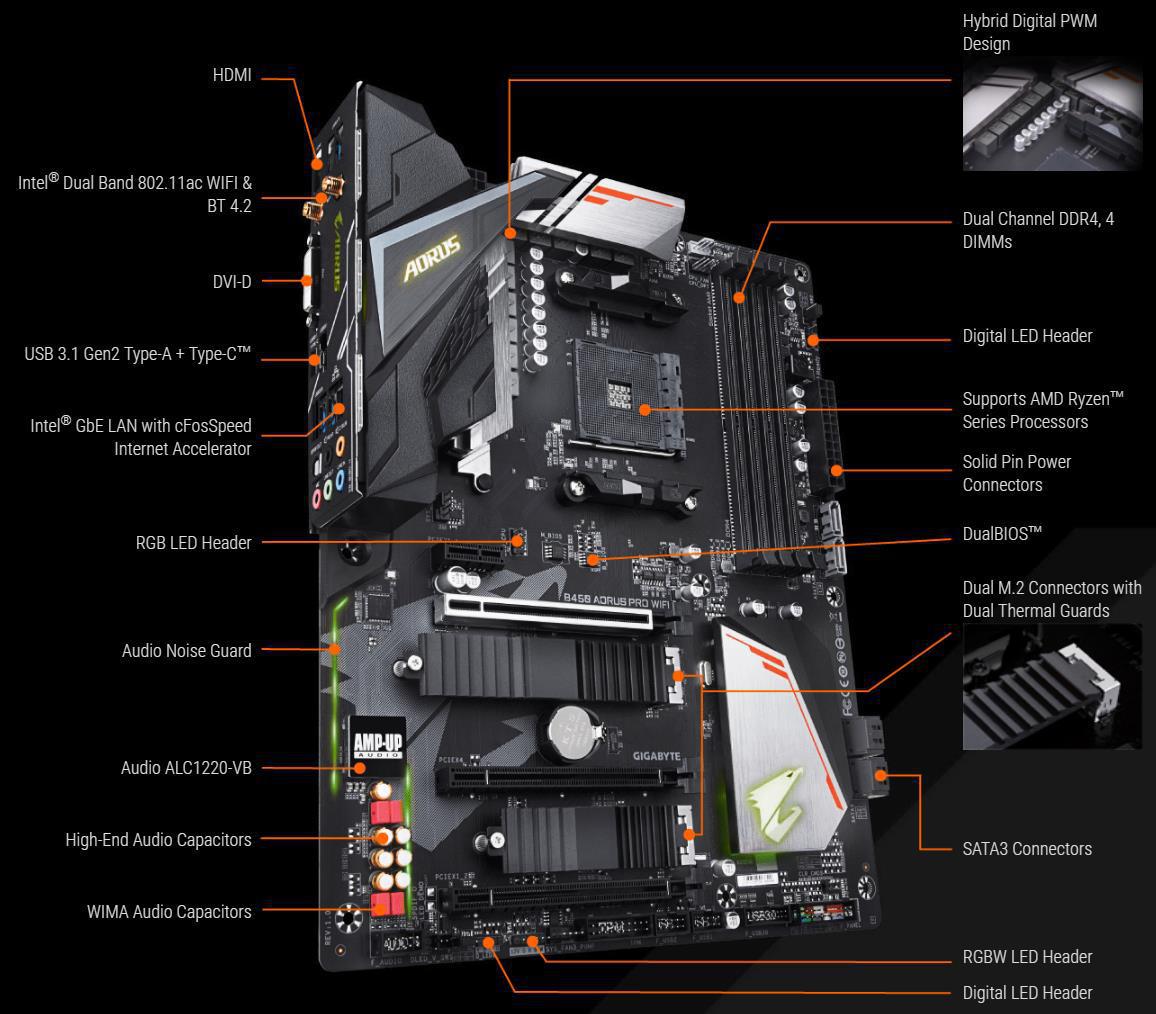

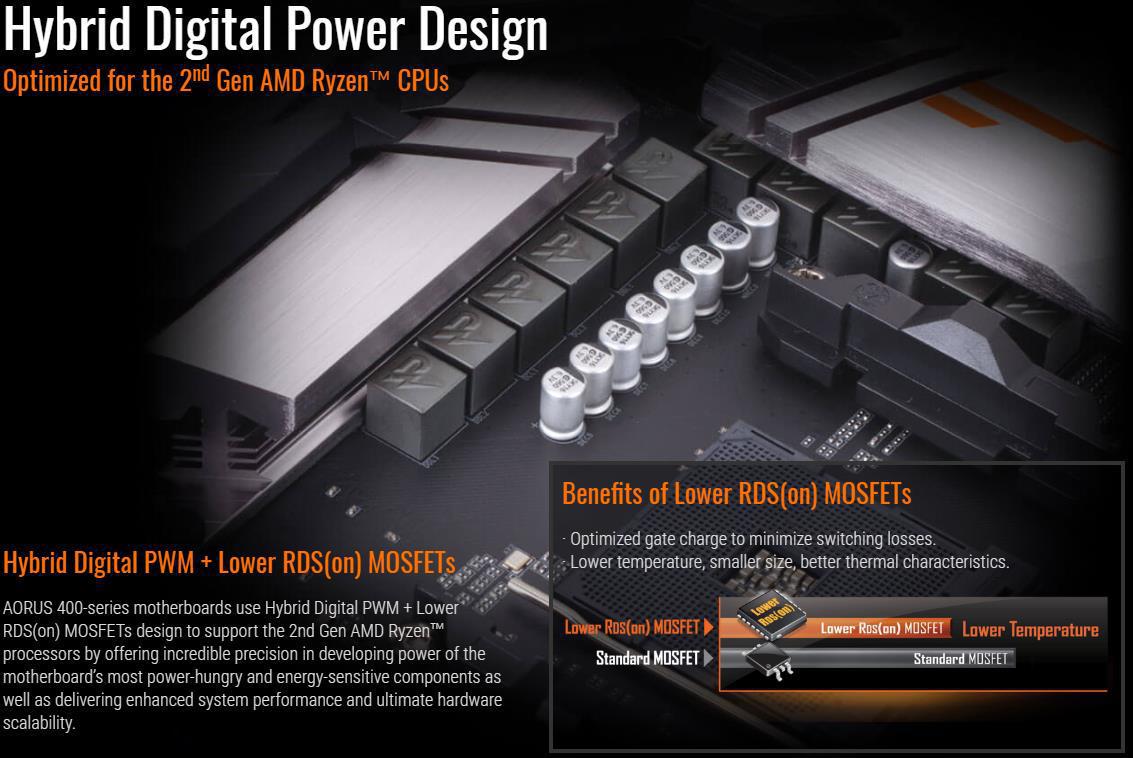
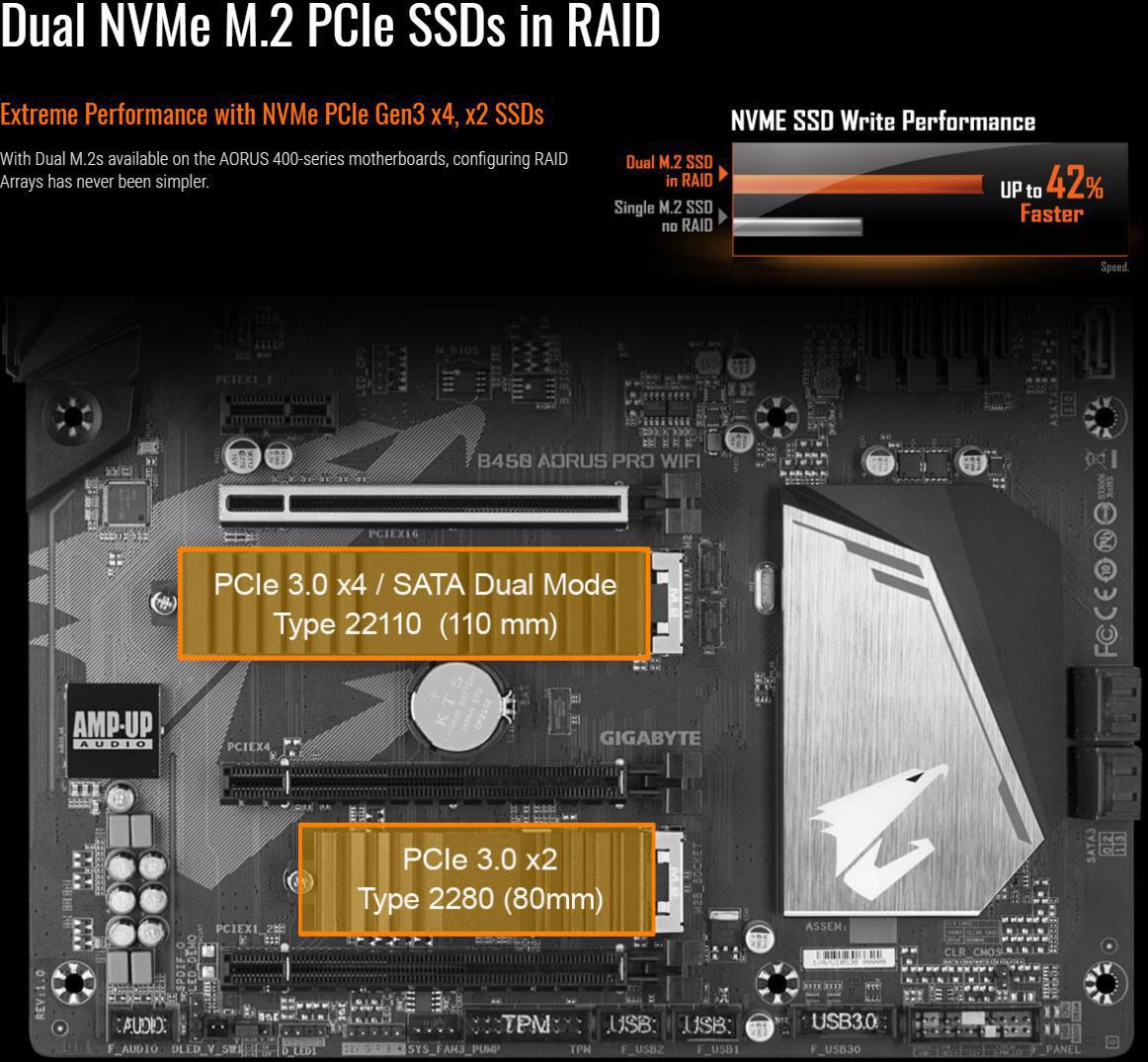
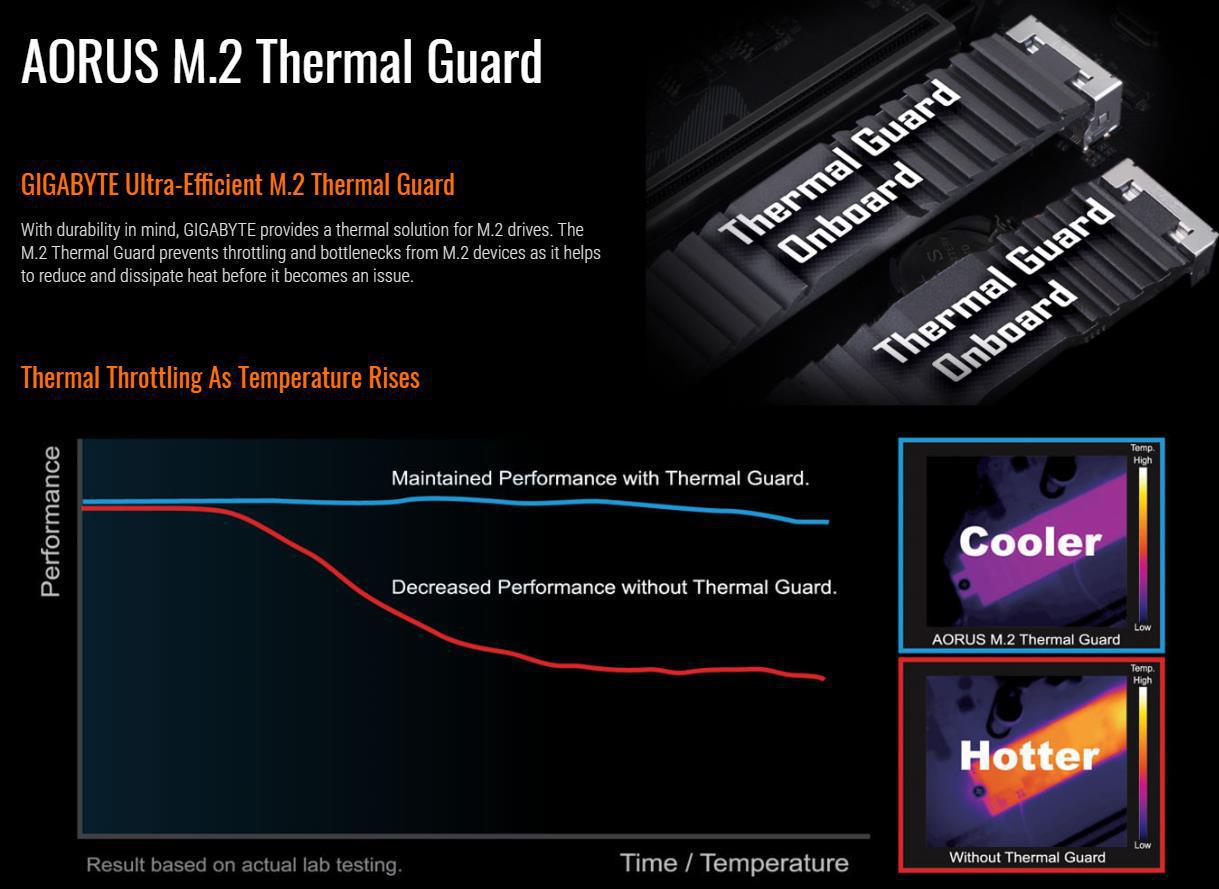

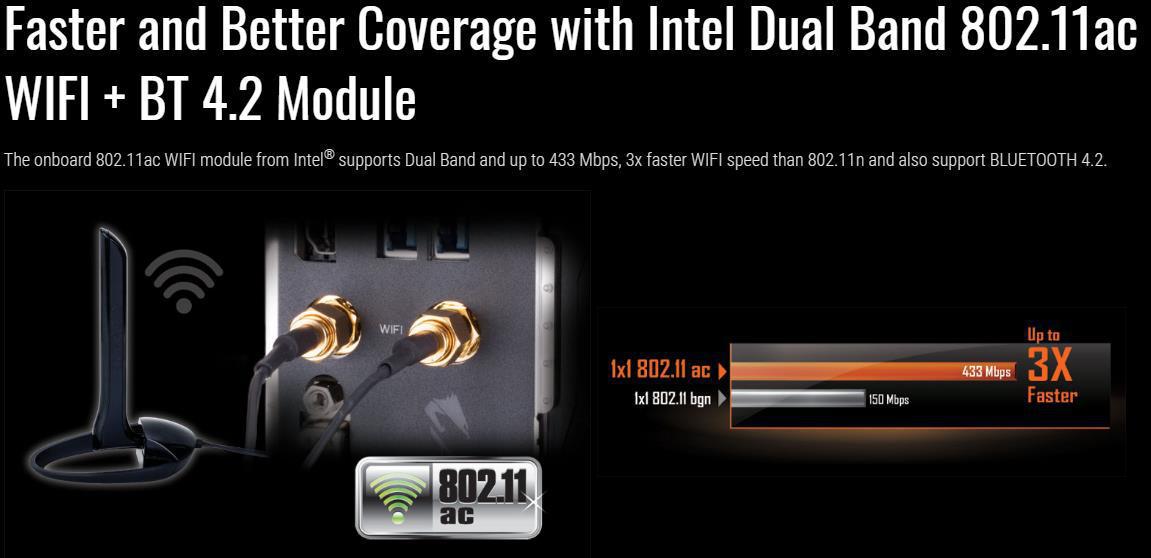
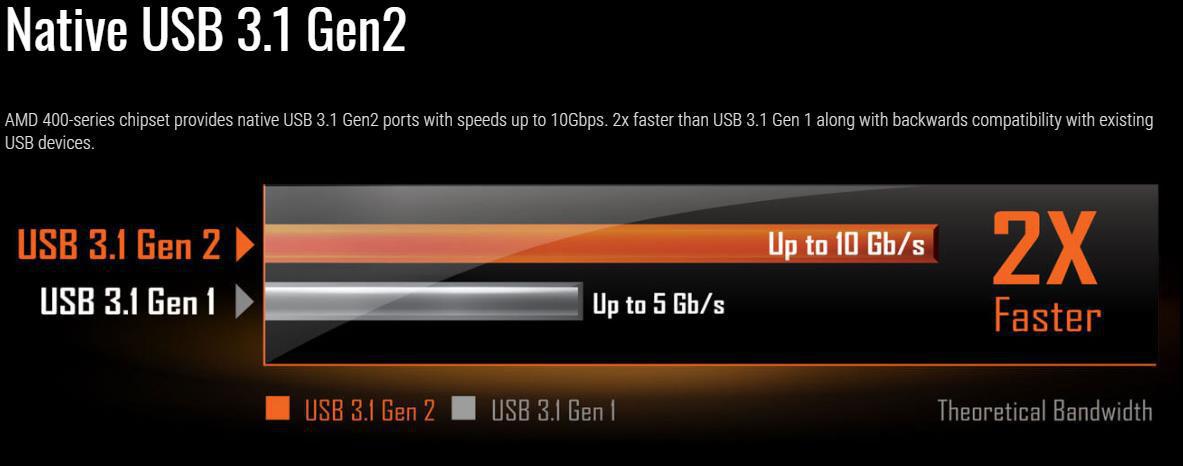
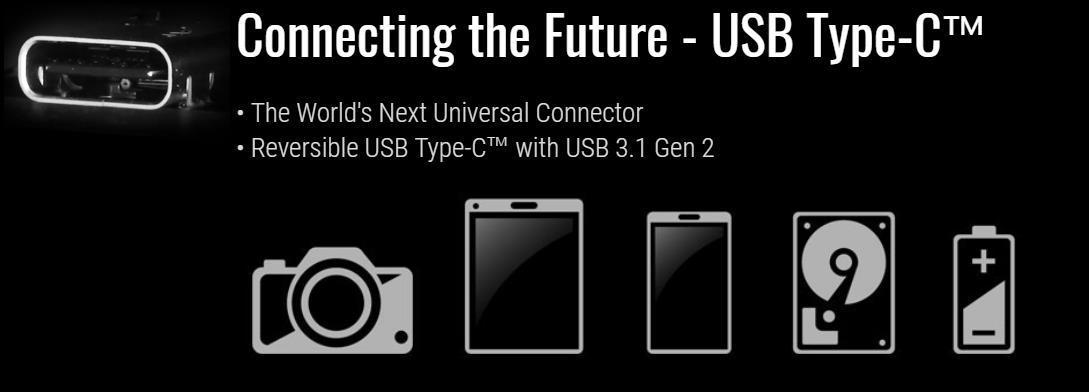
Intel ® GbE LAN with cFosSpeed Internet Accelerator Networking
Intel ® GbE LAN features cFosSpeed, a network traffic management application which helps to improve network latency and maintain low ping times to deliver better responsiveness in crowded LAN environments.
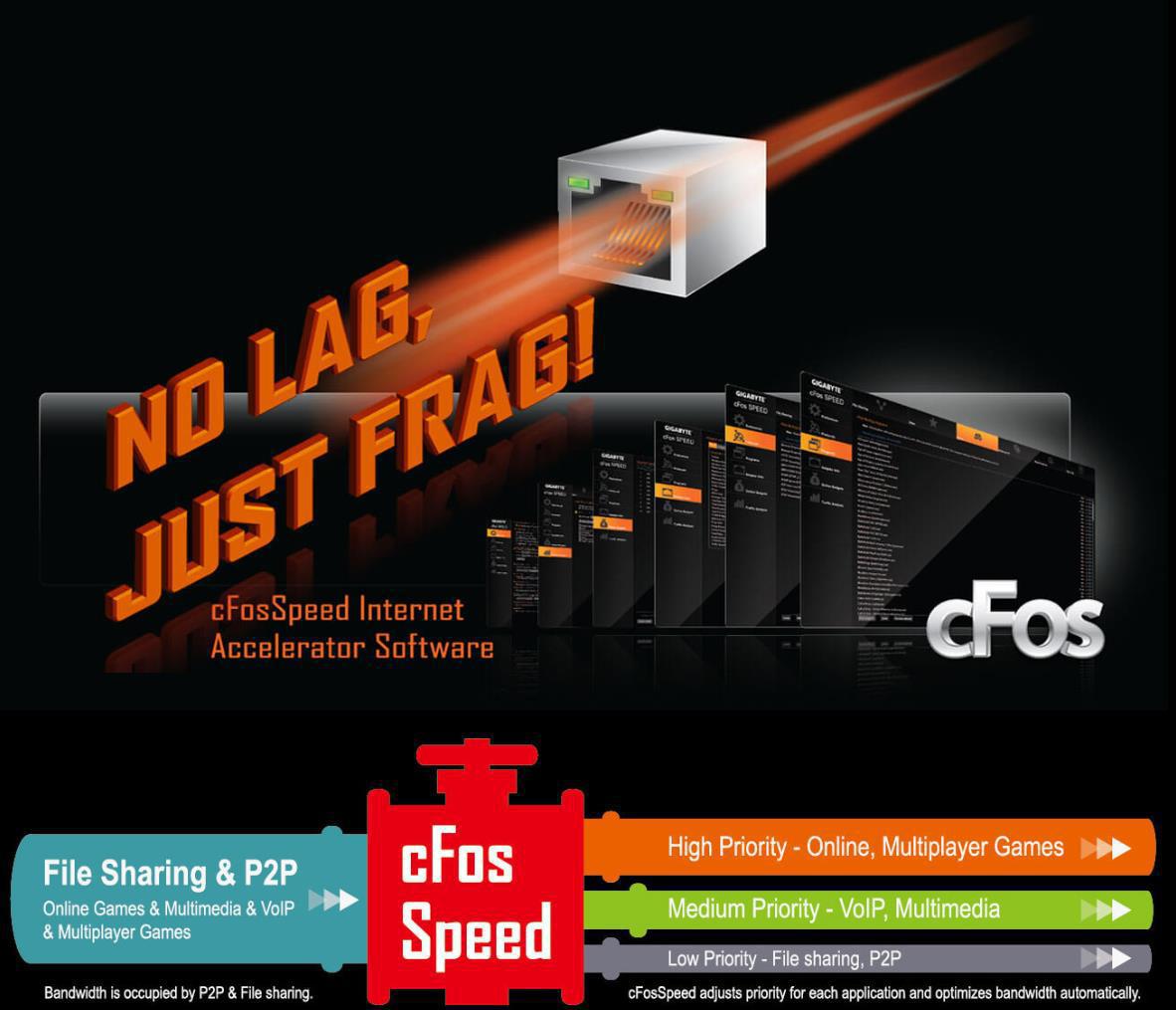

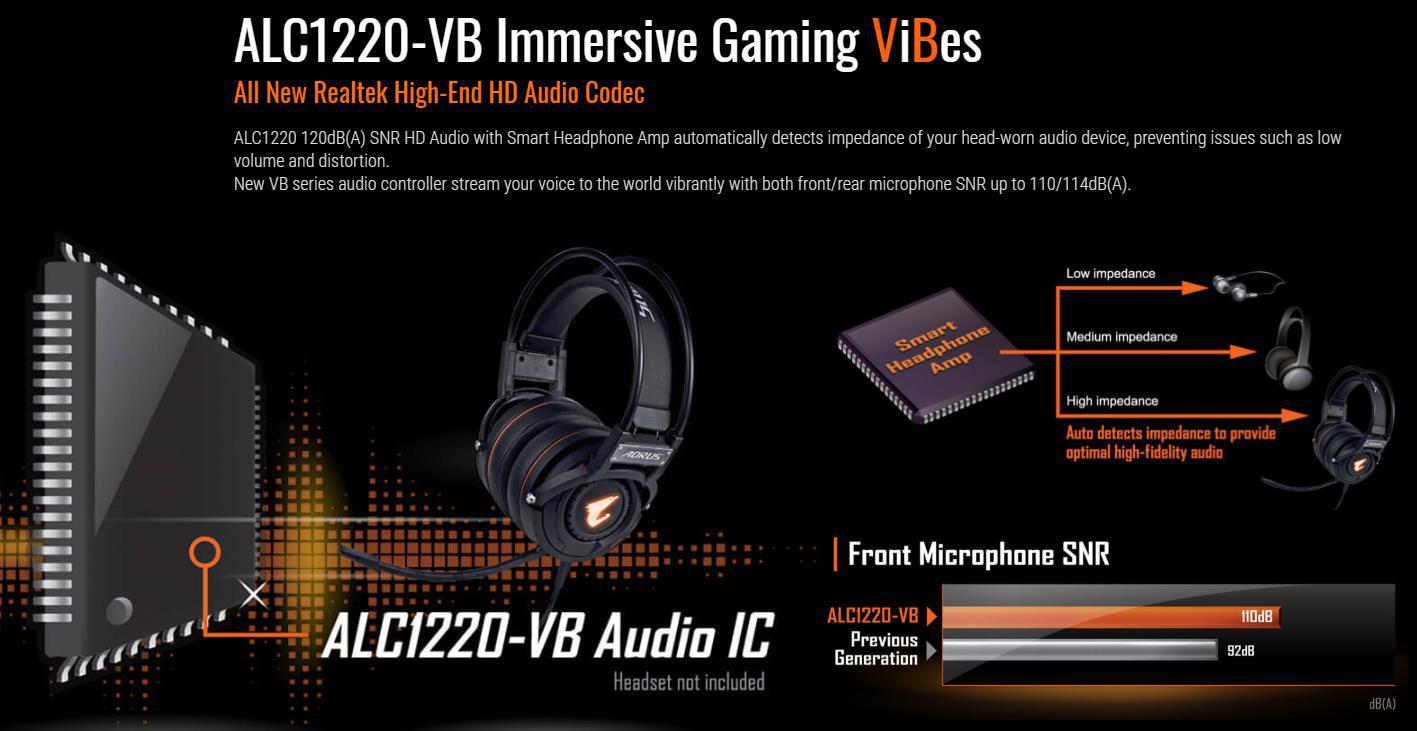
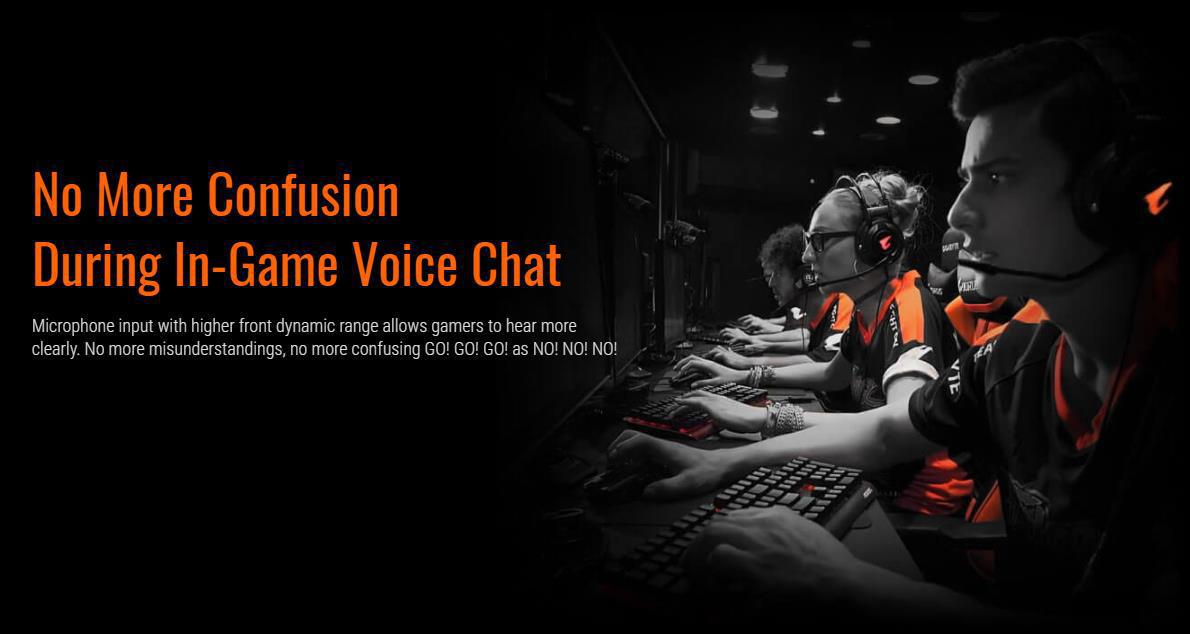
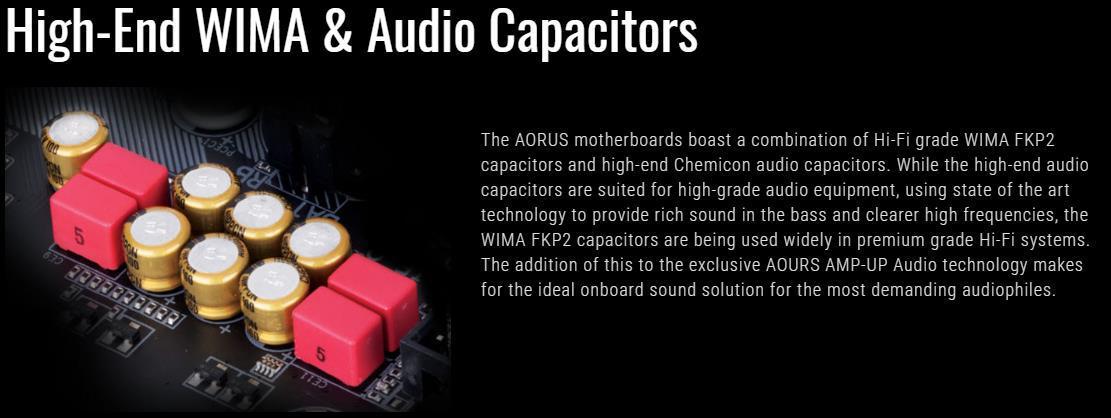

RGB Fusion with Digital LEDs Support
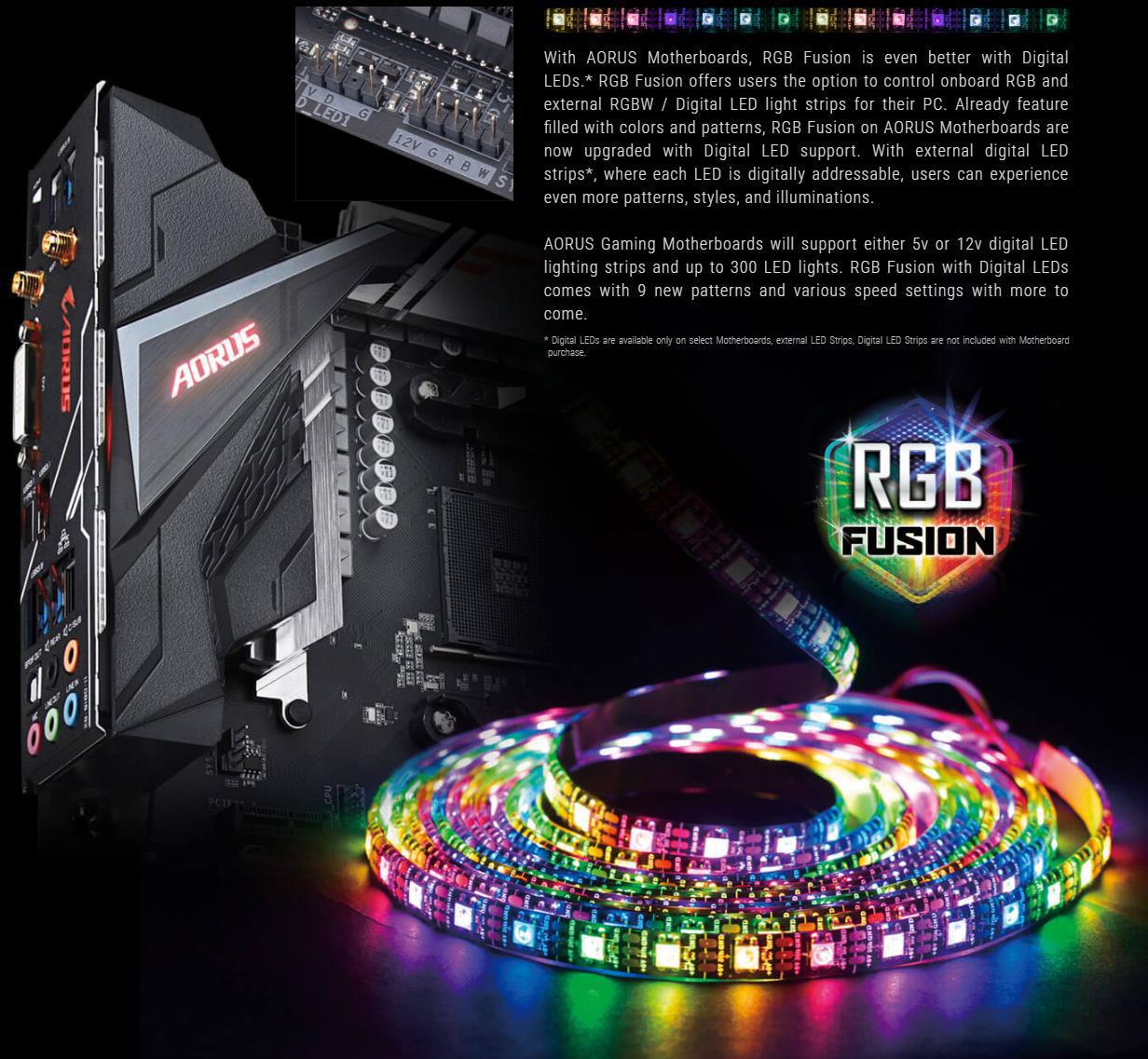
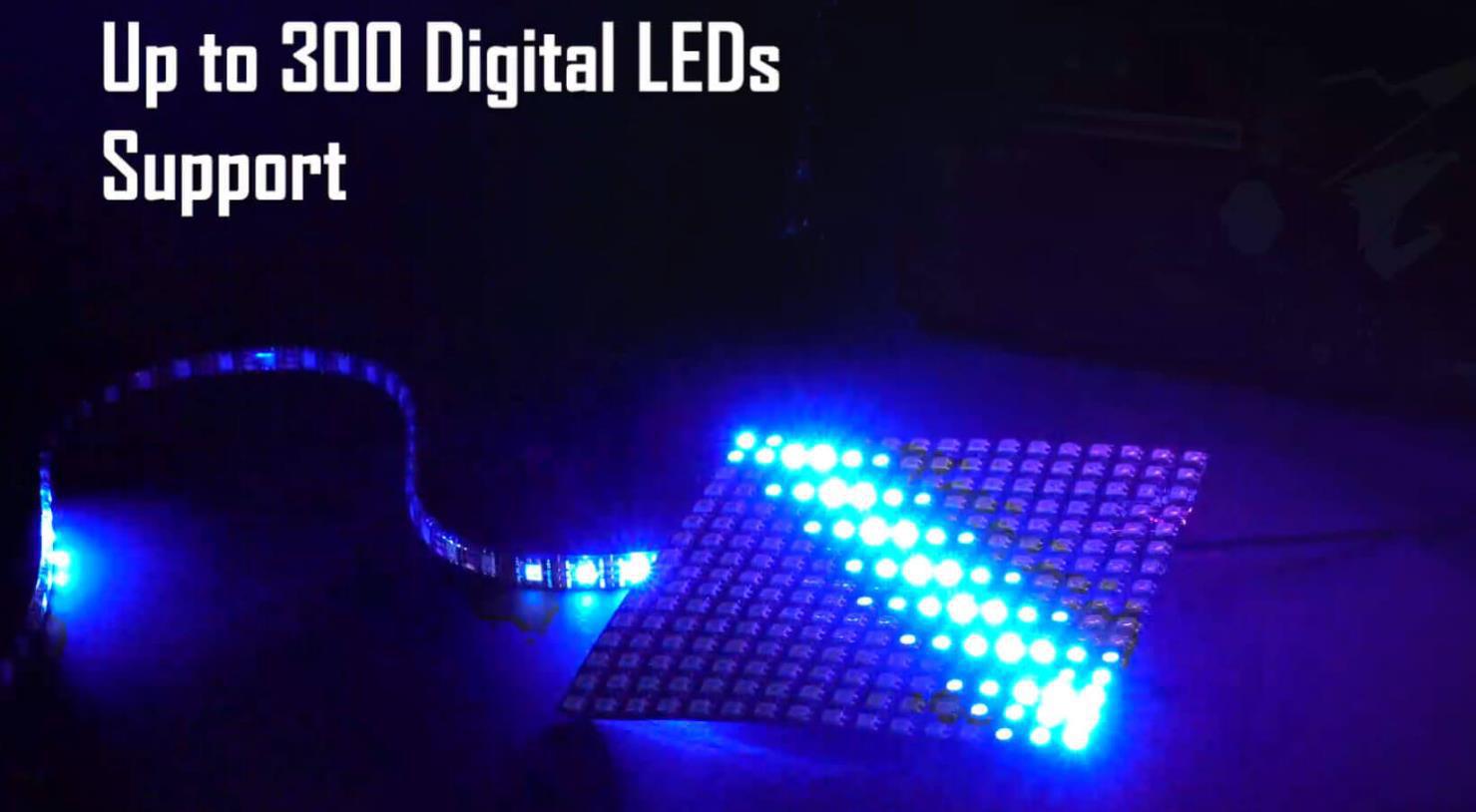
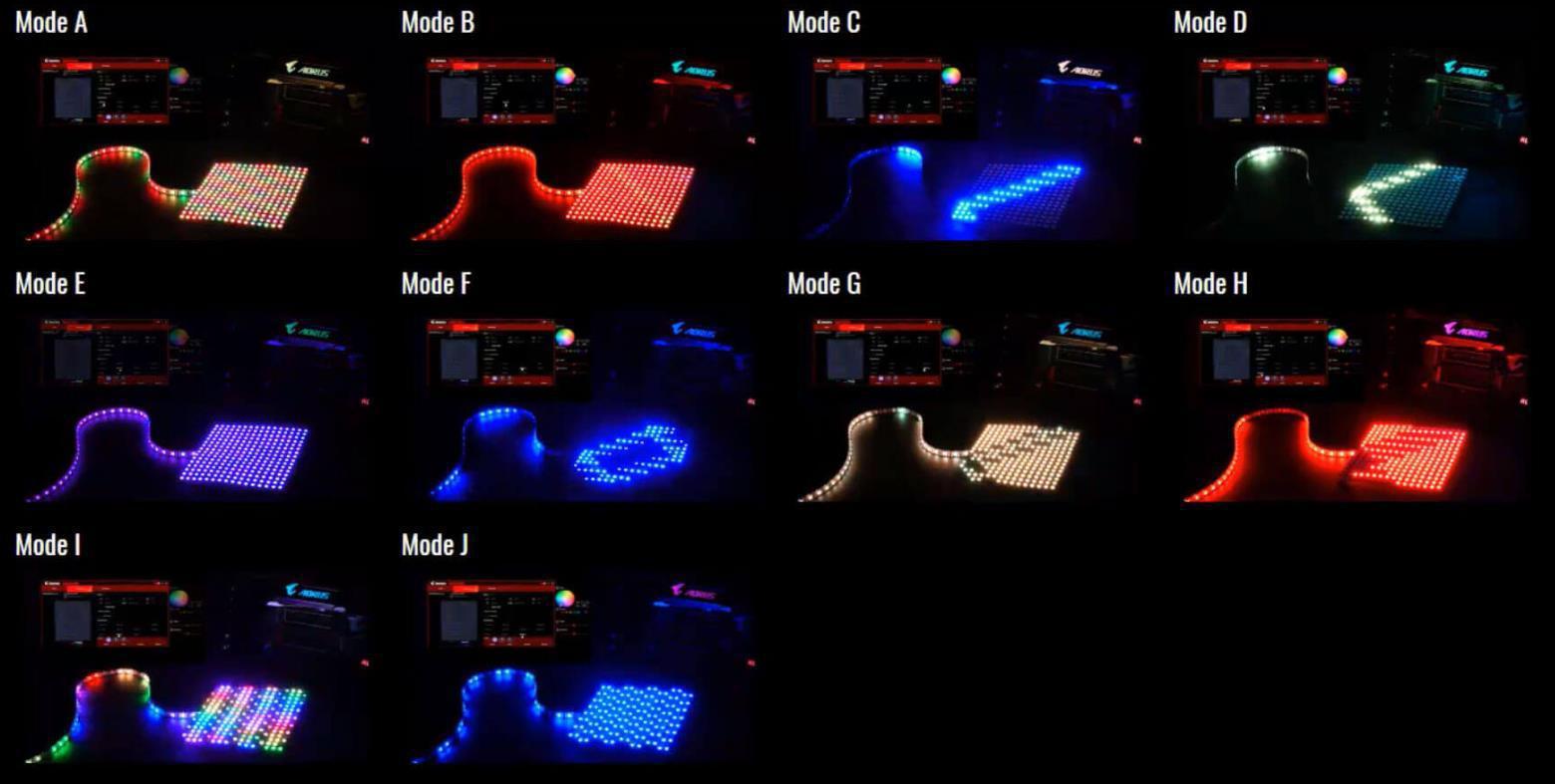
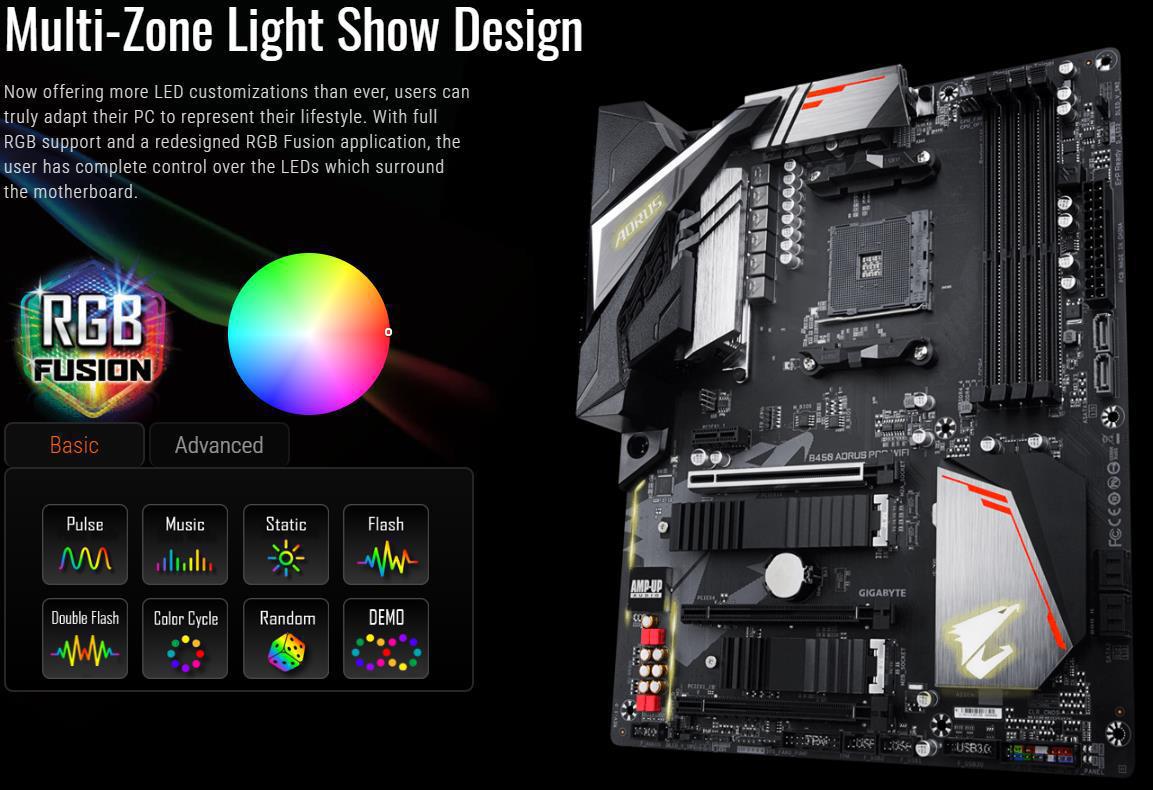
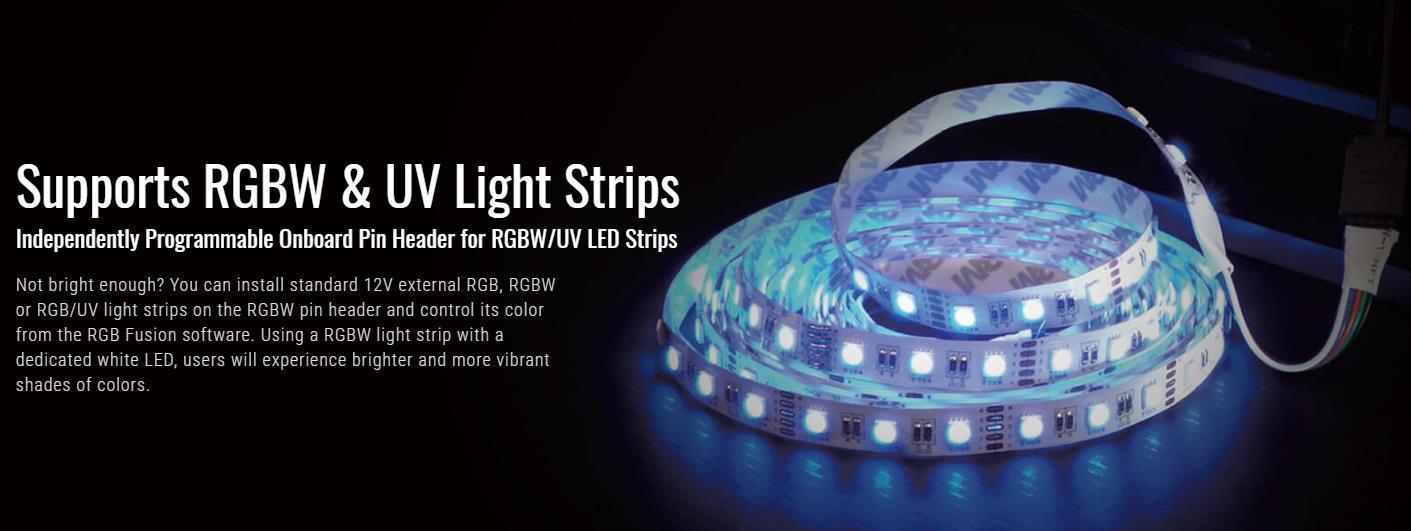
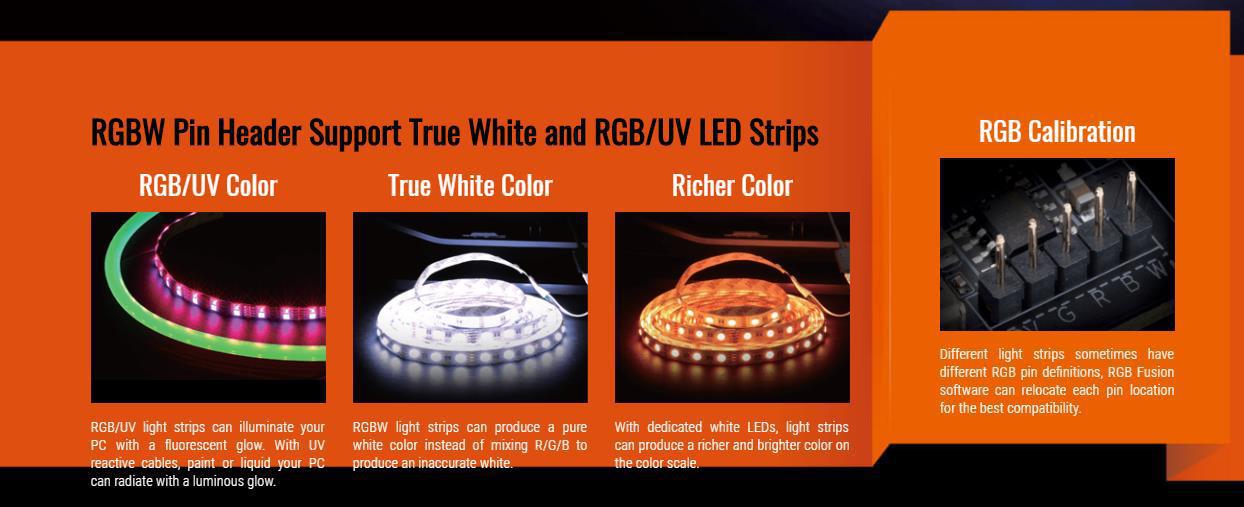

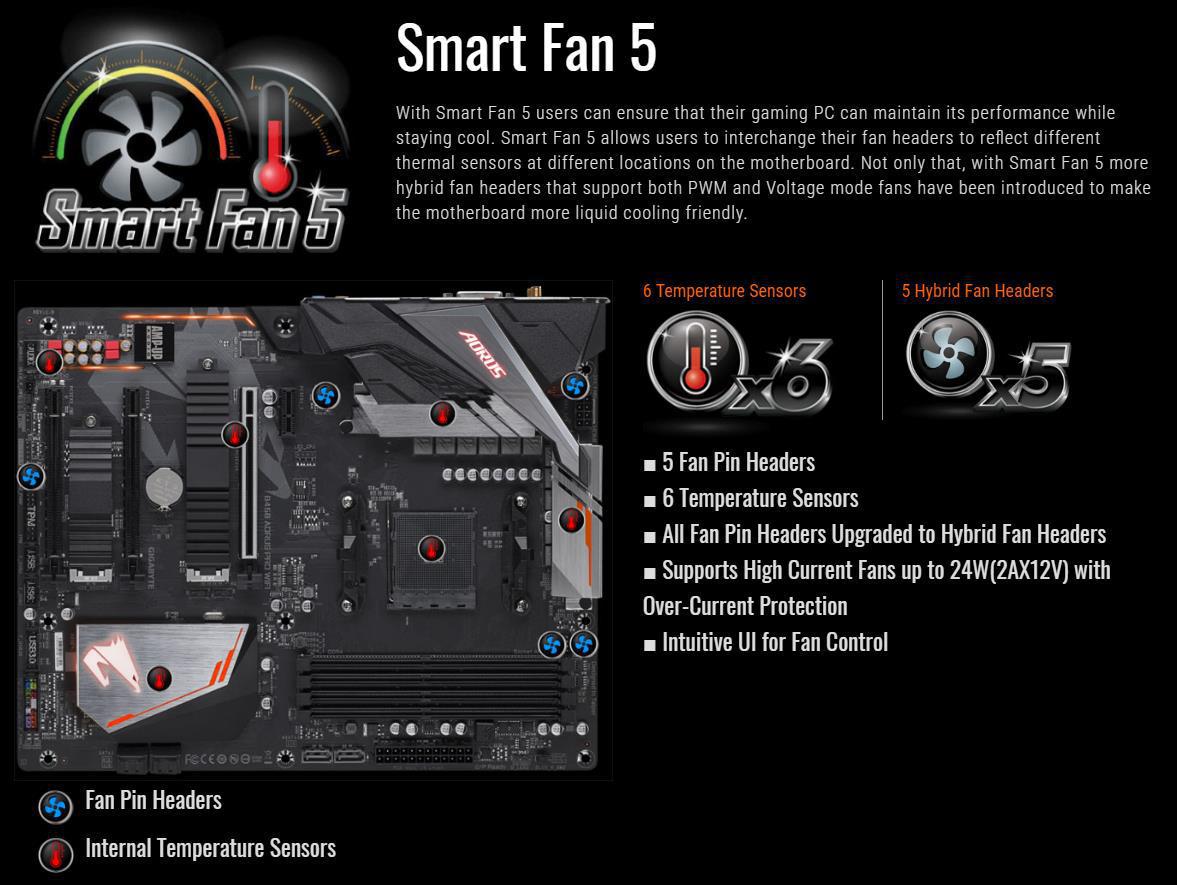
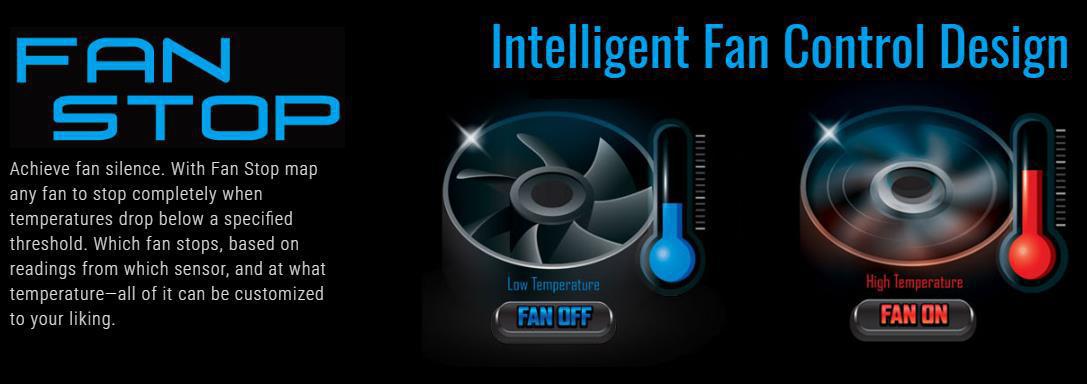
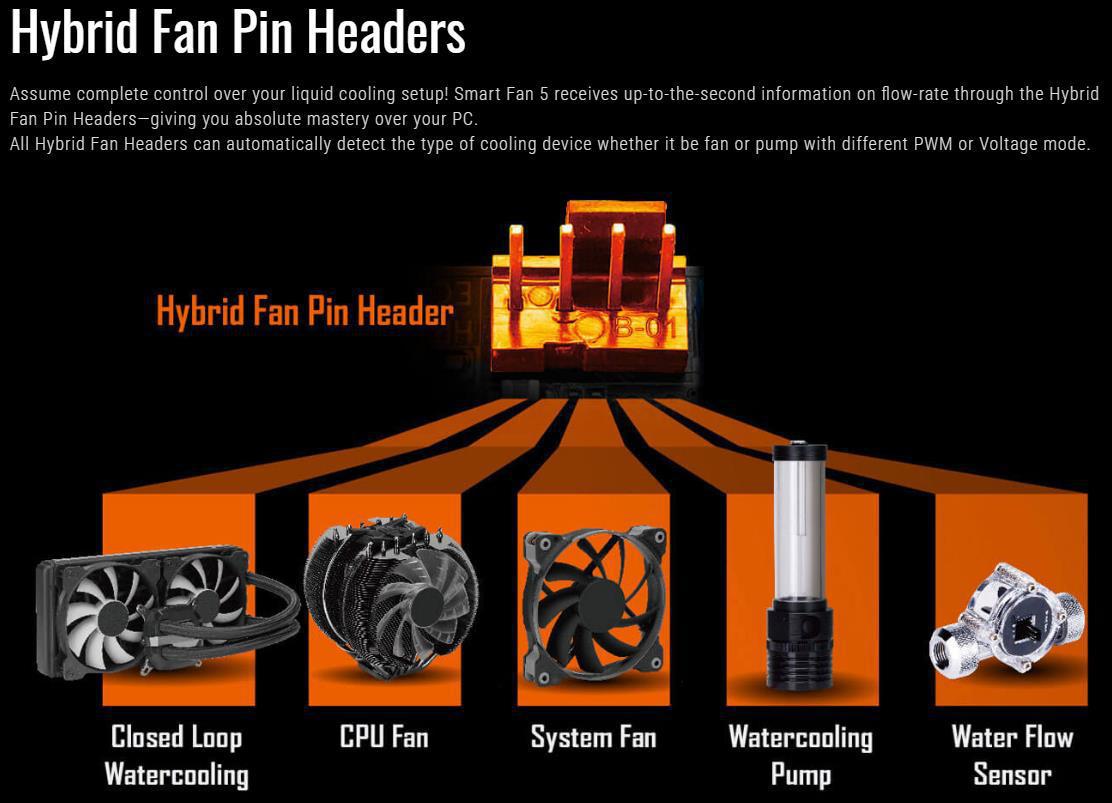
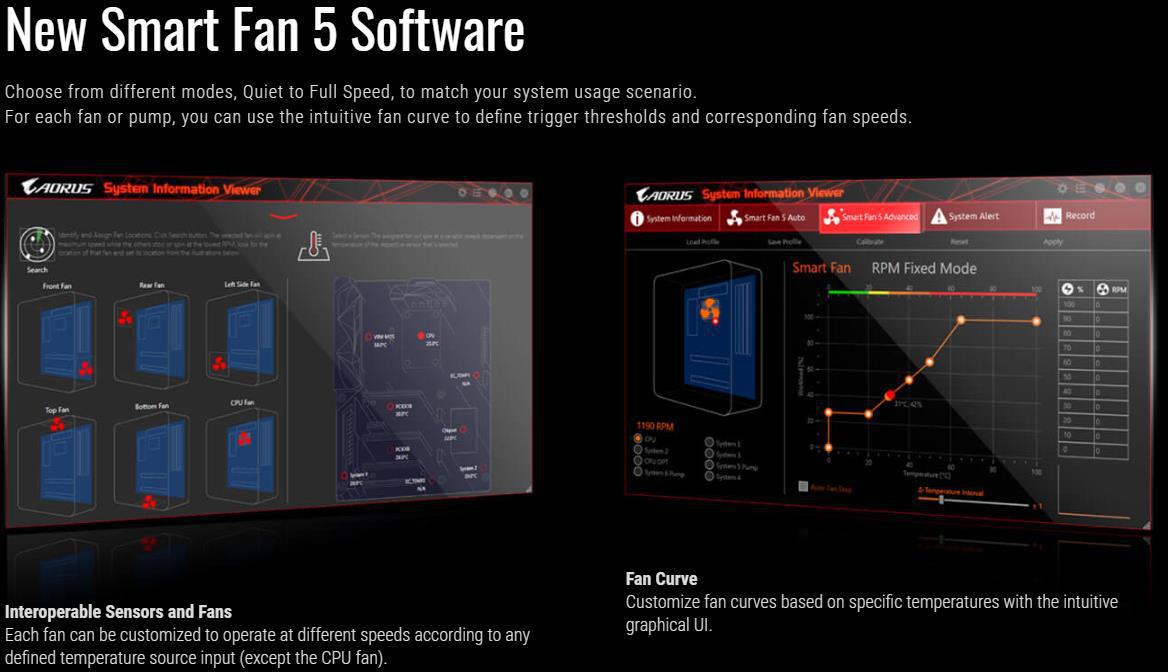

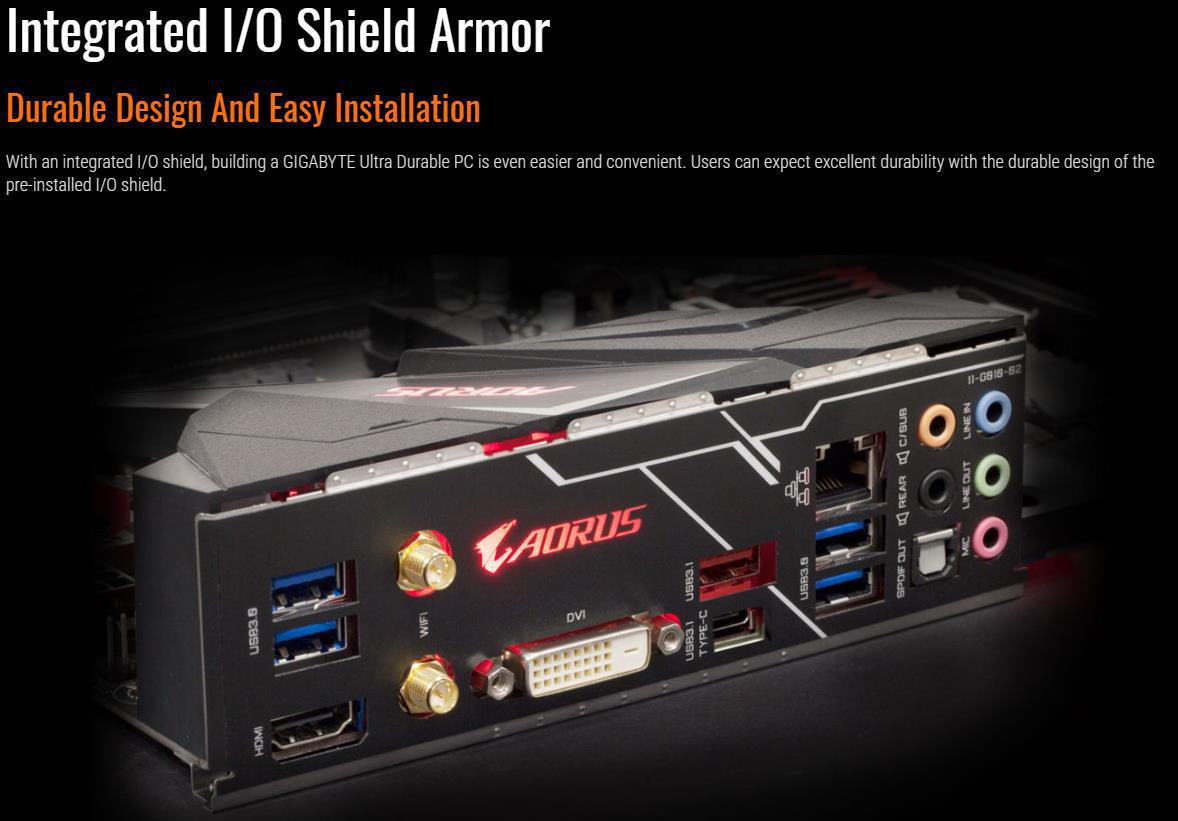
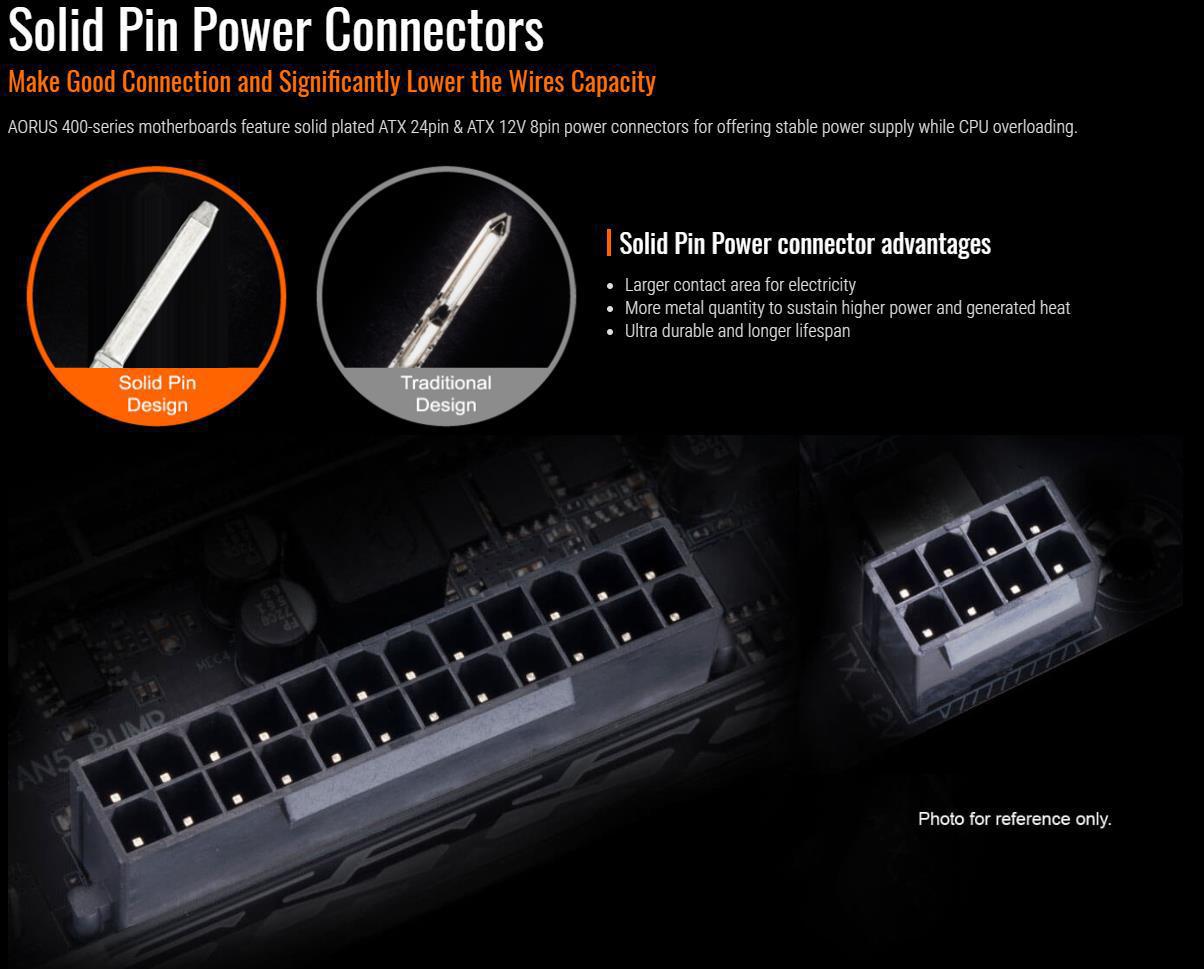
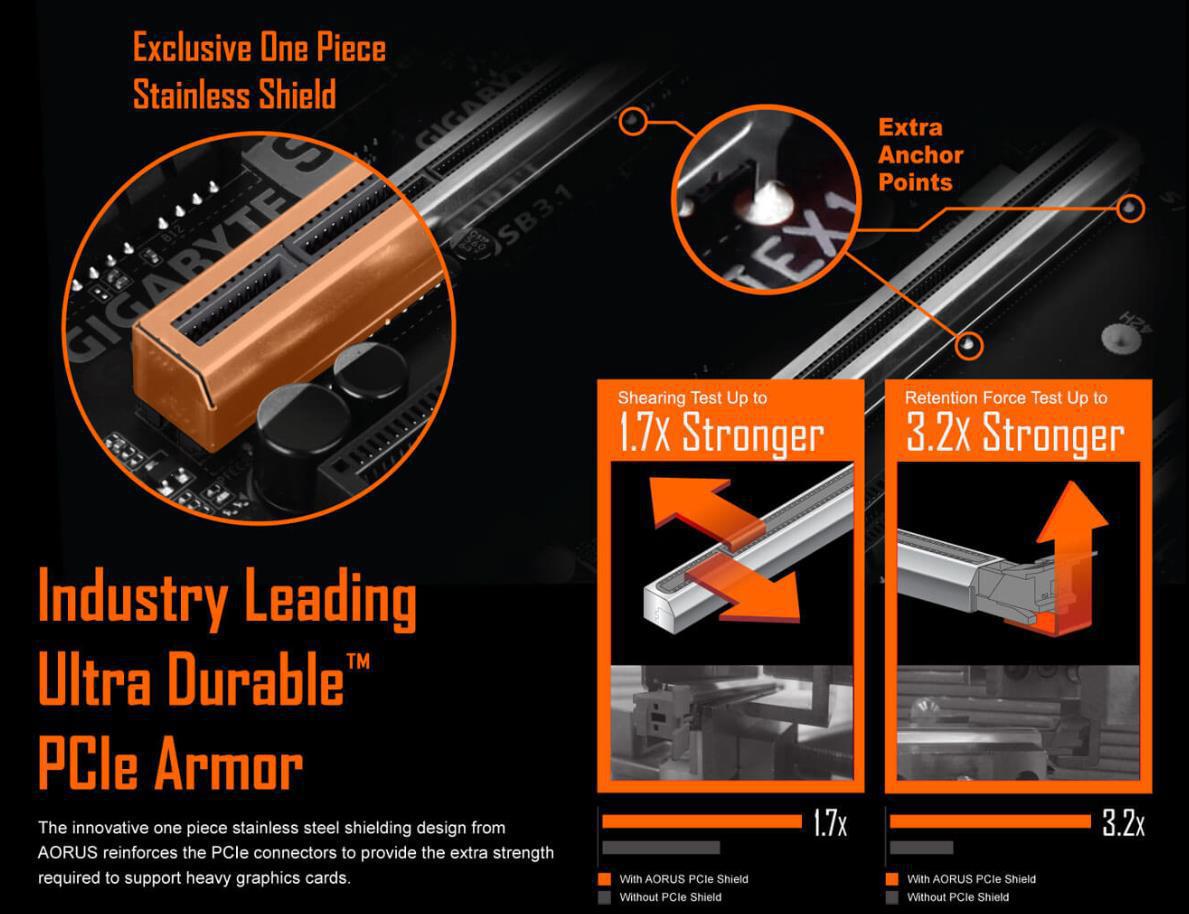
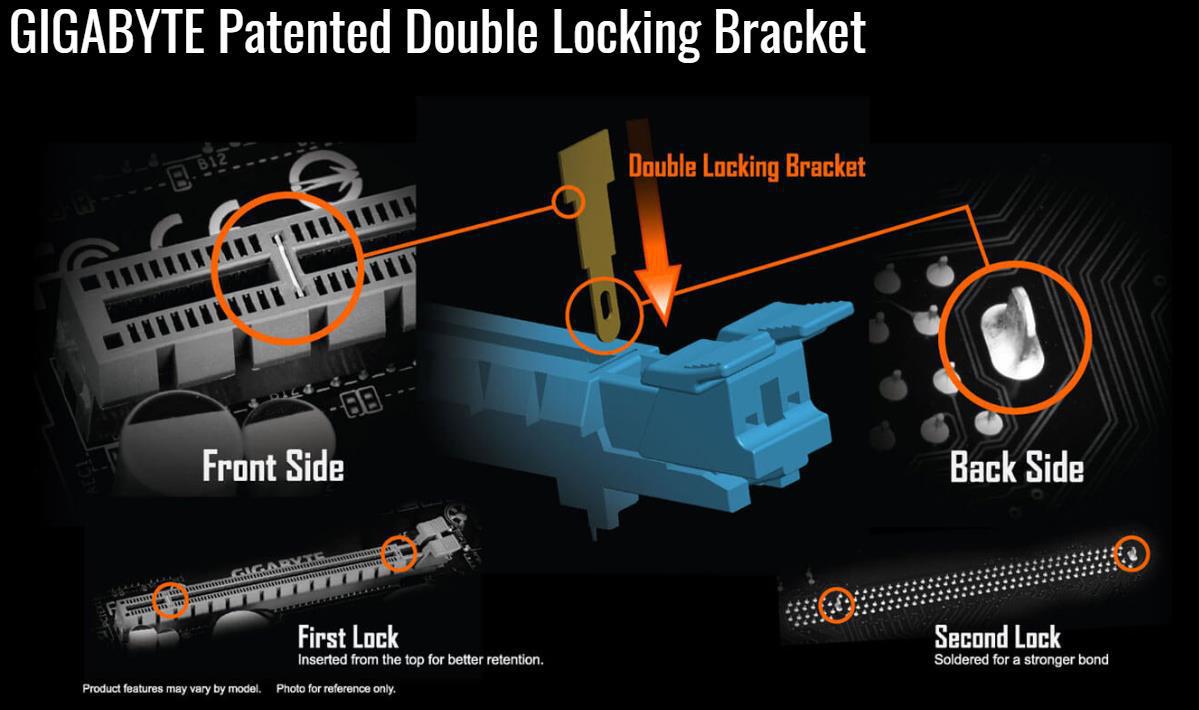

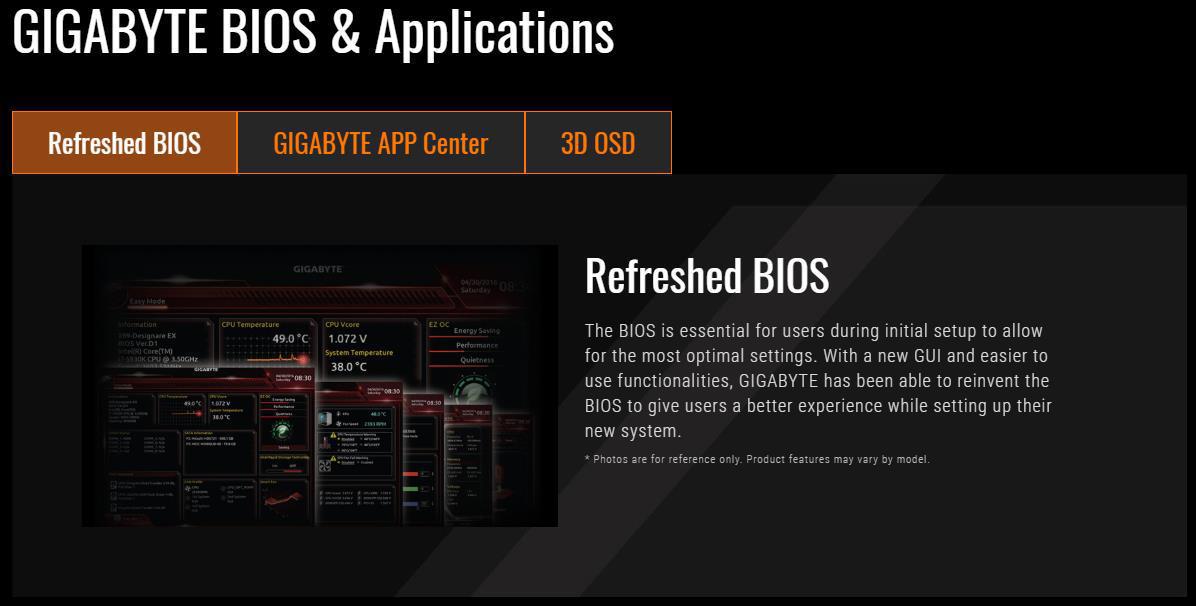

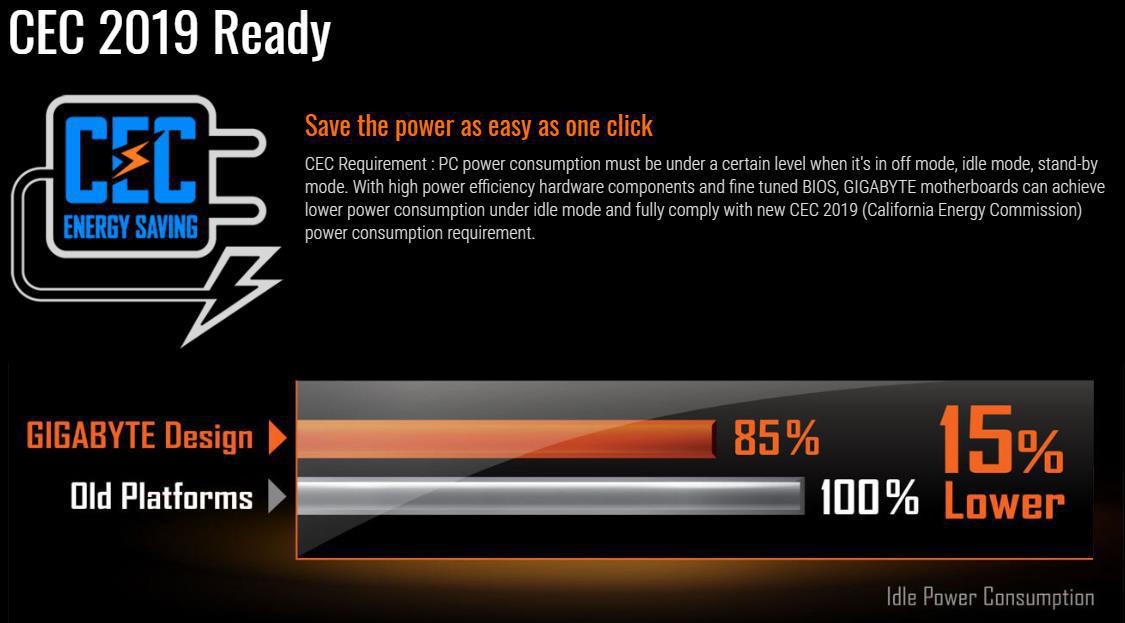
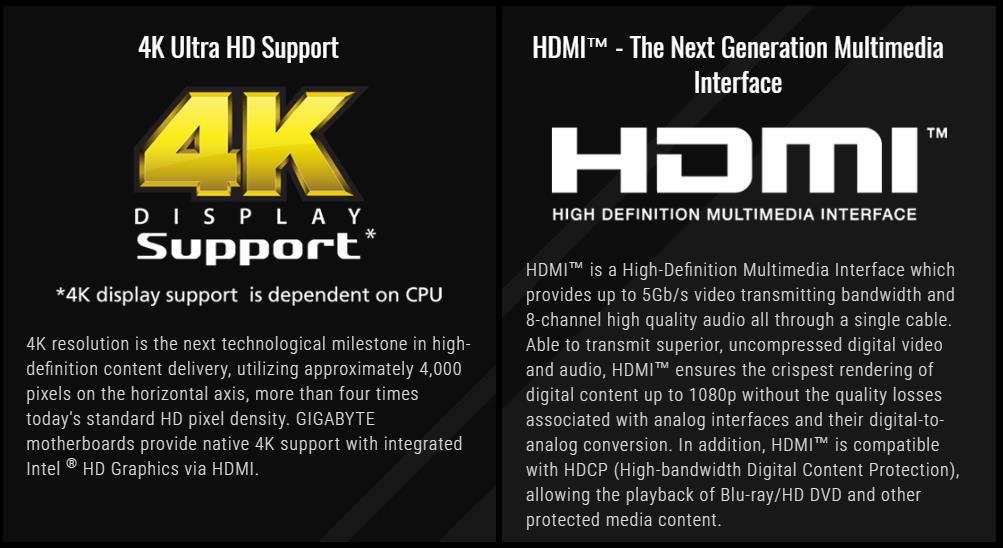
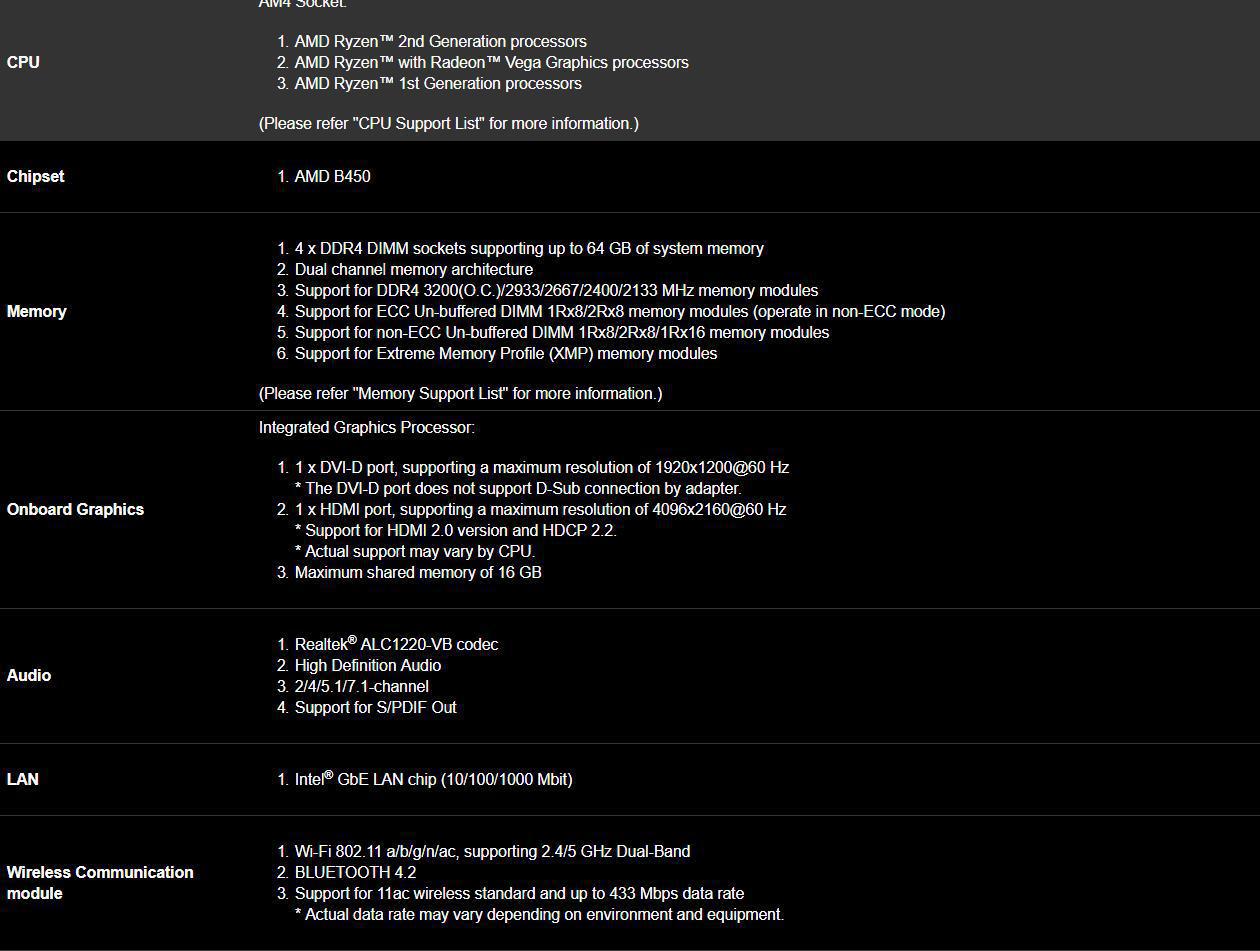
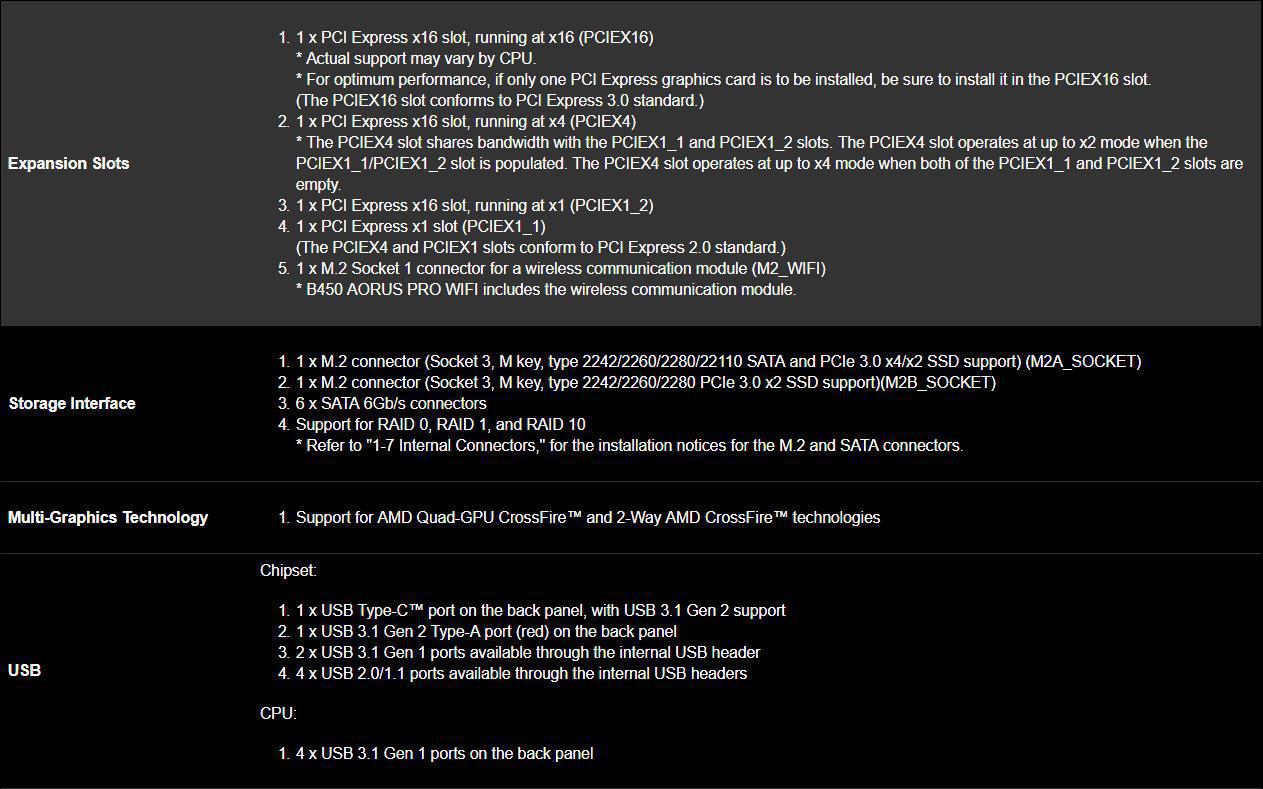
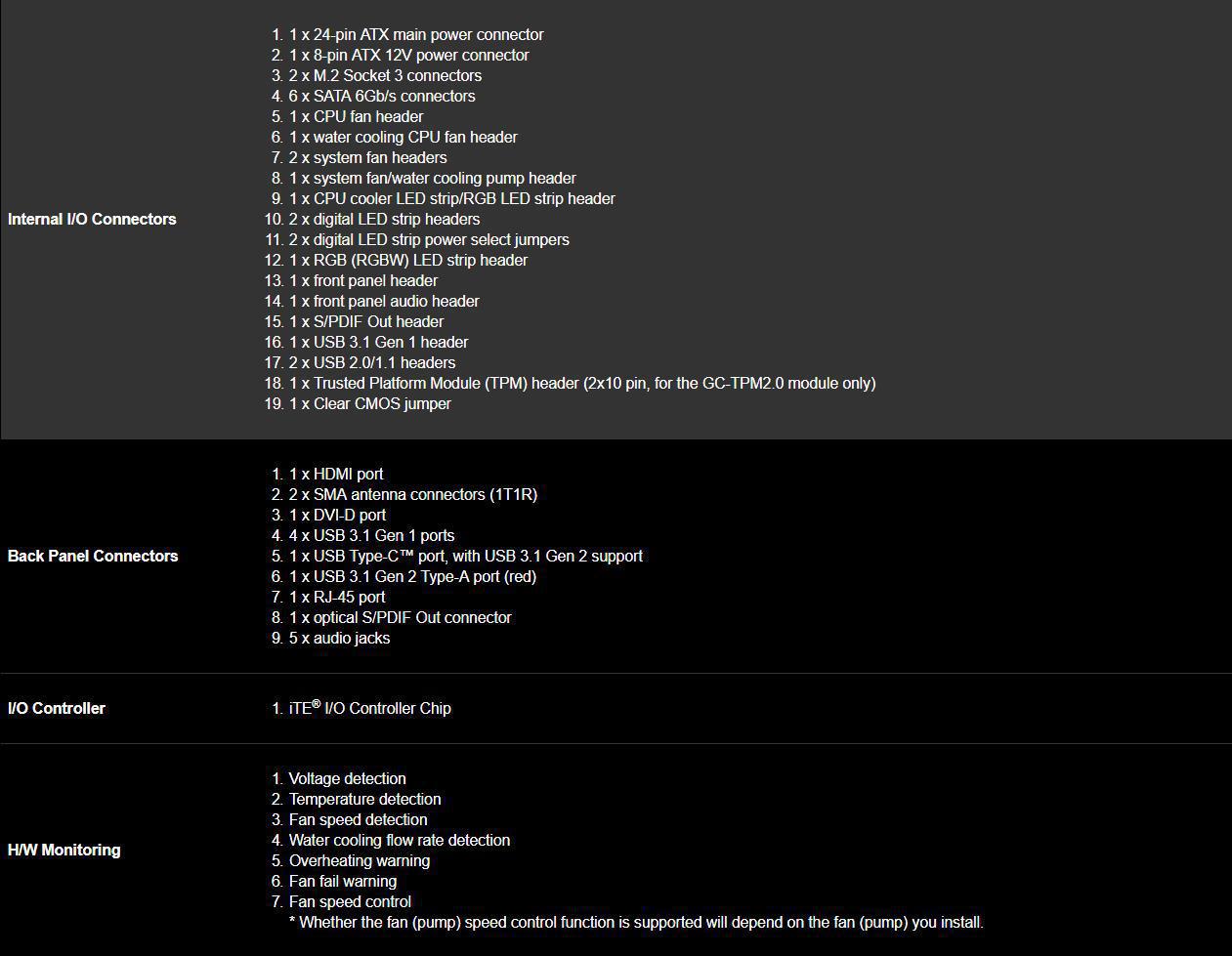
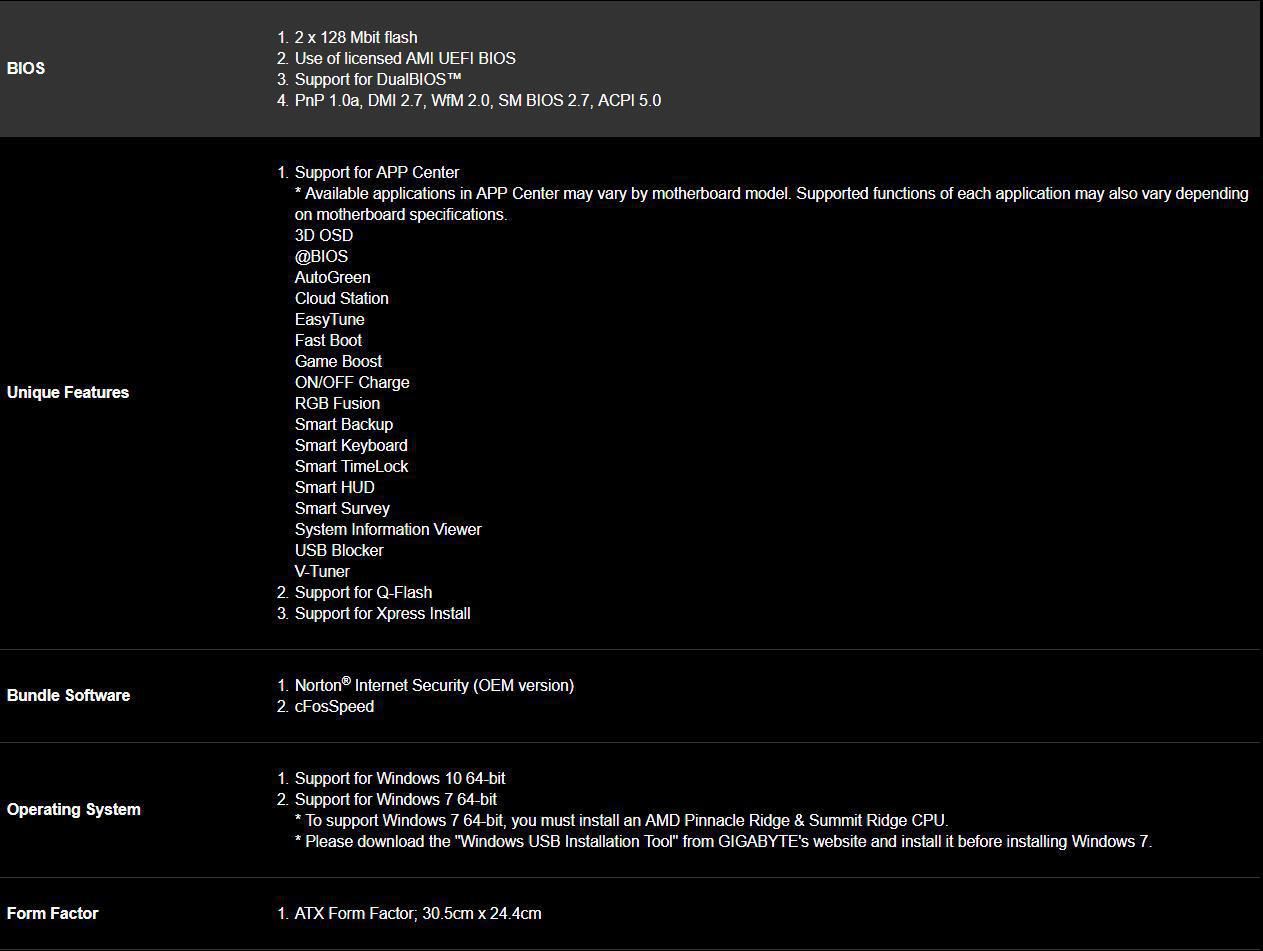
Packaging & Unboxing
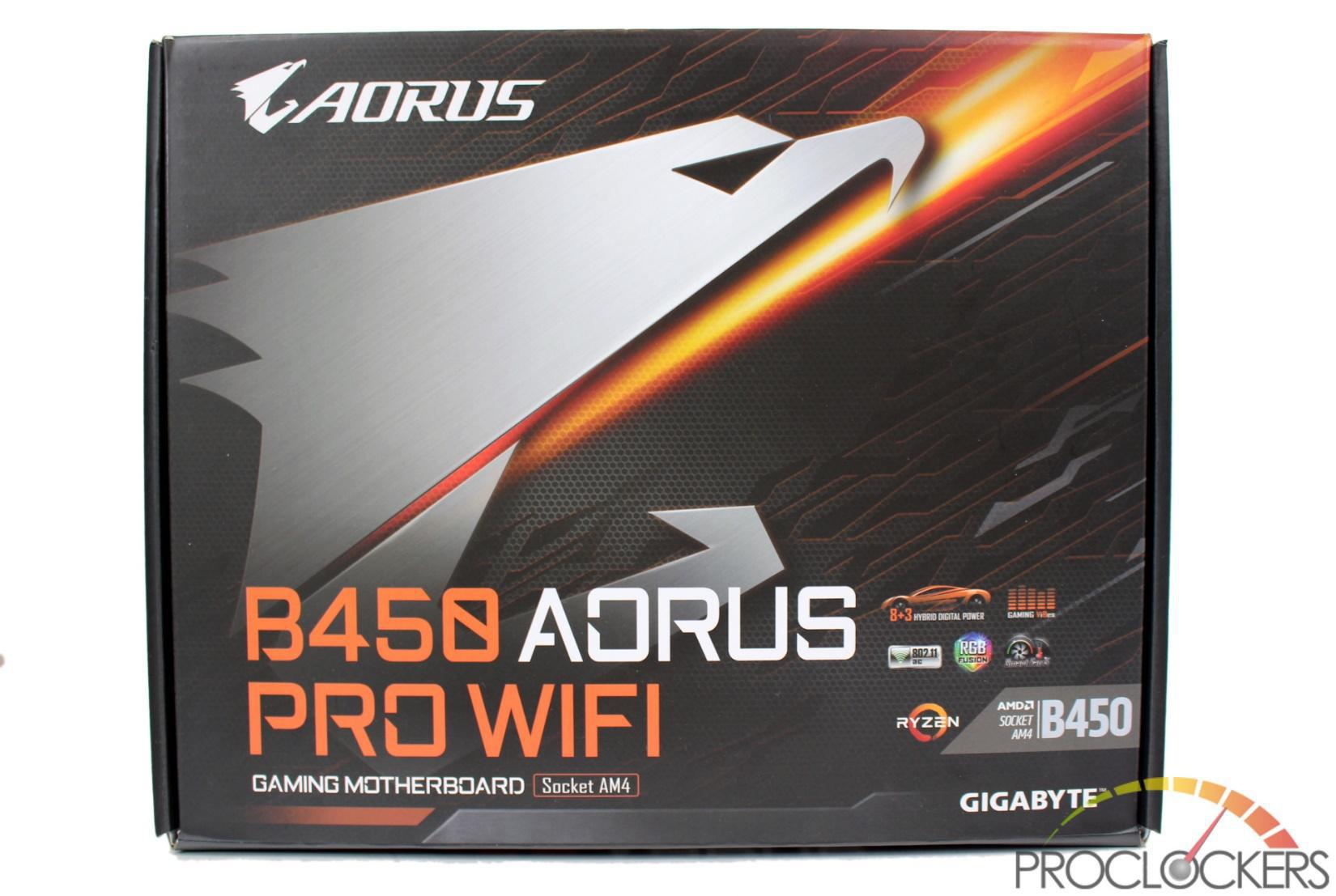
Like many of the Aorus branded products, the B450 Aorus Pro WIFI comes in a black box with the Aorus eagle taking up most of the box. The model itself is written mostly in orange lettering.
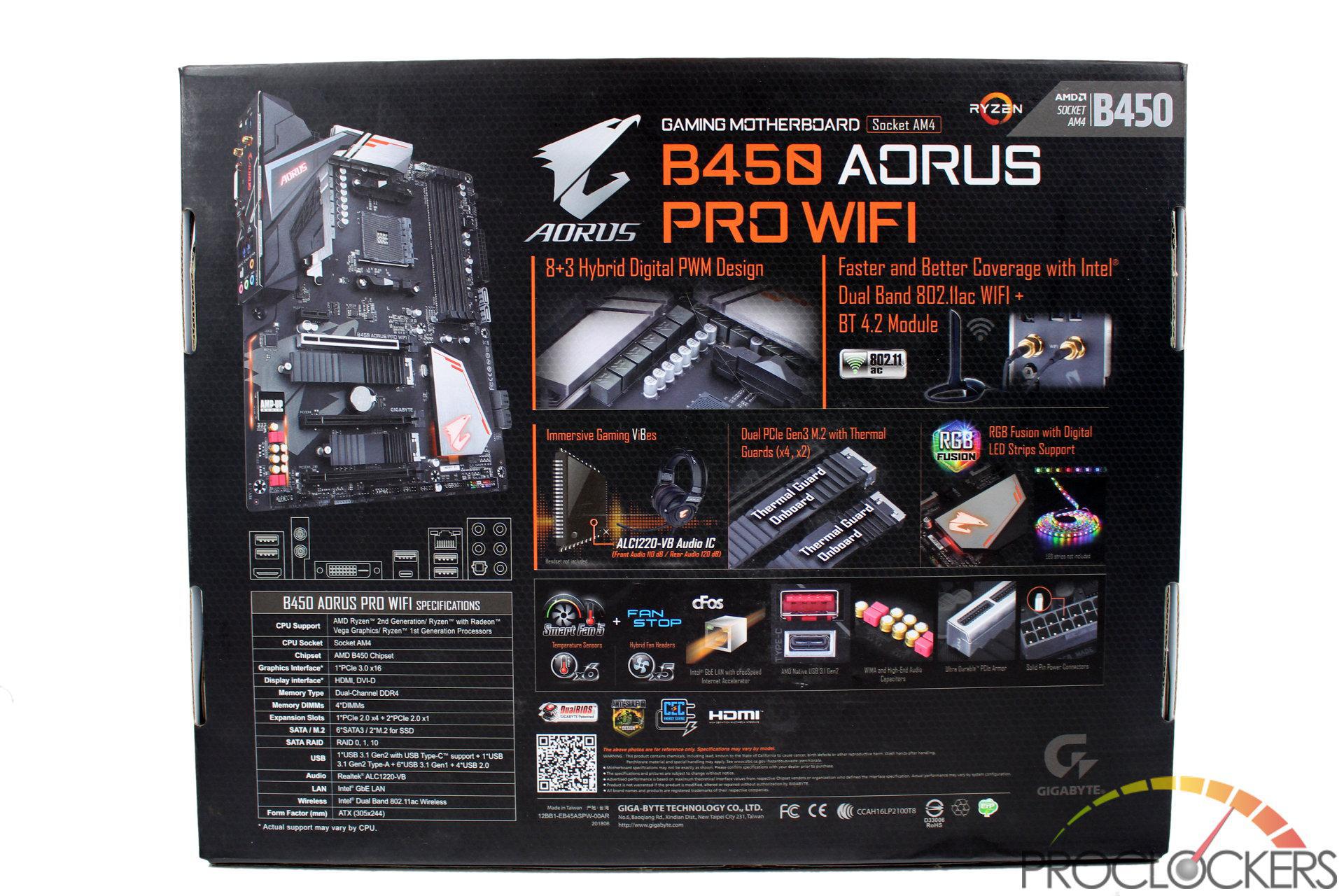
The rear of the box is quite colorful. Features take up two-thirds of the rear, with a picture of the motherboard taking up most of the rest.
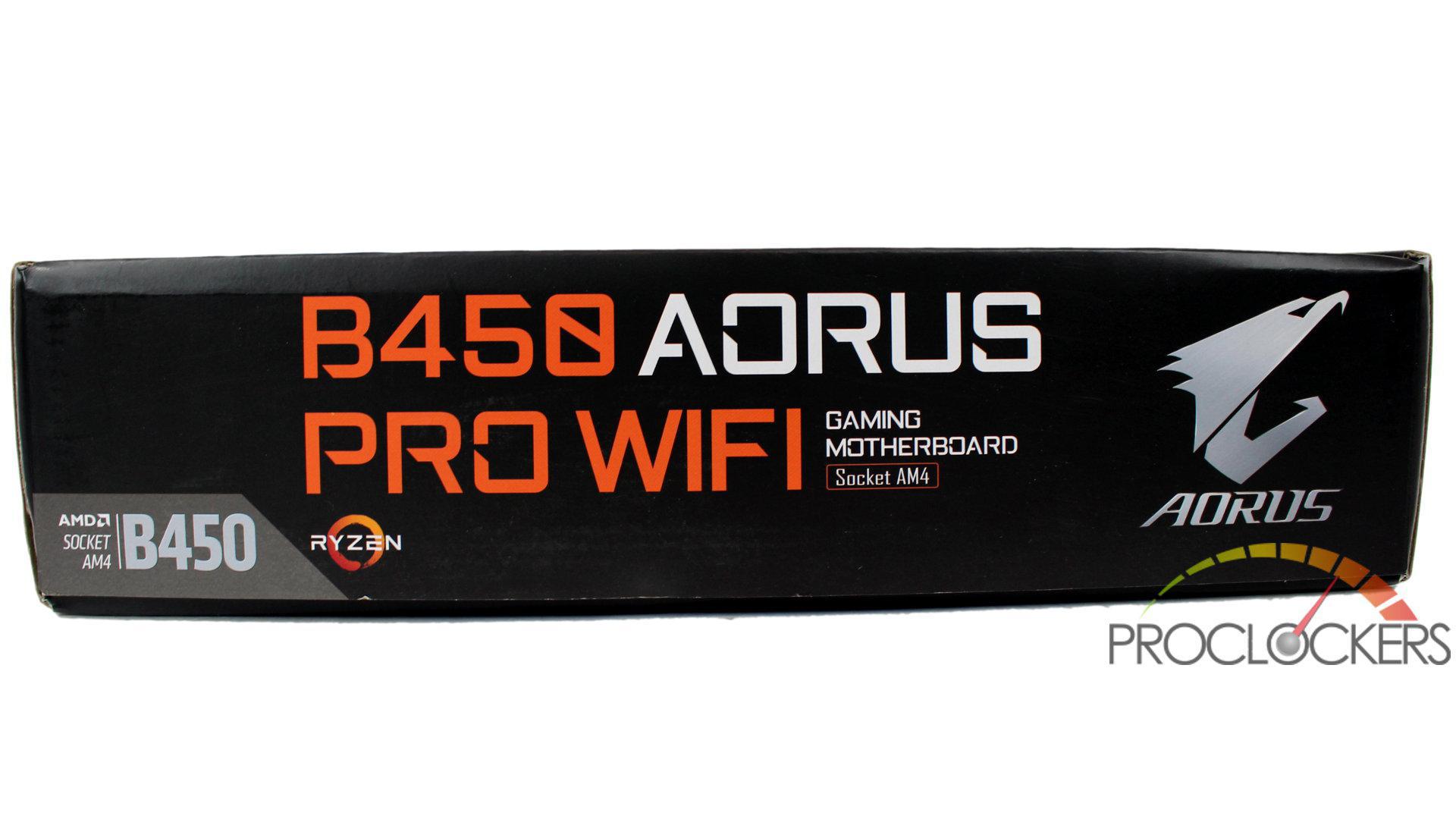
Three edges of the box shows just the model and the Aorus logo.
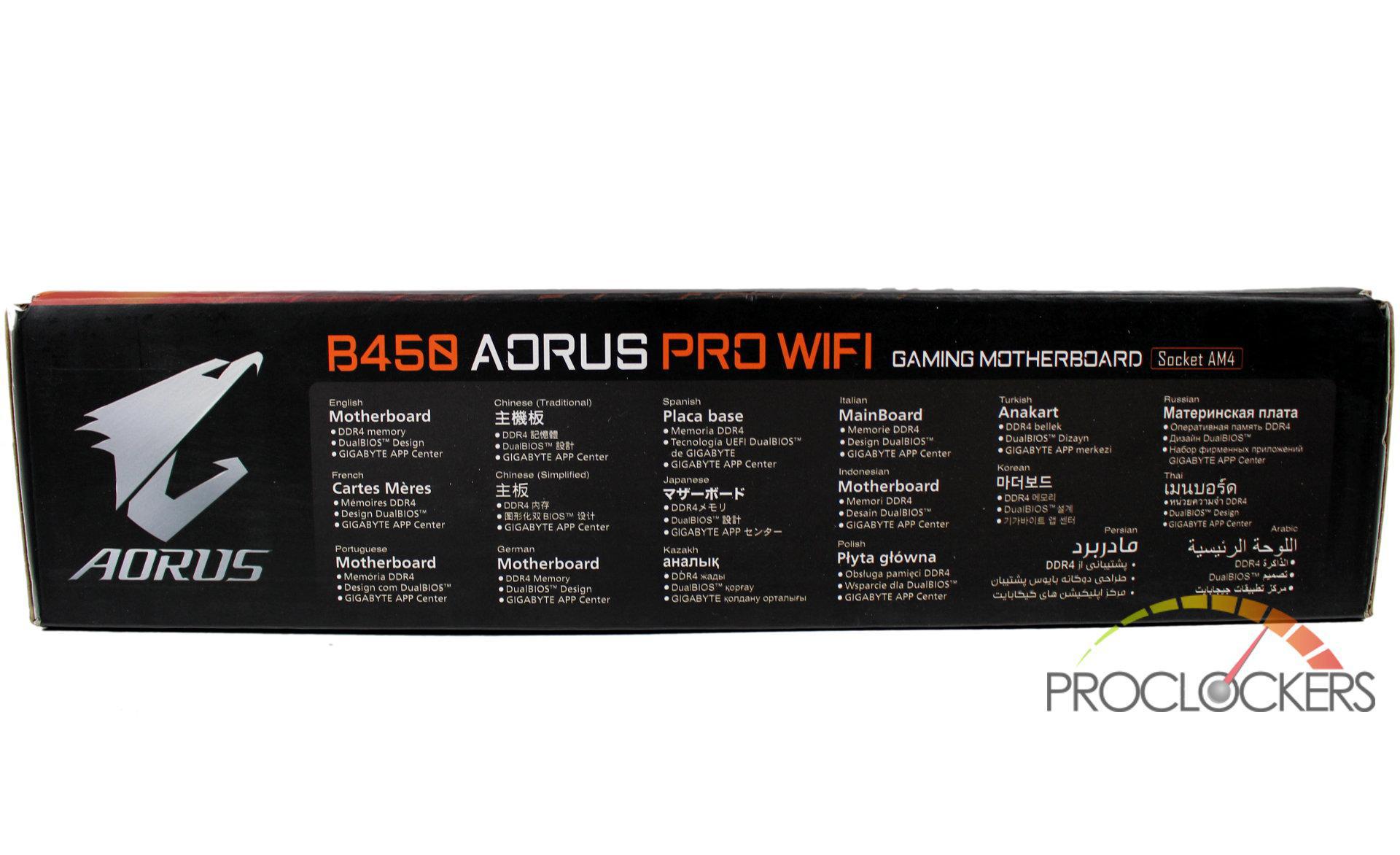
The last edge shows very basic specs in a multitude of languages.
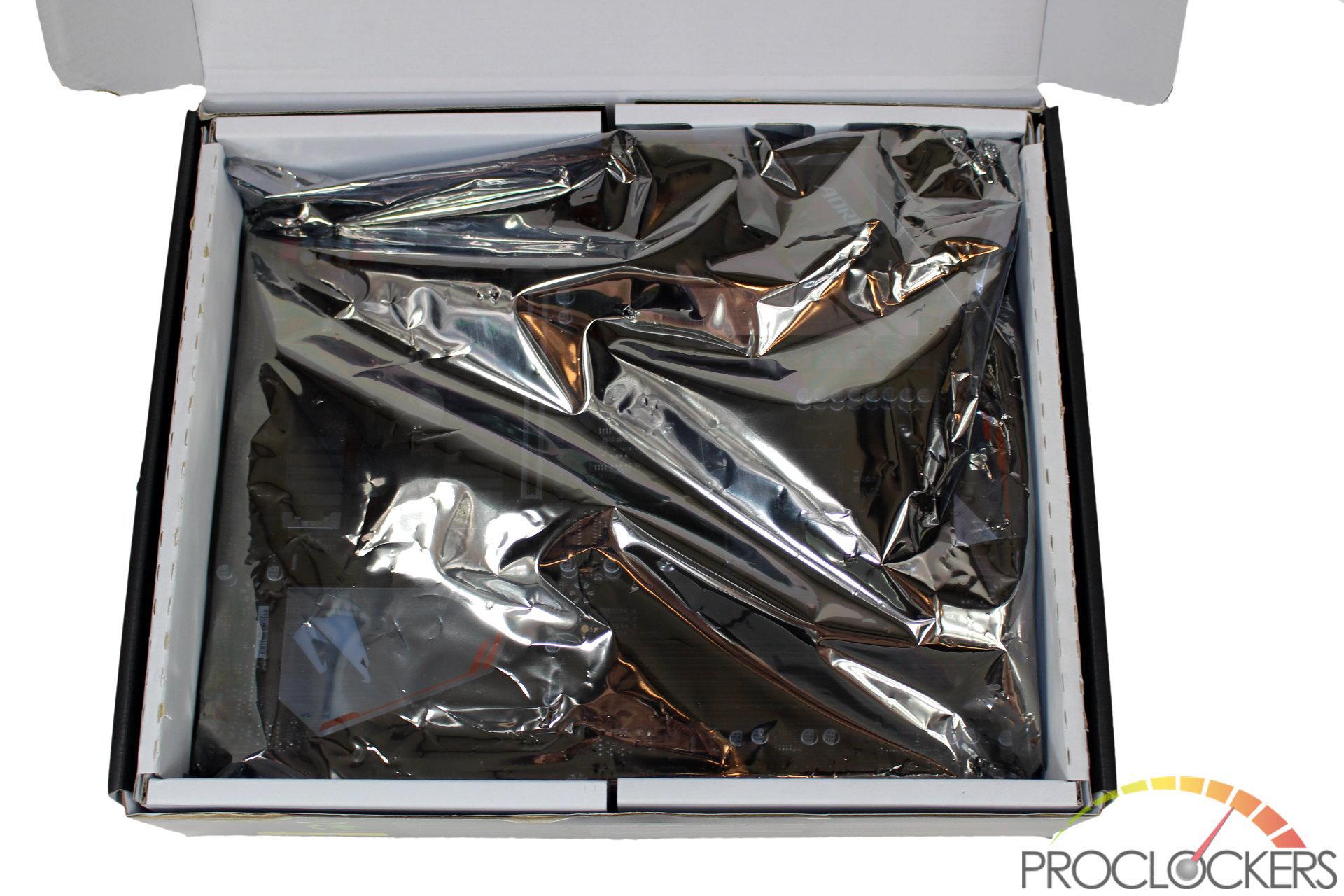
Opening up the box, we find the motherboard wrapped in an ESD bag and cradled in a cardboard tray.
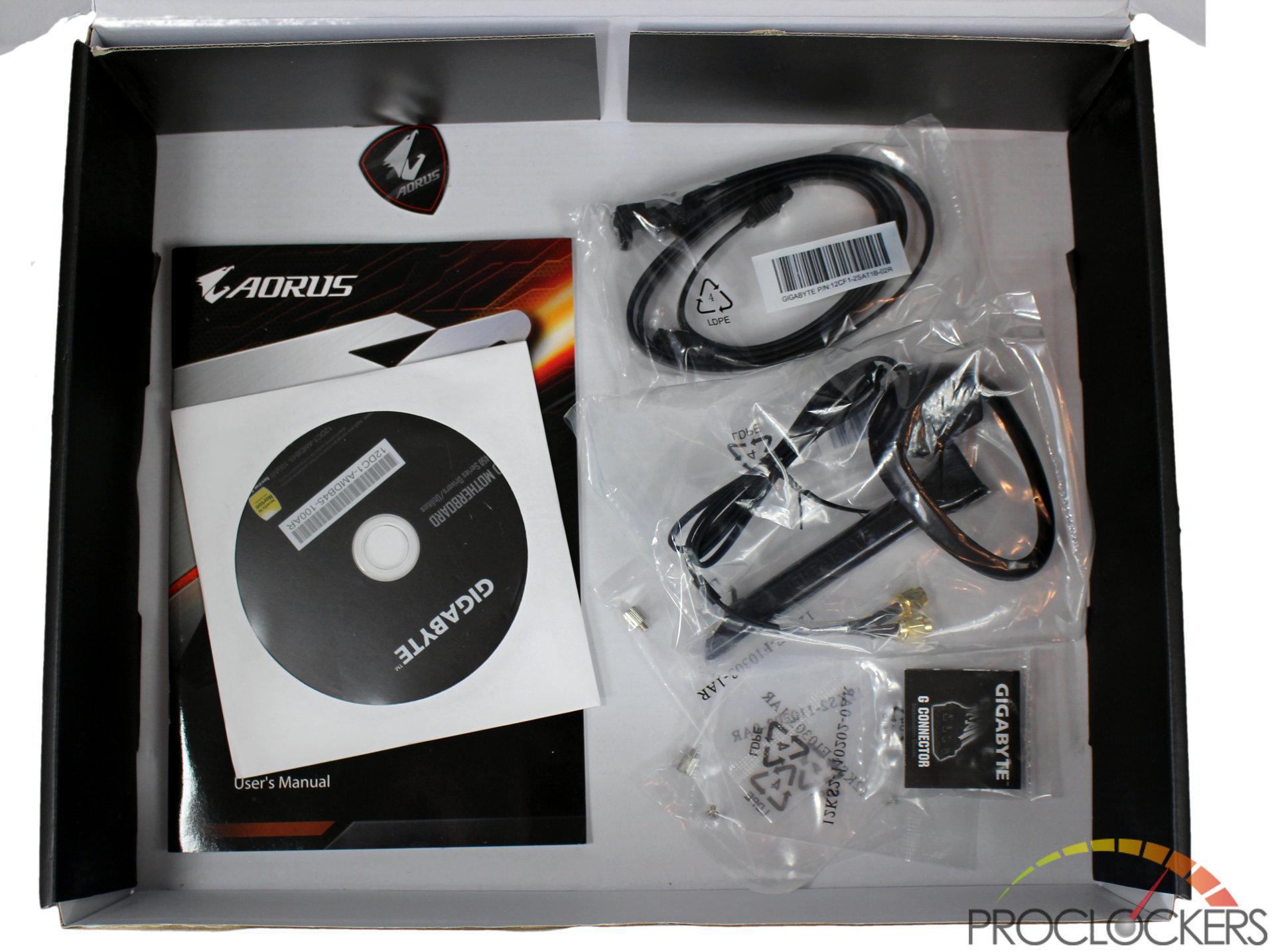
Under the tray is all of the documentation and ‘goodies’ included.
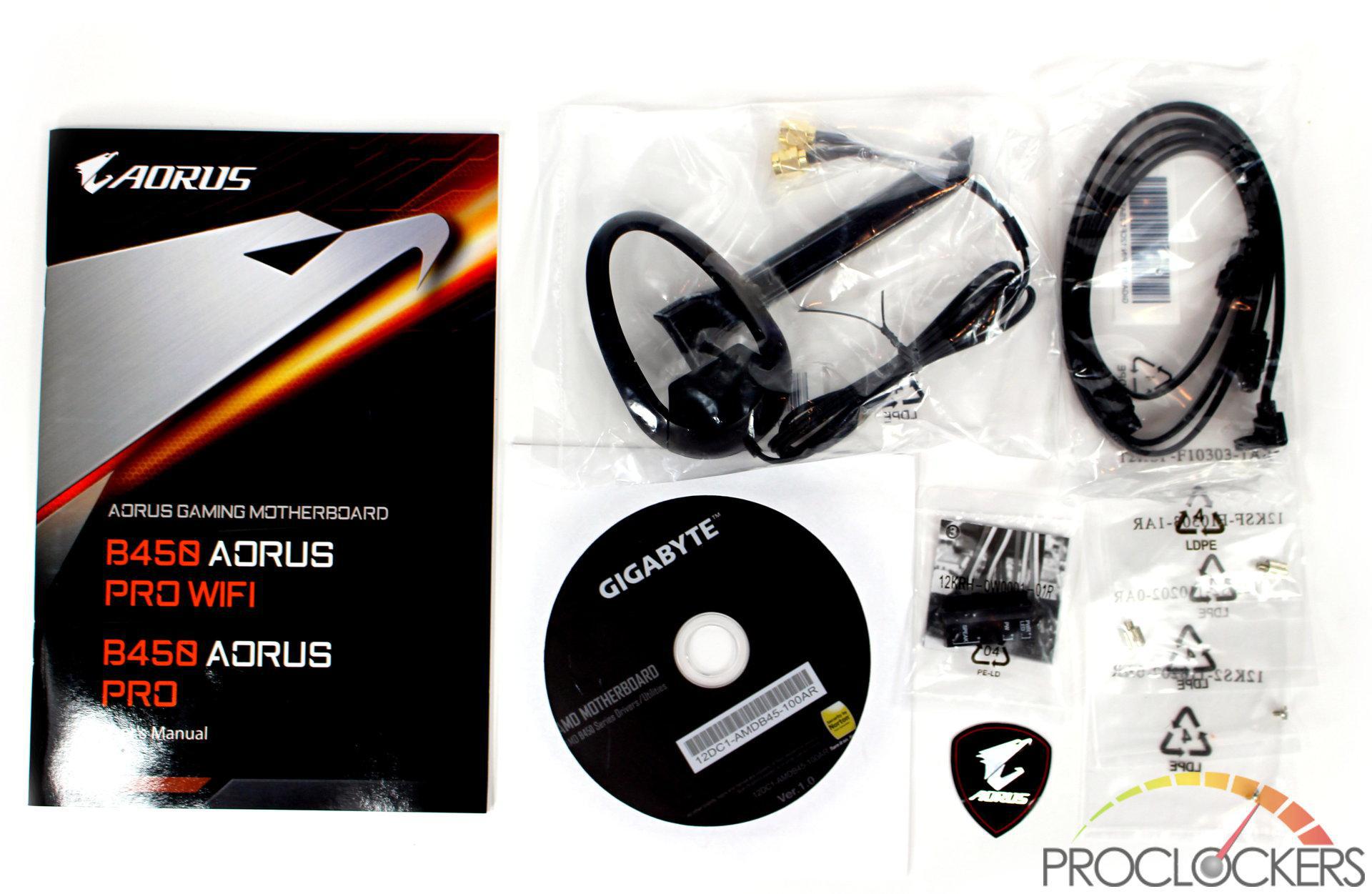
Inclusions in the box are pretty basic, but cover all of the bases. You get the usual manual, Driver disk, and a few SATA cables. You also get Gigabytes ‘G-connector’ that lets you snap all of your front I/O cables into it, and then plug them all into the board in one fell swoop. This is a very handy addition for anyone with a cramped case. The Wifi Antenna kit and some M.2 mounting hardware ride along with the Aorus case badge to round this list out.
A Closer Look
Gigabyte’s B450 Aorus Pro Wifi keeps to a black base with metallic heatsinks and a small number of orange accents. A large Aorus logo in grey around the PCIe slots.
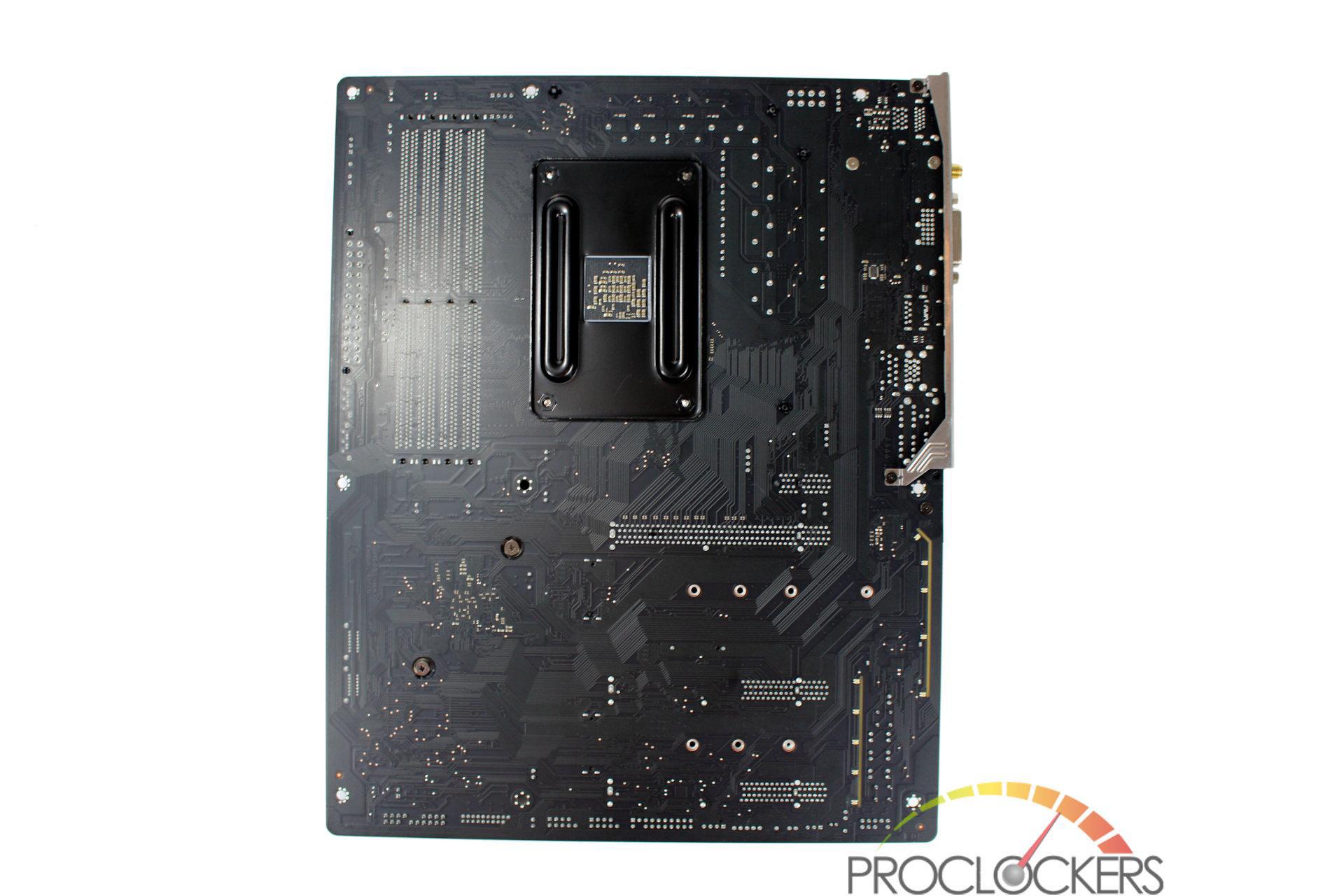
There is very little on the rear of the motherboard. Only the AM4 socket backplate and some LED’s around the audio area near the bottom right corner here.
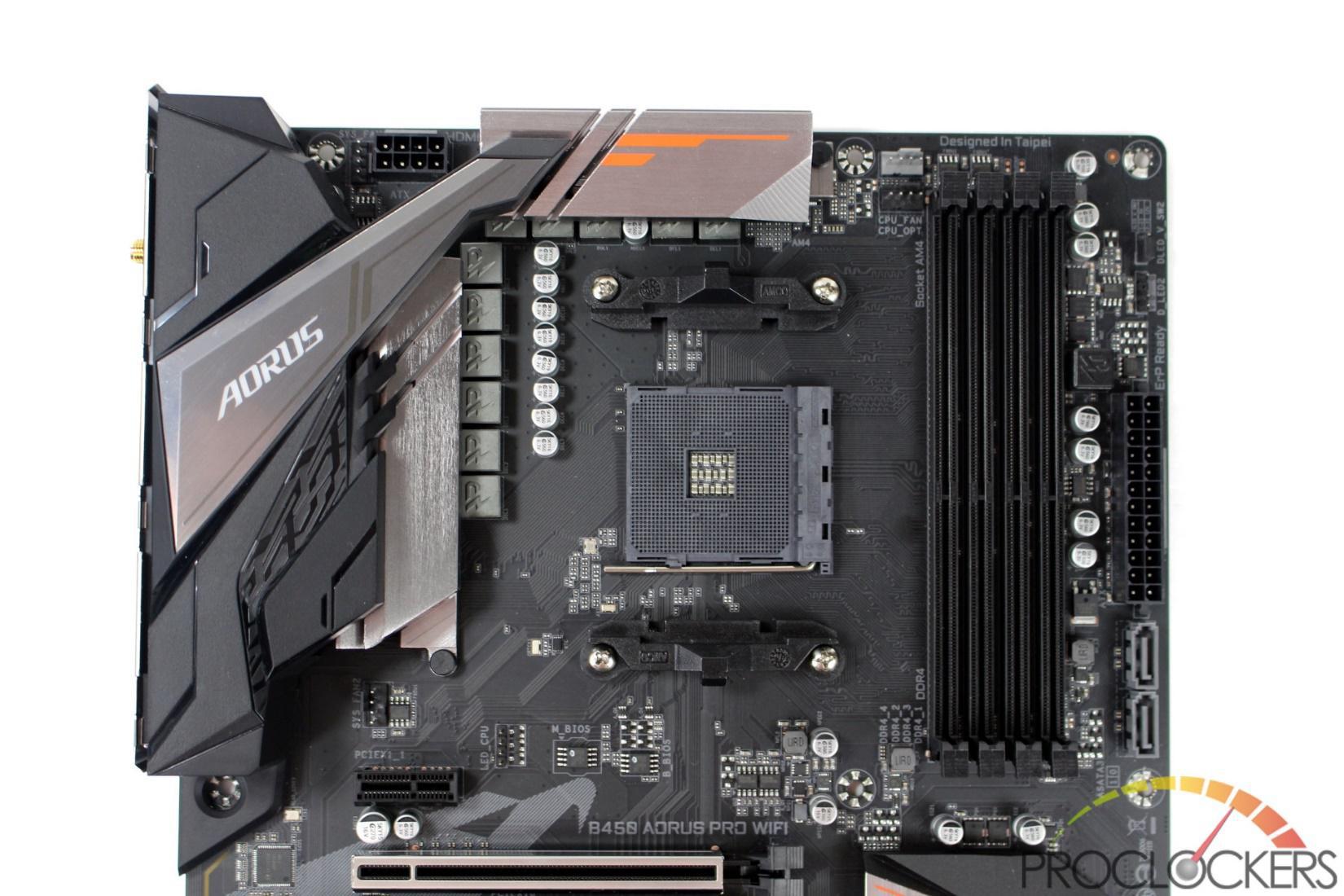
The top of the ATX motherboard has AMD’s AM4 socket just right of center with four DDR4 DIMM’s flanking to the right. An 8+3 phase VRM surrounds the top and left side of the socket. An analog RGB header is near the top PCIe x1 slot for an RGB enabled CPU cooler.
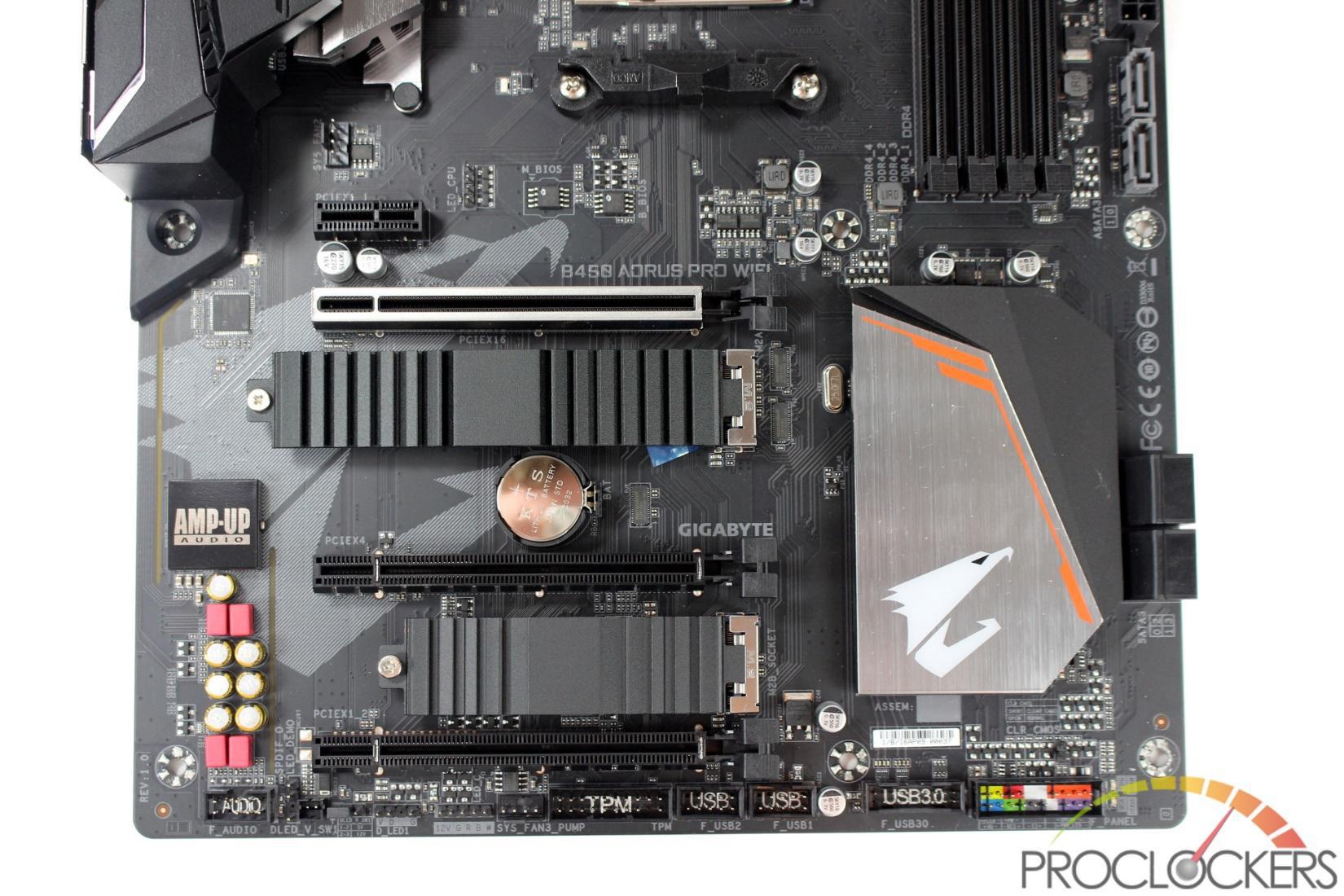
The lower half of the board seems to be more heatsinks than anything else. You get Twin M.2 slots with heatsinks and a beautiful Aorus heatsink over the chipset and even a shield over the audio solution. For connectivity, you get a main PCIe x16 slot and two X16 slots that run at x4 electrical. A single PCIe x1 slot sits at the top of the stack. Along the bottom, you get front panel audio connections, digital RGB header with selectable 5v or 12v as well as a traditional RGBW header. A fan header is next to the TPM module connection, and you get twin USB2.0 headers and a USB 3.0 header that is clearly labeled. Near the front is the front panel audio connections.
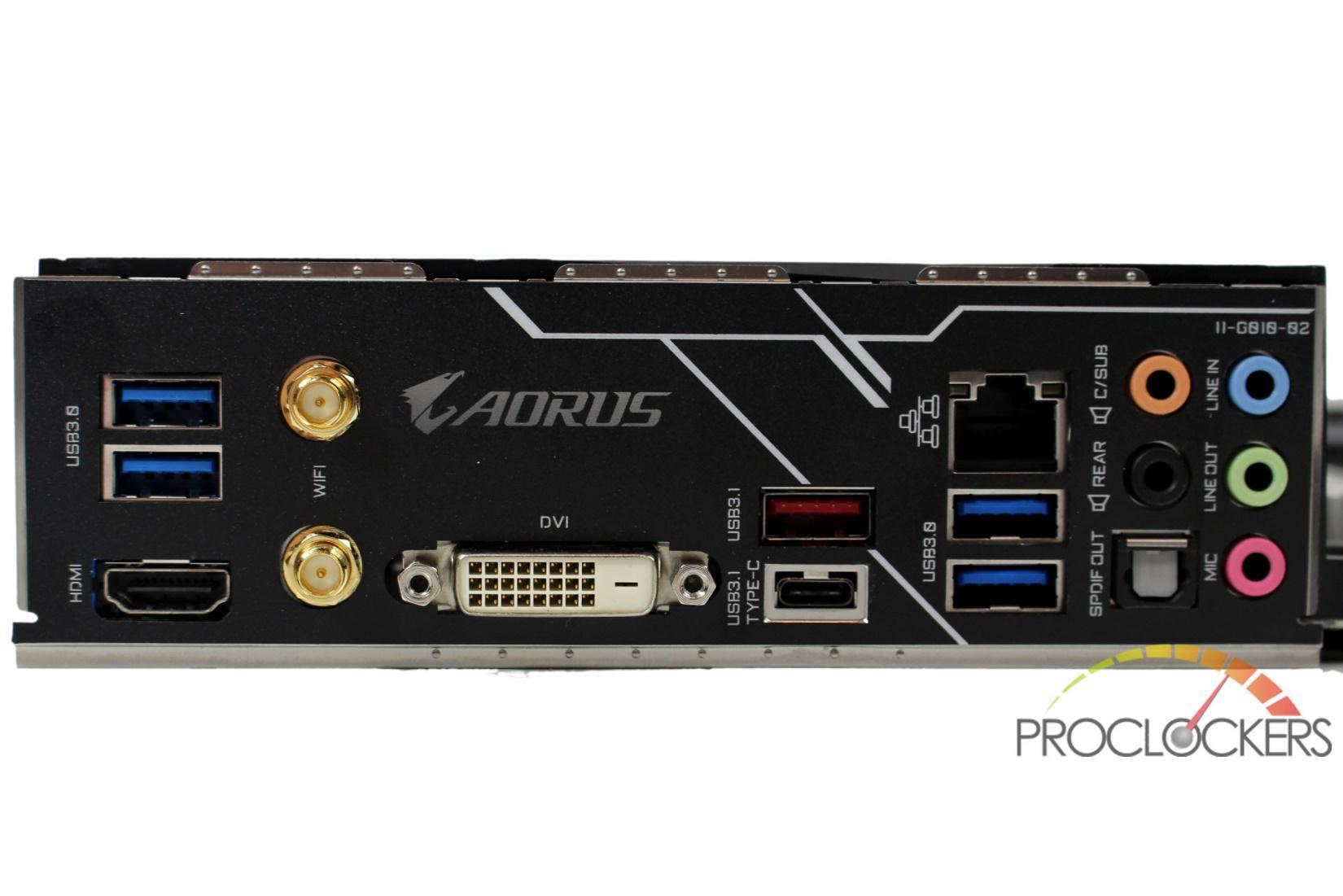
Rear I/O has four USB 3.0 ports in blue, two USB 3.1 ports in red and black, Gigabit LAN, 802.11ac 2×2 WiFi, and the usual audio ports. If you are using a Ryzen processor with graphics capabilities, you also can use the HDMI 2.0 port and Dual Link DVI-D ports.
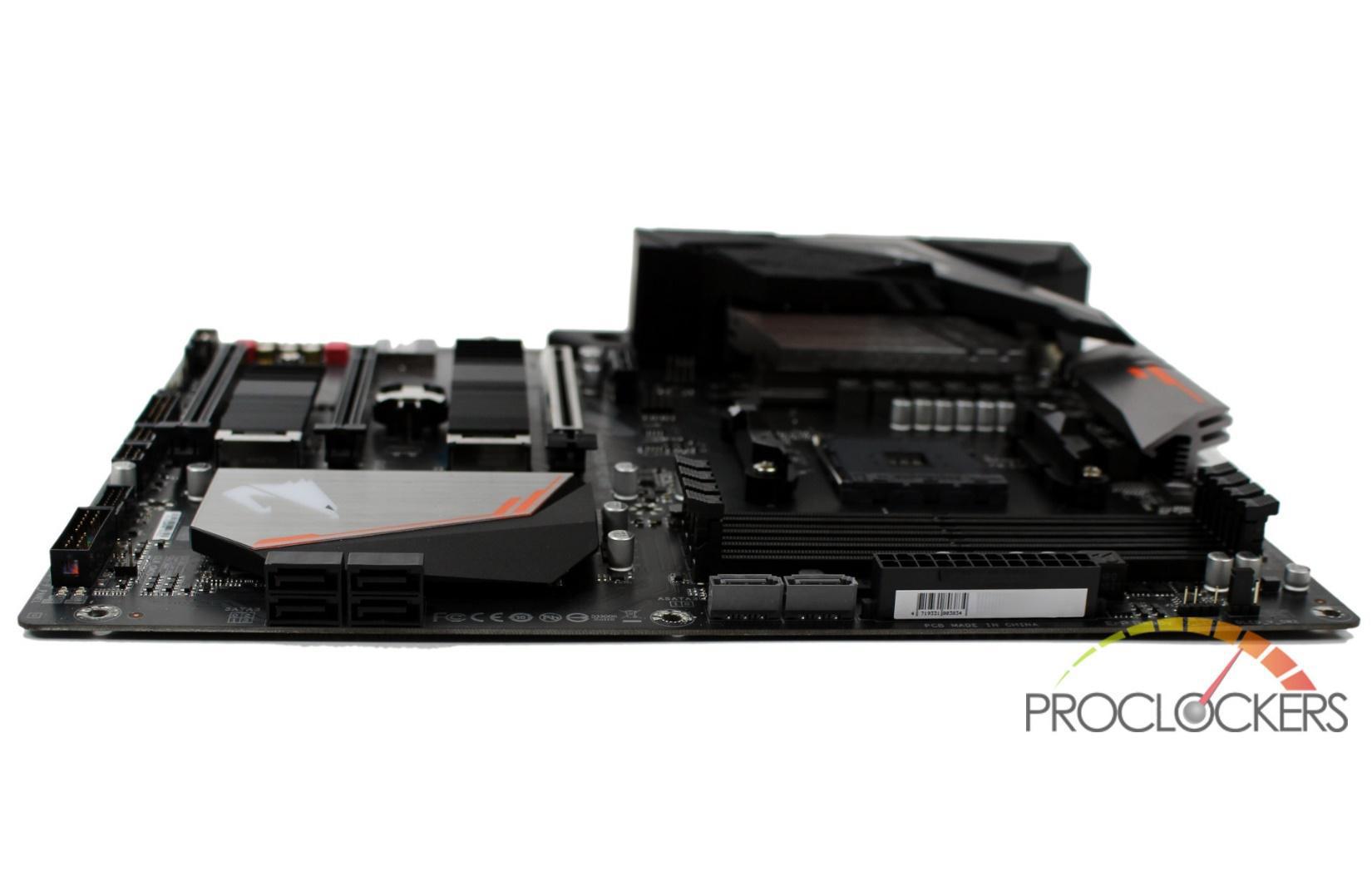
The front edge of the board has six SATA 6.0 Gbps as well as the main 24-pin power connection.
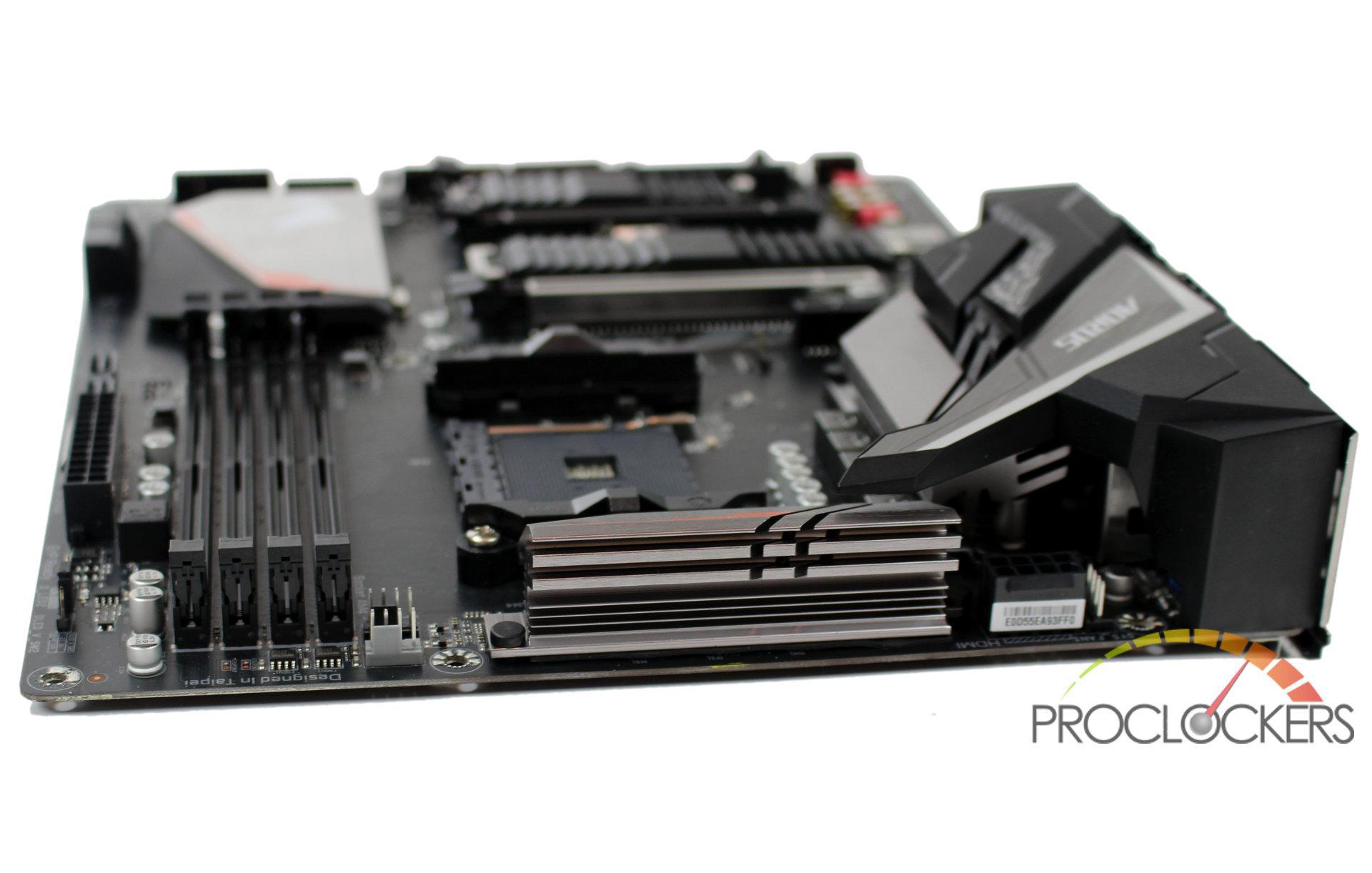
An 8-pin EPS in the top left corner powers the CPU. A 4-pin fan header sits next to it, with another below the rear VRM heatsink and two more between the top VRM heatsink and the memory slots. The top right corner has an addressable RGB header with selectable 5V or 12V supply.

A final glamor shot of a beautiful board.
System Configuration & BIOS
CPU: AMD Ryzen 7 2700X
Motherboard: Gigabyte B450 Aorus Pro WiFi
RAM: 16GB Corsair Dominator 3200Mhz
GPU: Galax GTX 1070 HOF
SSD: Samsung 850 Evo 256GB
OS: Windows 10 Professional X64
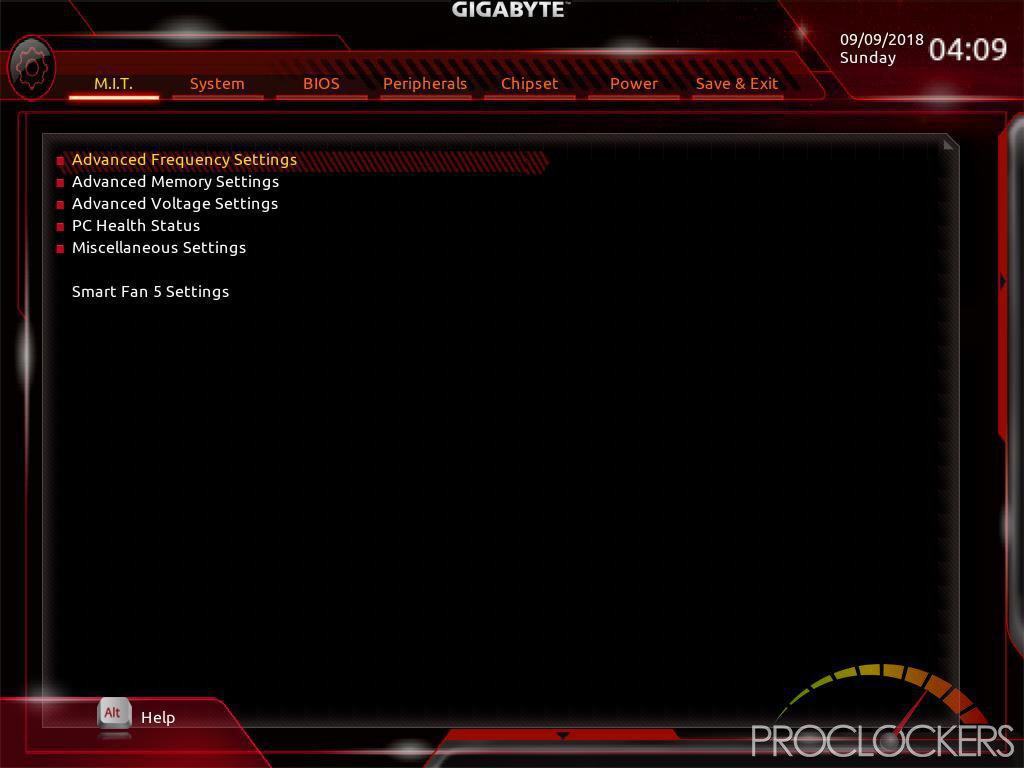
Almost everything you’ll want to play with is under the M.I.T. tab in the BIOS.
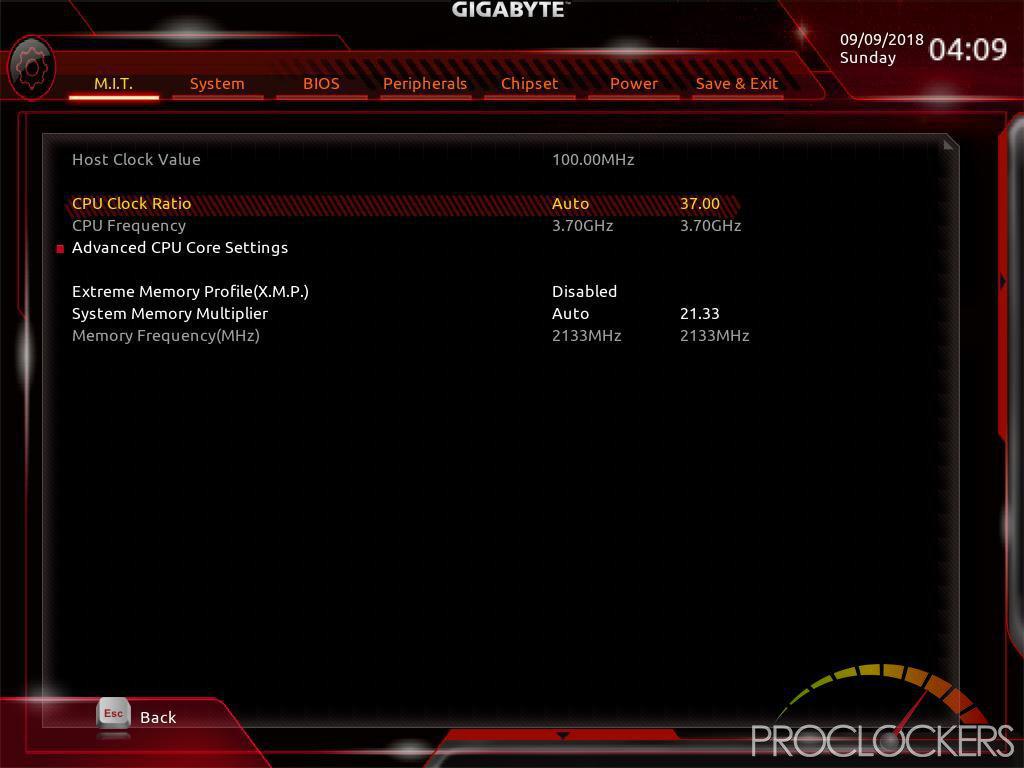
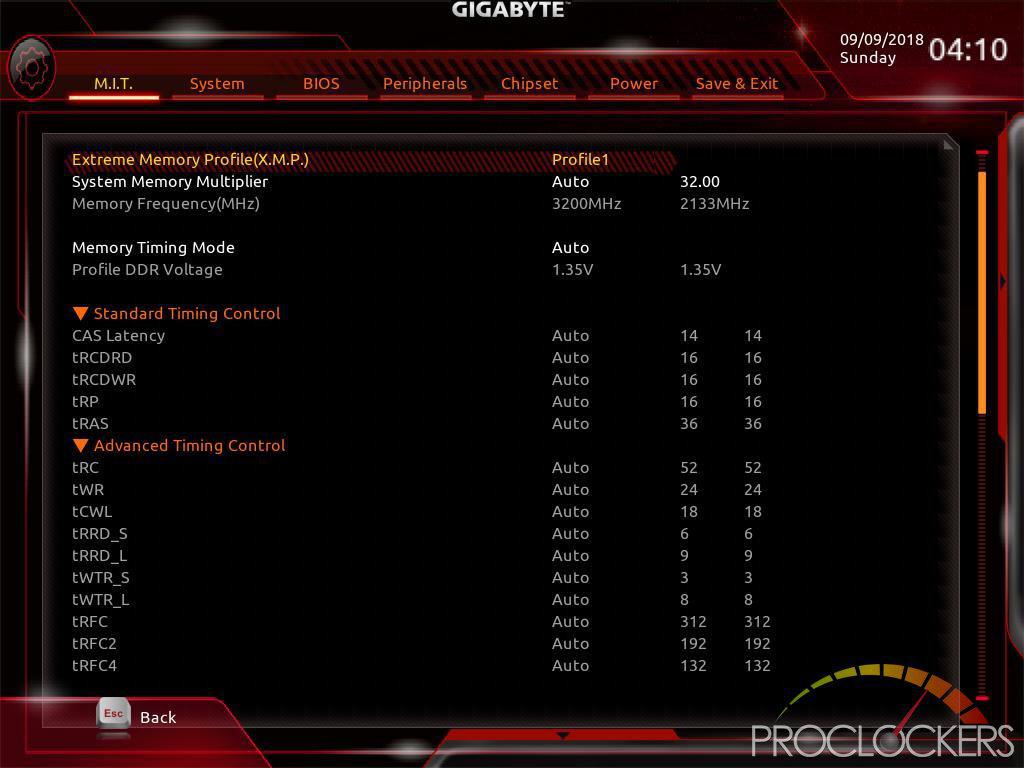
CPU and memory settings are under the first two sections, be sure to enable XMP on your ram while here.
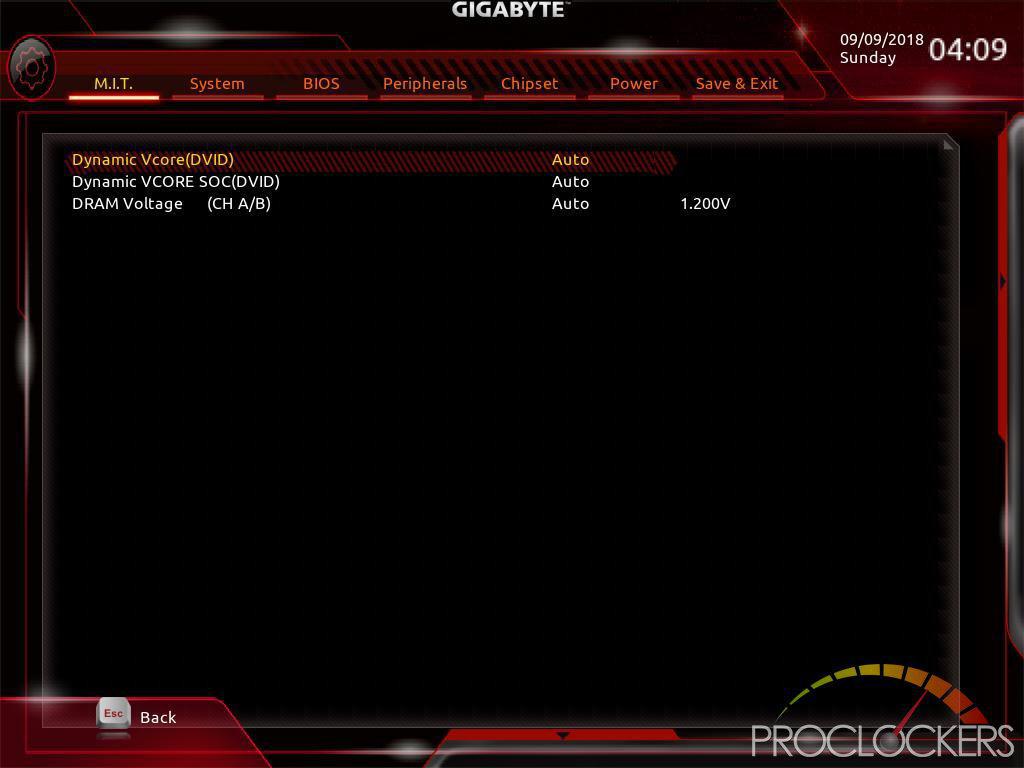
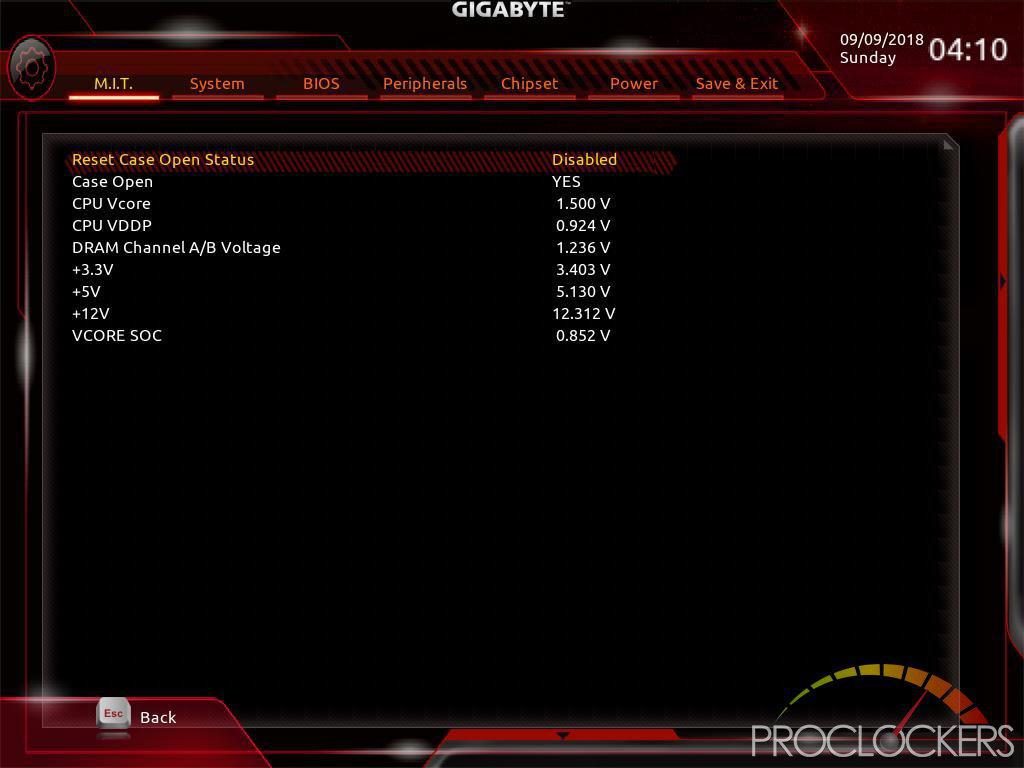
Lots of other miscellaneous settings are under here as well.
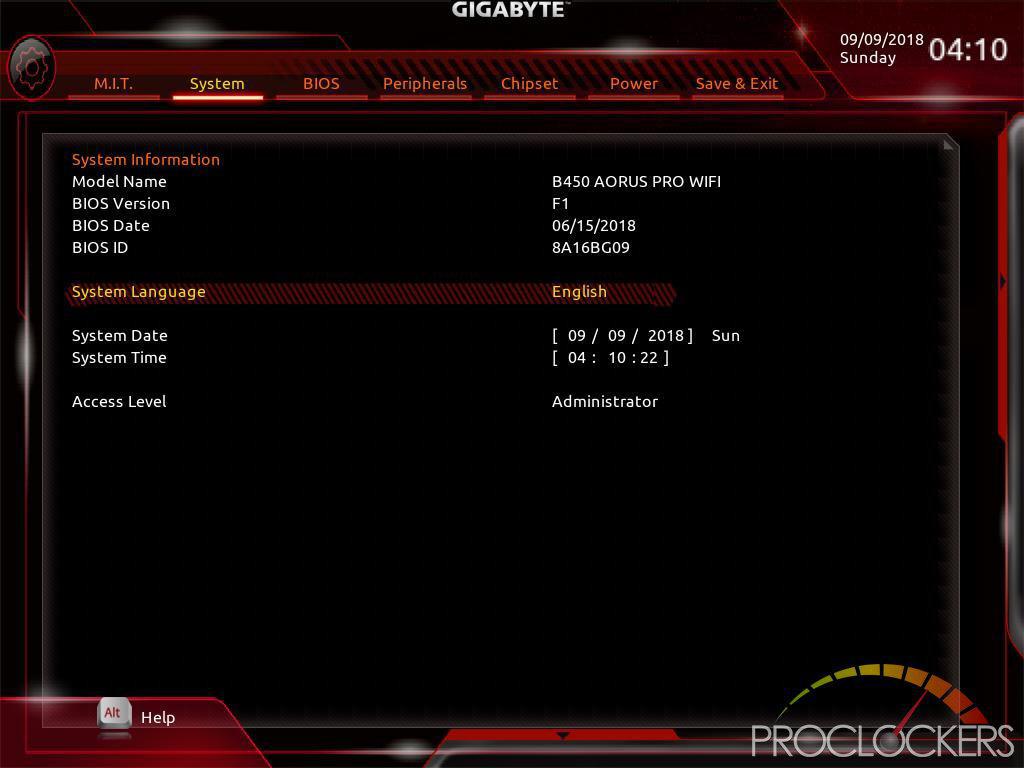
The system tab is the main information page.
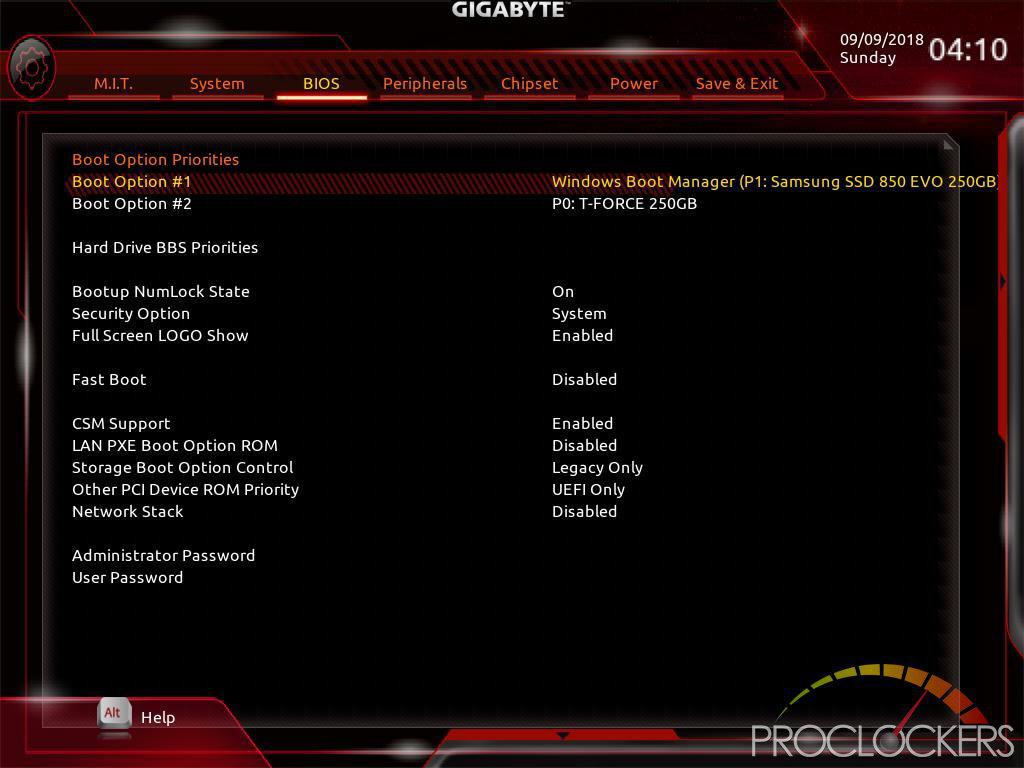
The ‘BIOS’ tab is more closely covering boot settings than general BIOS things.
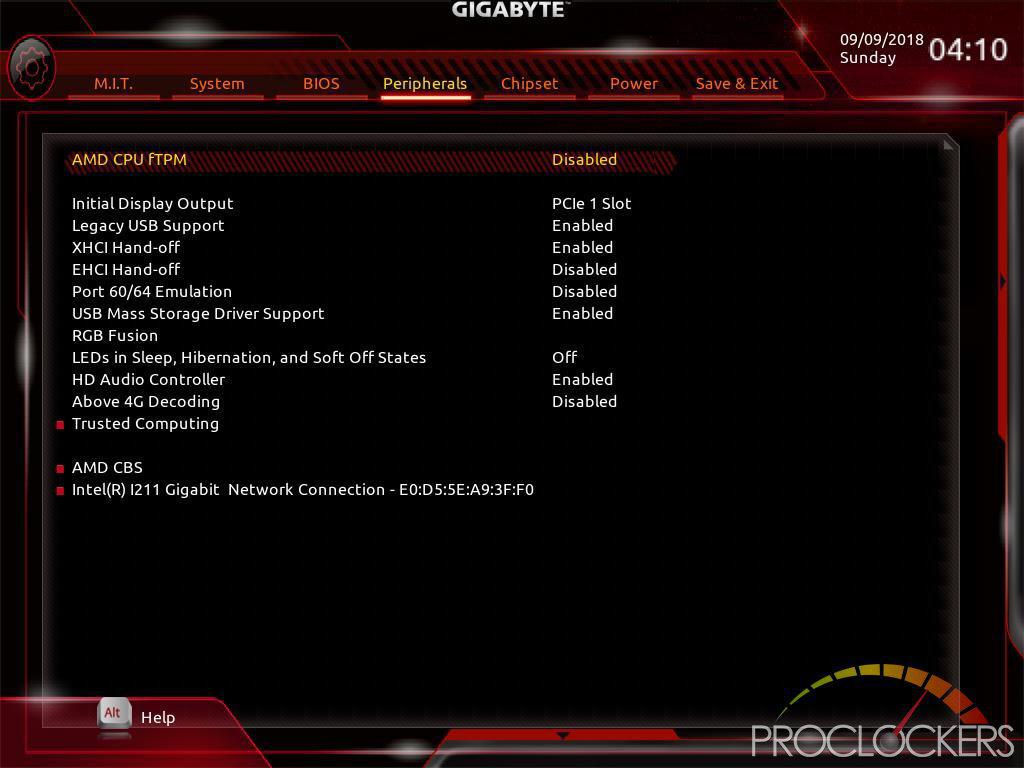
Peripherals cover all of the onboard devices and are where you go to adjust things like storage configurations like RAID.
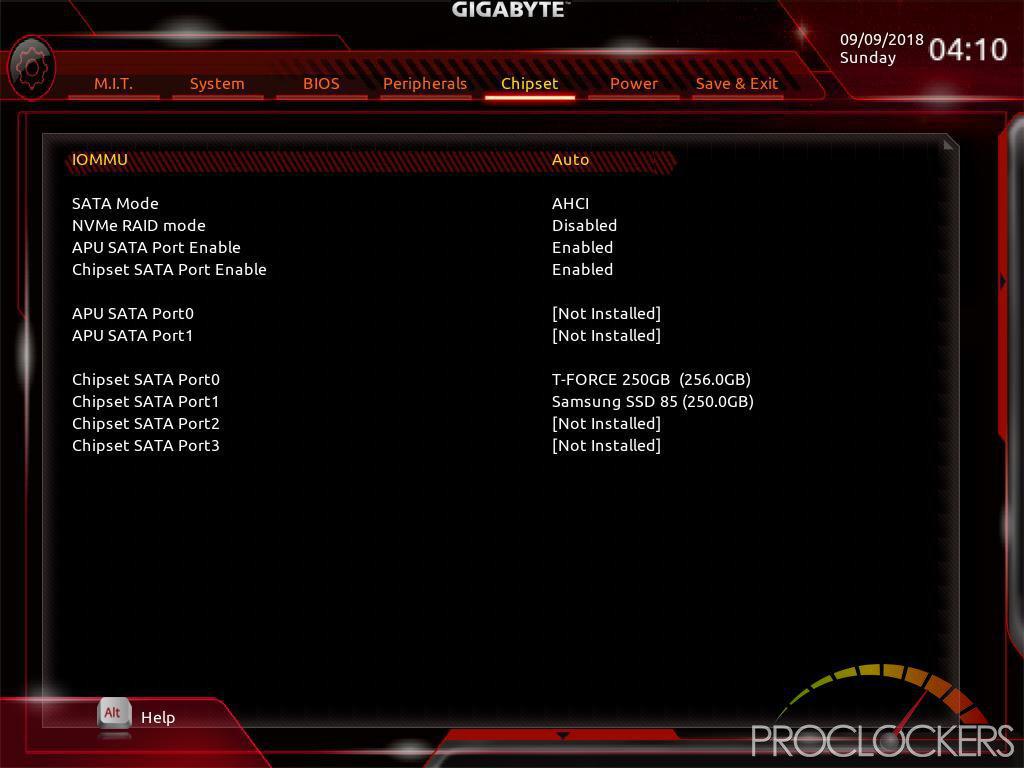
The Chipset tab handles a few rarely used but important items. Intel’s Virtualization tech ‘VT-d’ can be disabled from here if needed.
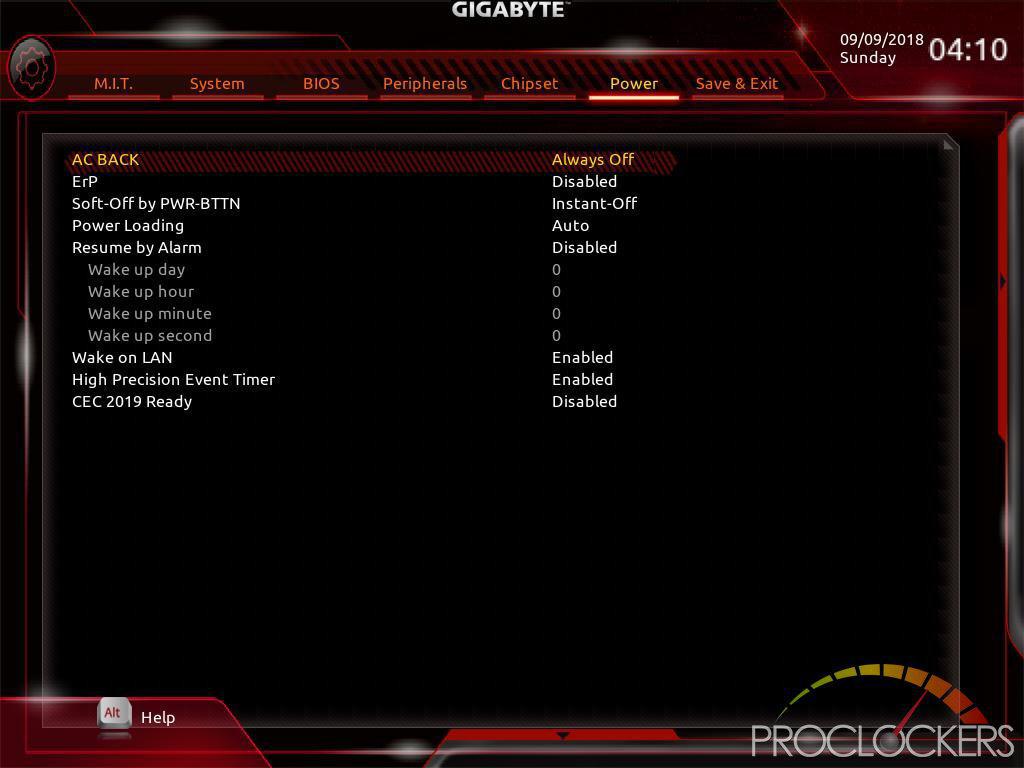
All power settings can be adjusted under this tab.
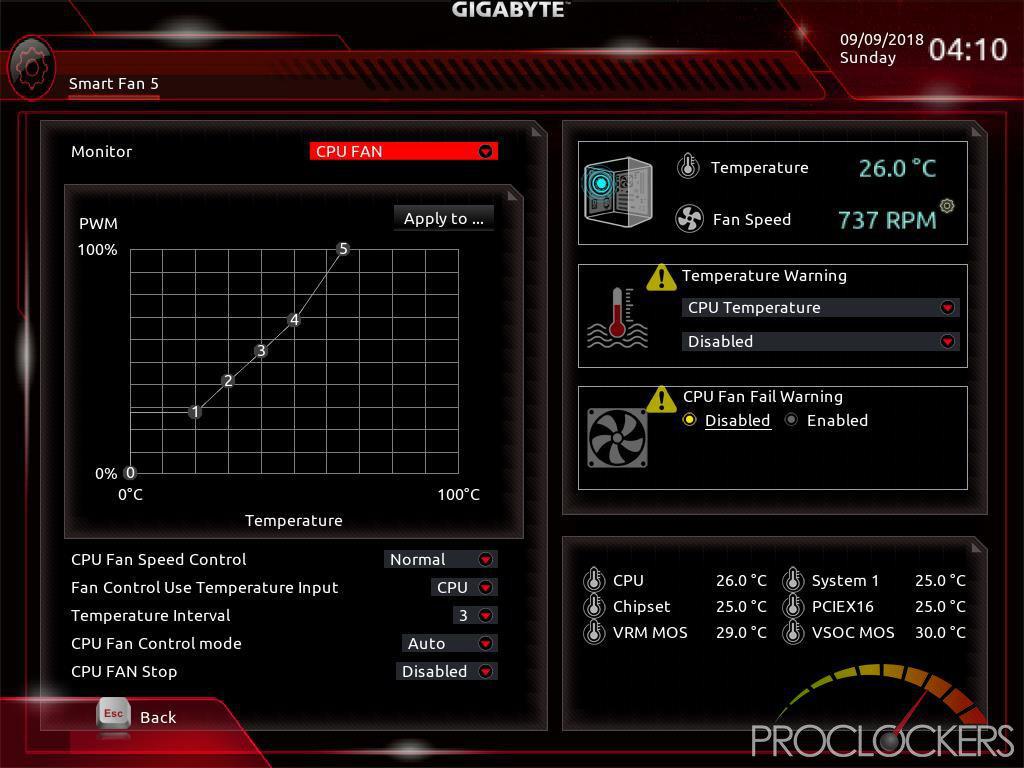
Smart Fan 5 is one item you’ll want to check out for adjusting the fan and cooling profiles.
Software
Aorus has unified their included utility software under what is called APP Center. APP Center is a one-stop area for almost every setting and feature that the Aorus Pro WIFI has to offer.
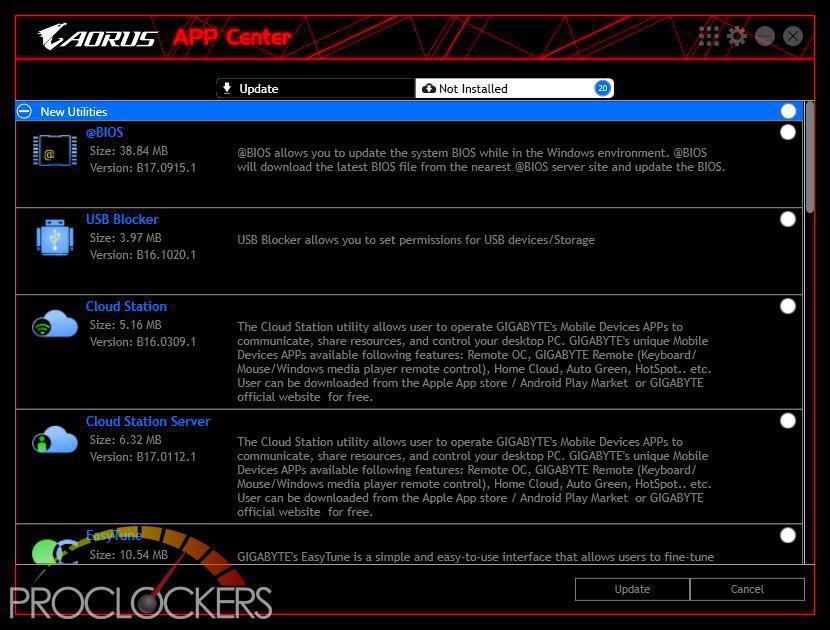
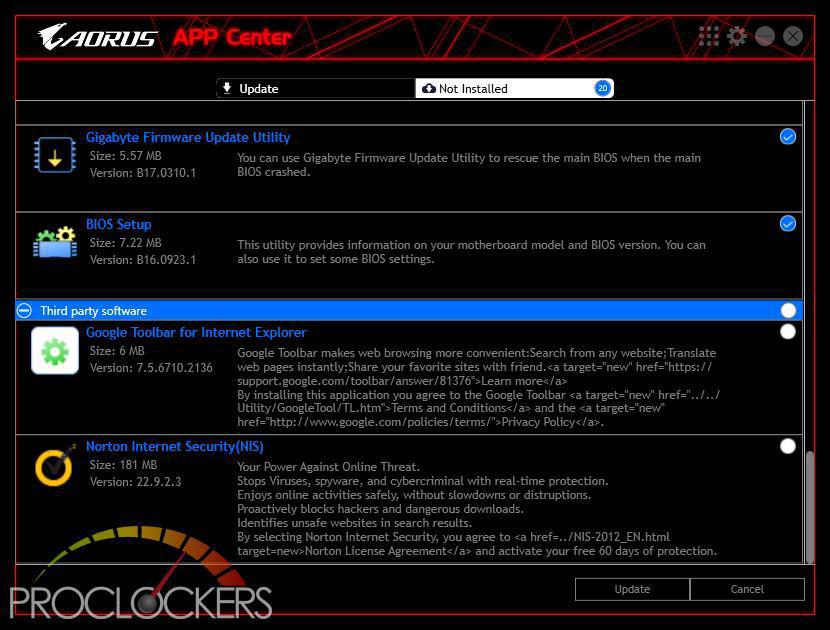
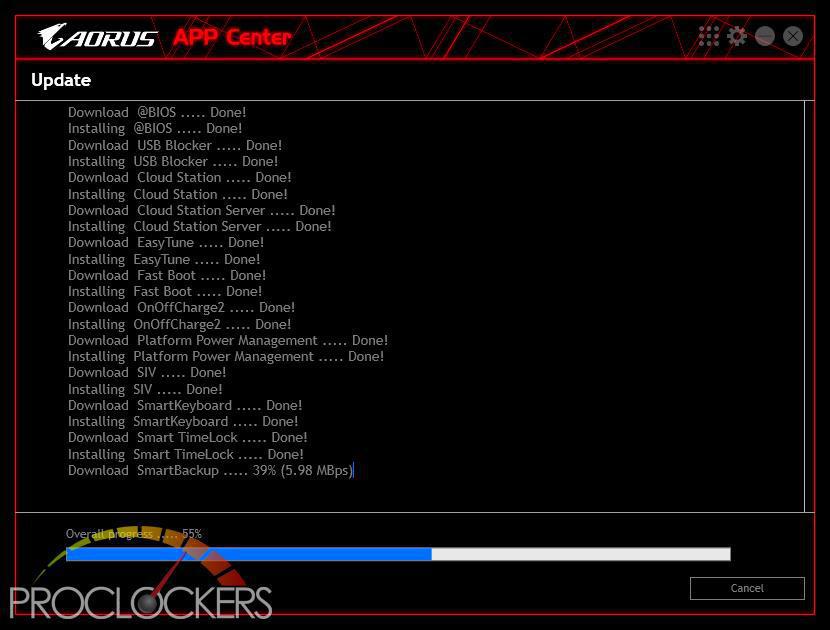
Updates and utilities can be installed all with just a few clicks. We installed all of the other utilities here in about 3 clicks.
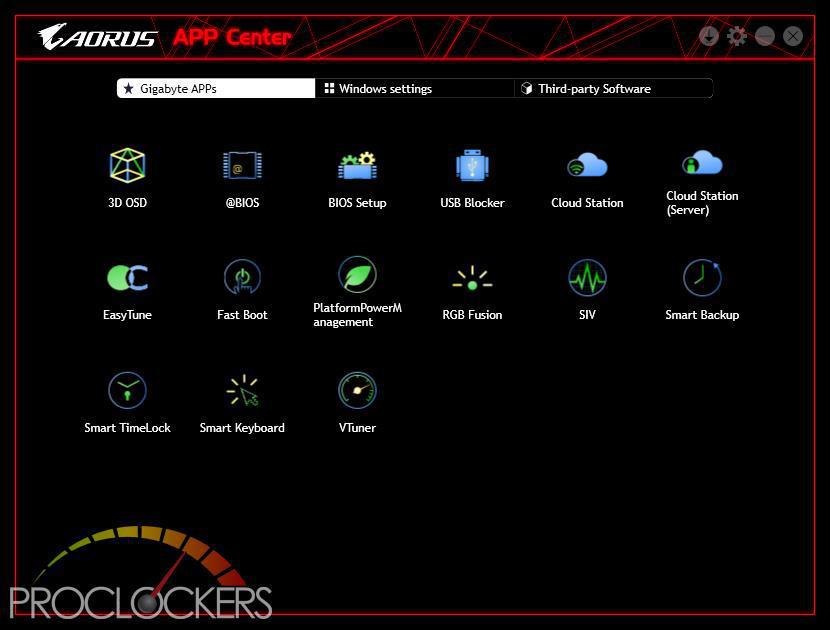
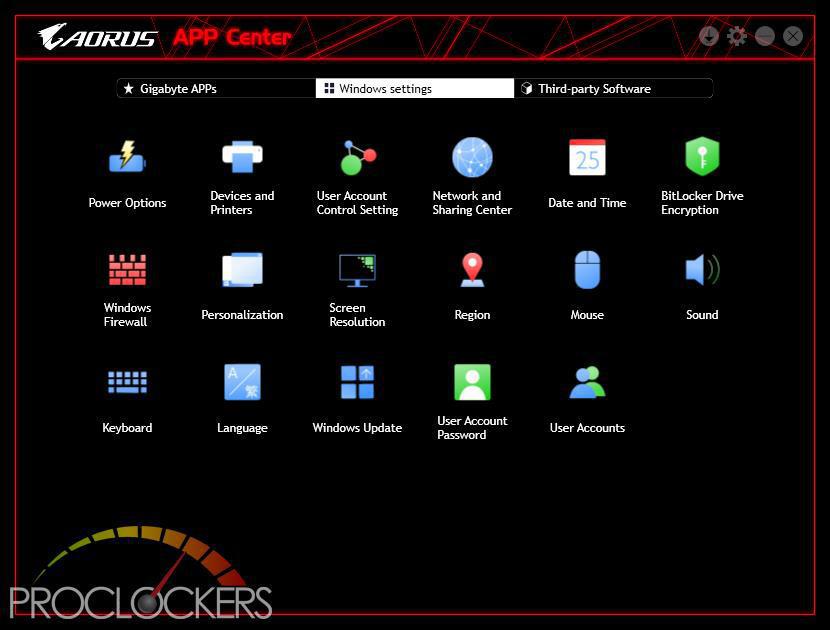
If navigating the confusing mess of windows menus on windows 10 is a pain for you, you can access most of the important menus right here.
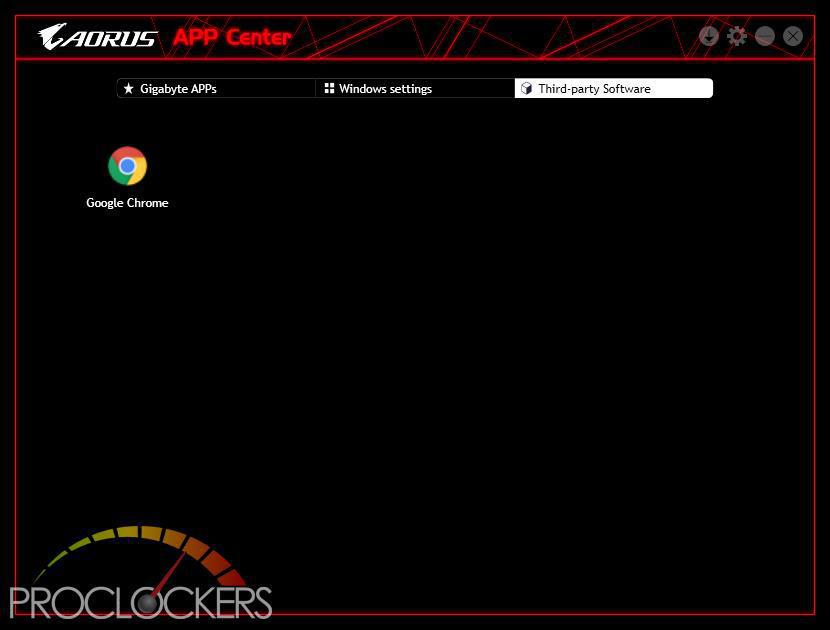
3S OSD
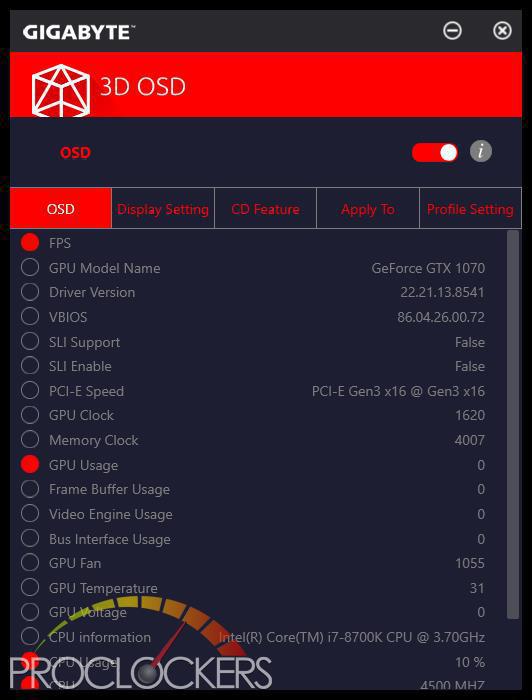
3S OSD automatically detects and displays your system information during games, allowing you to easily get hold of your system information without switching between screens.
@BIOS
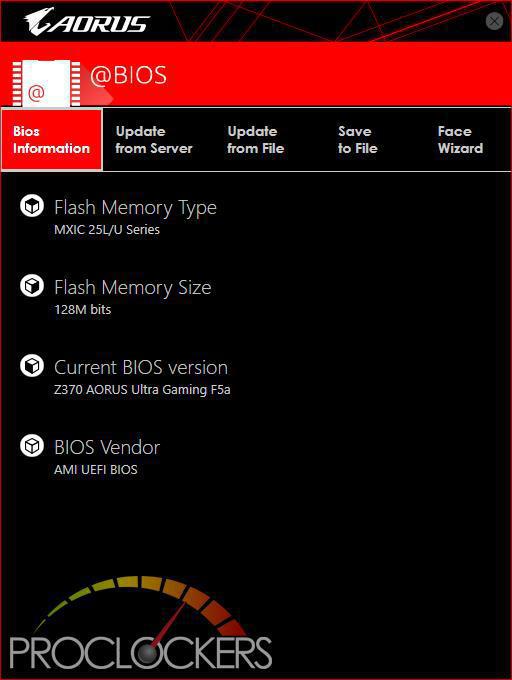
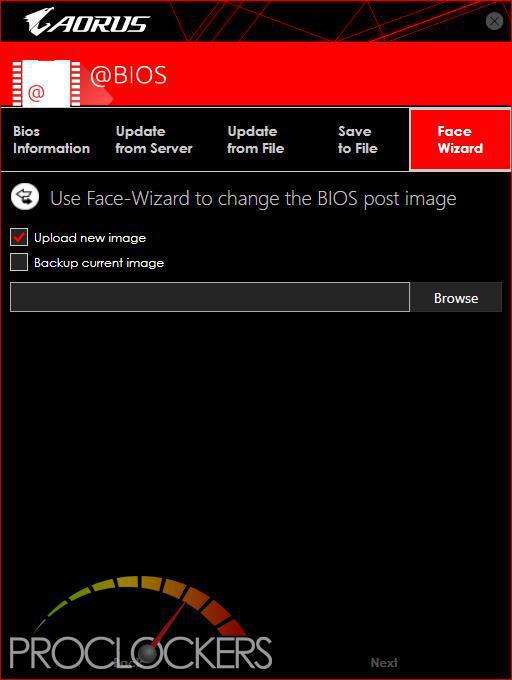
@BIOS allows for simple and easy updating of the BIOS via Windows.
AutoGreen
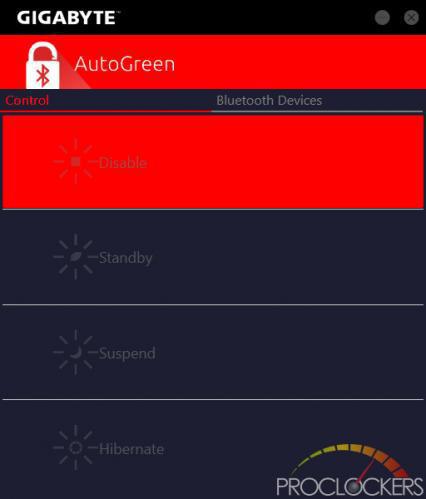
AutoGreen is an easy-to-use tool that provides users with simple options to enable system power savings via a Bluetooth-enabled smartphone/tablet device. When the device is out of the range of the computer’s Bluetooth receiver, the system will enter the specified power saving mode. Before using this app, you need to turn on Bluetooth on both your computer and smartphone/tablet device.
Color Temperature
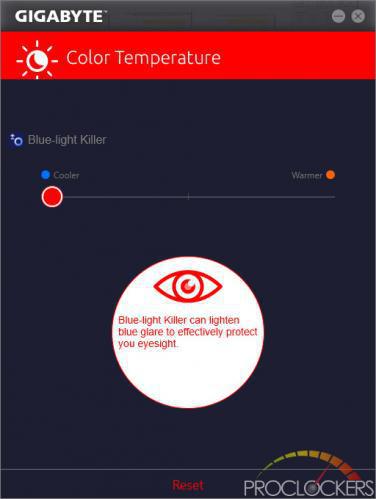
This is a simple monitor color adjustment tool.
USB Blocker
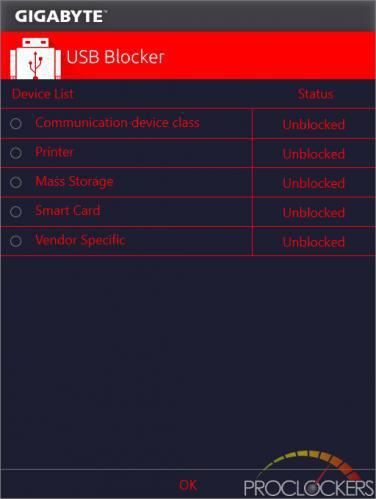
USB Blocker provides you with an easy-to-use interface that allows you to block certain USB device types on your PC. Devices classes that are blocked will be ignored by the operating system.
Cloud Station
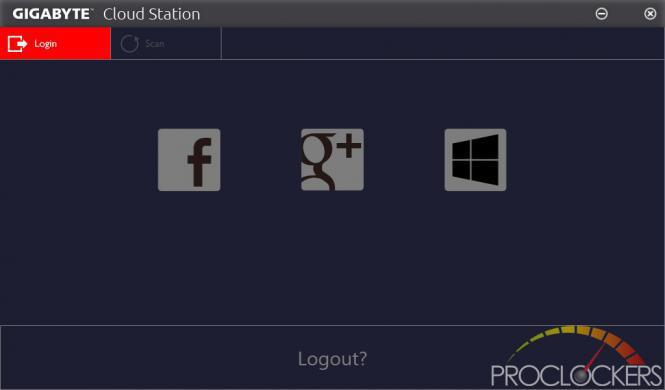
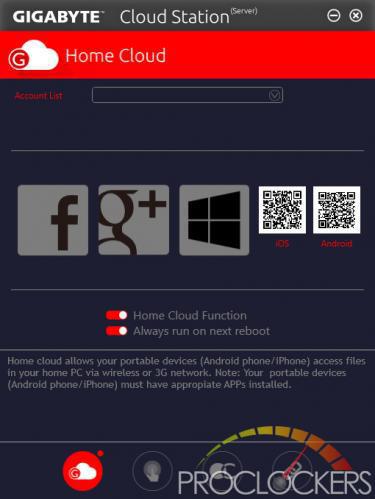
Cloud Station Server is composed of HomeCloud, Gigabyte Remote, Remote OC, and HotSpot, which allow your smartphone, tablet device, and remote computer to communicate, share resources, and control the host computer via wireless connection. Cloud Station allows your computer to share files with another computer that has Cloud Station (Server) installed.
EasyTune
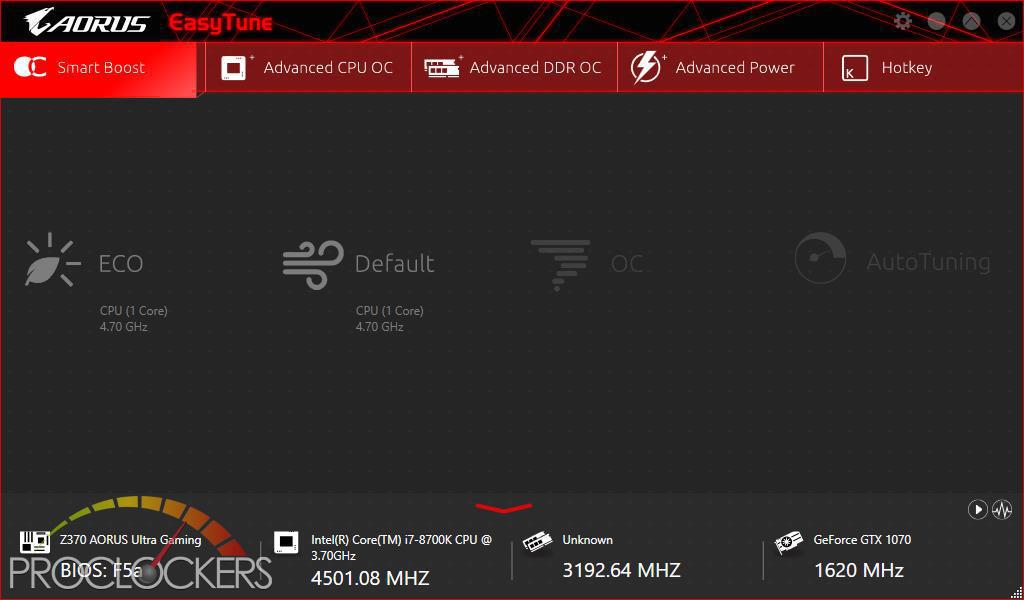
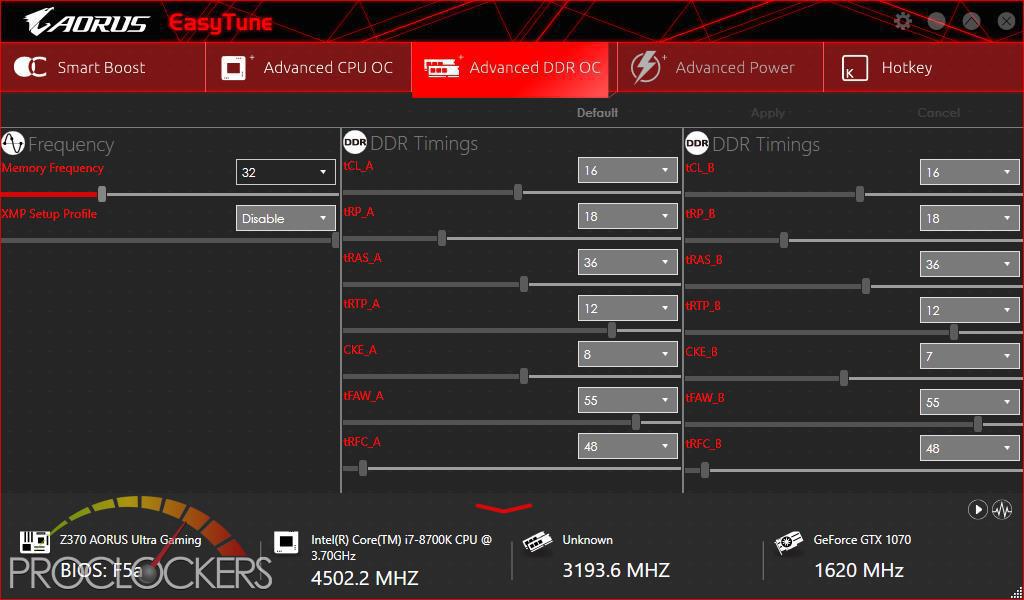
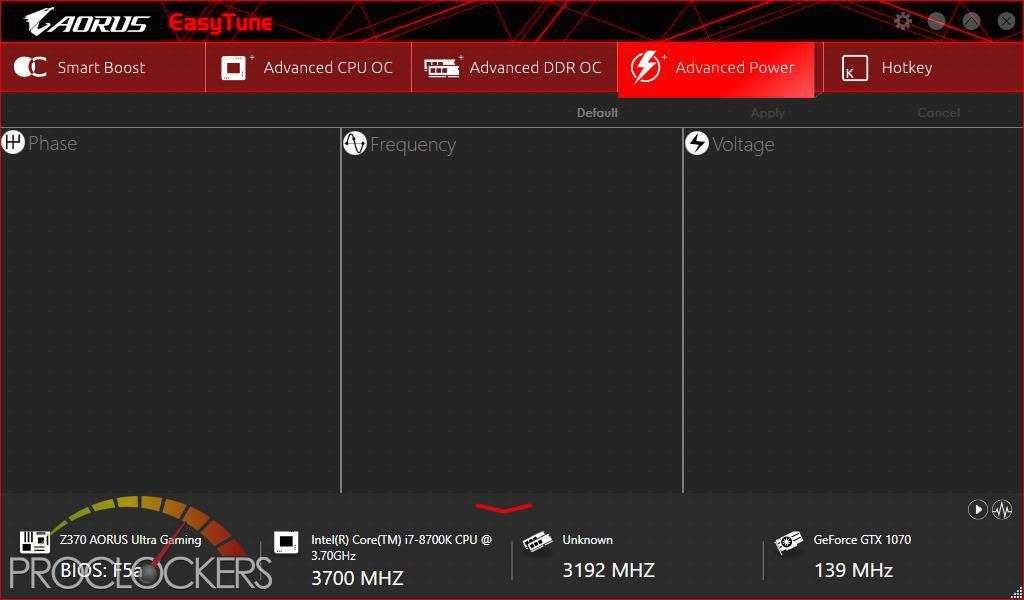
EasyTune is a simple and easy-to-use interface that allows users to fine-tune their system settings or do overclock/overvoltage in Windows environment.
Fast Boot
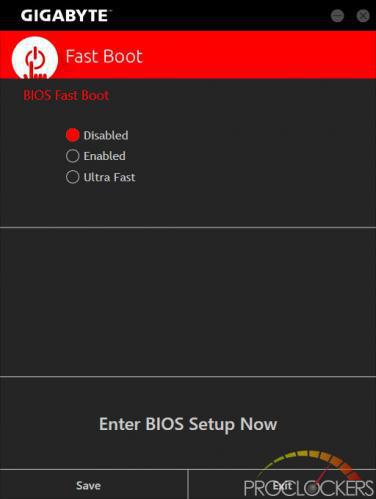
Through the Fast Boot interface, you can enable or change the Fast Boot or Next Boot After AC Power Loss setting right in the operating system.
Game Boost
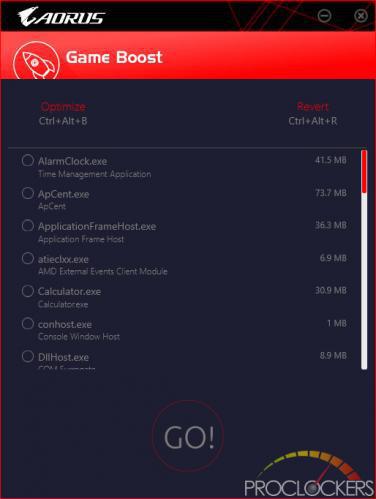
Game Boost intelligently seeks and closes unneeded programs to boost system performance.
Platform Power Management
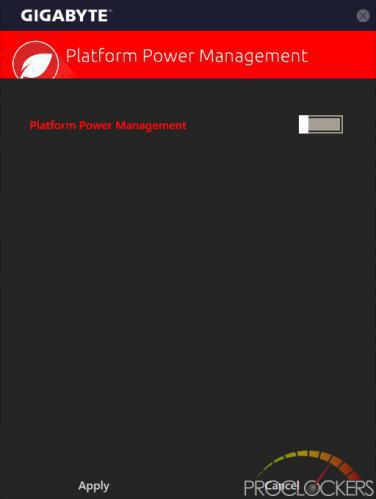
Platform Power Management is a self-explanatory utility.
RGB Fusion
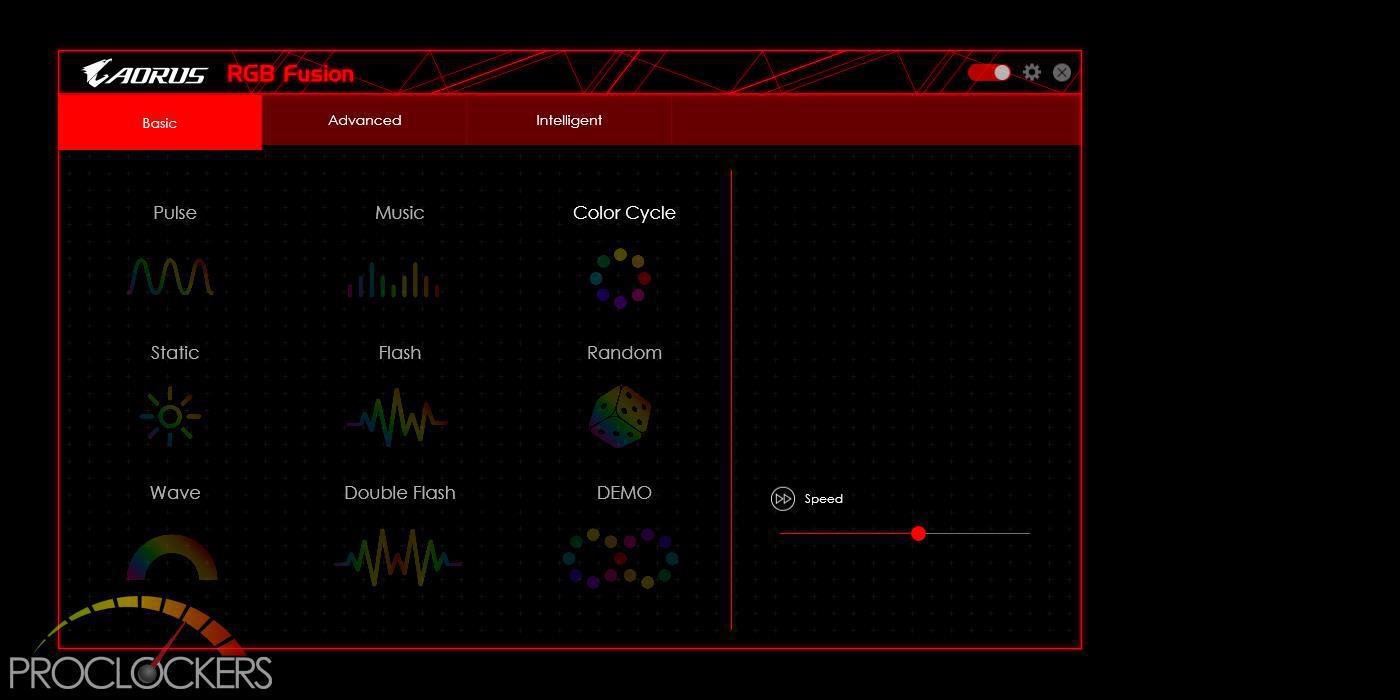
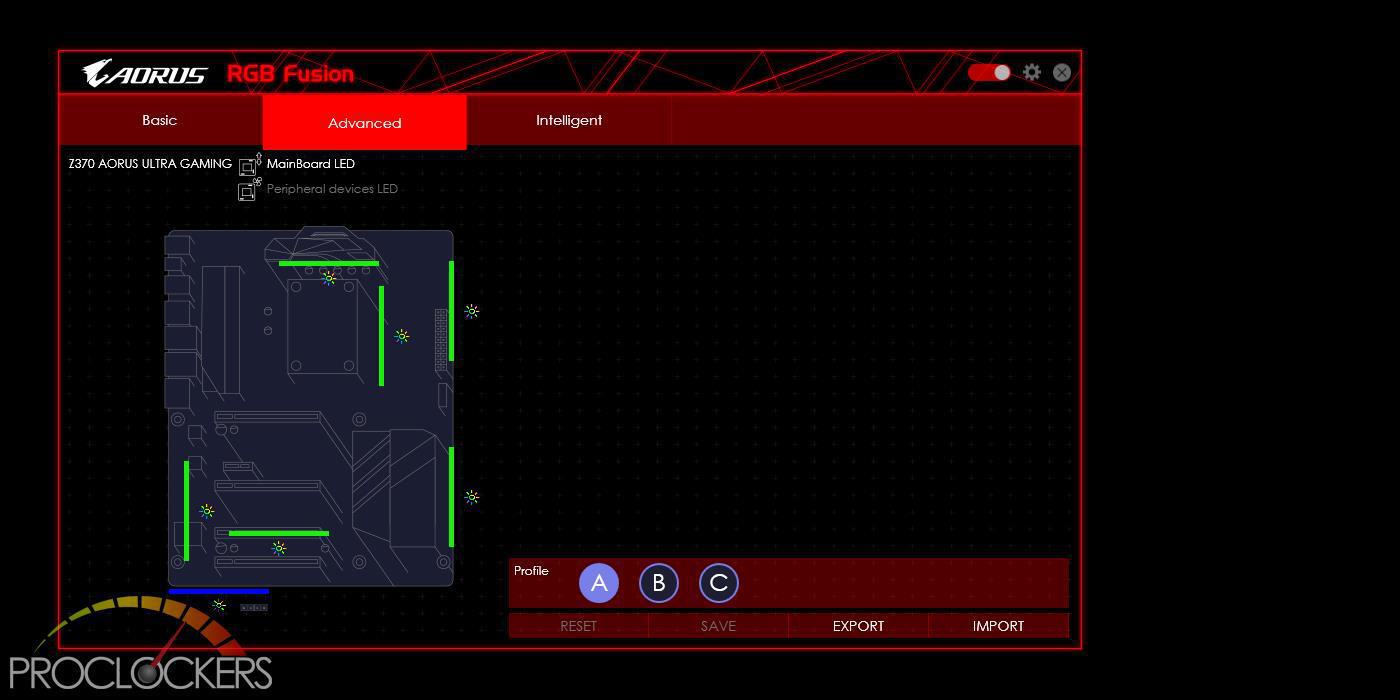
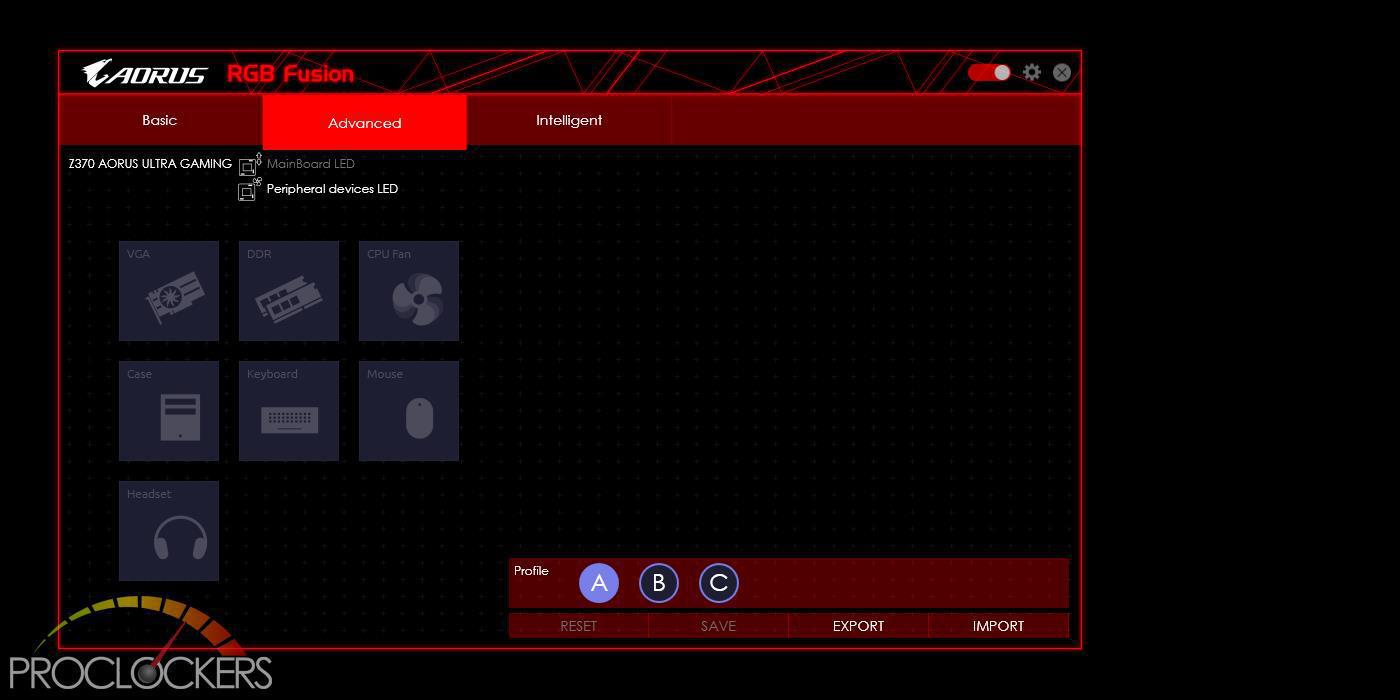
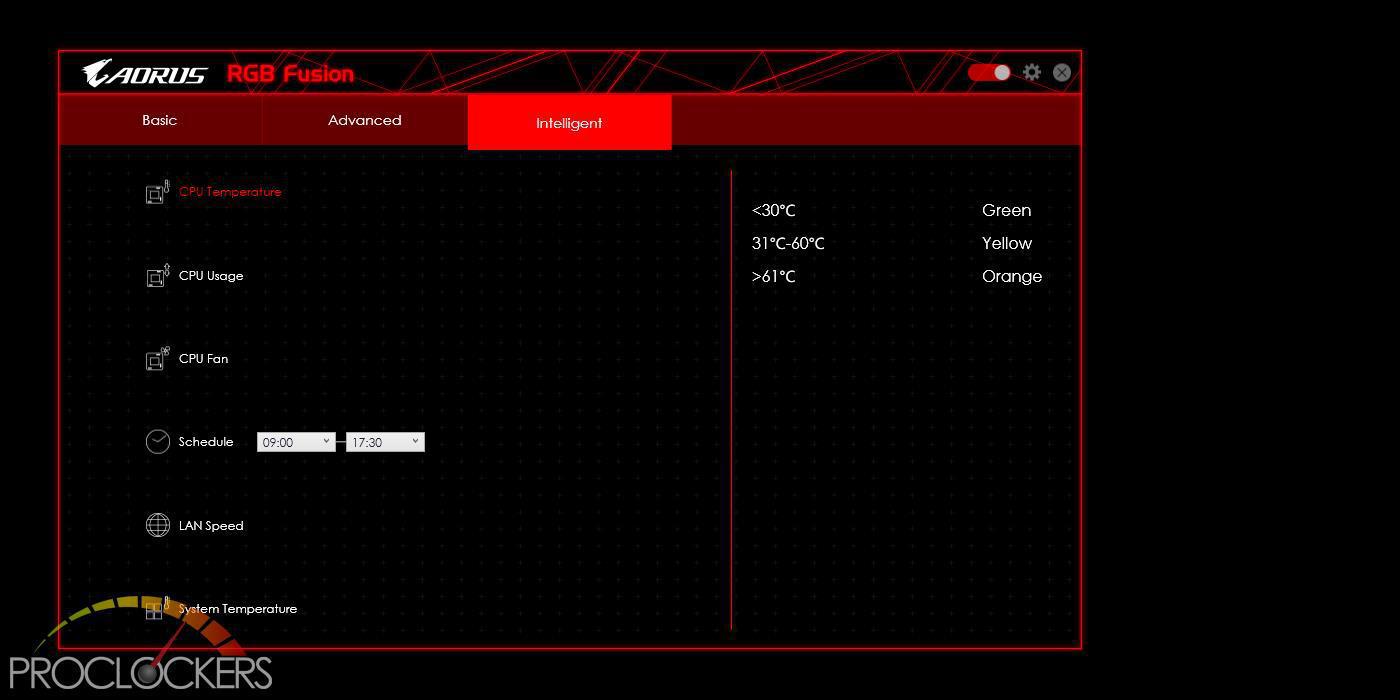
RGB Fusion allows you to enable or change the display mode for the ambient motherboard LEDs, rear panel I/O shield LEDs, and case LEDs while in the Windows.
System Information Viewer
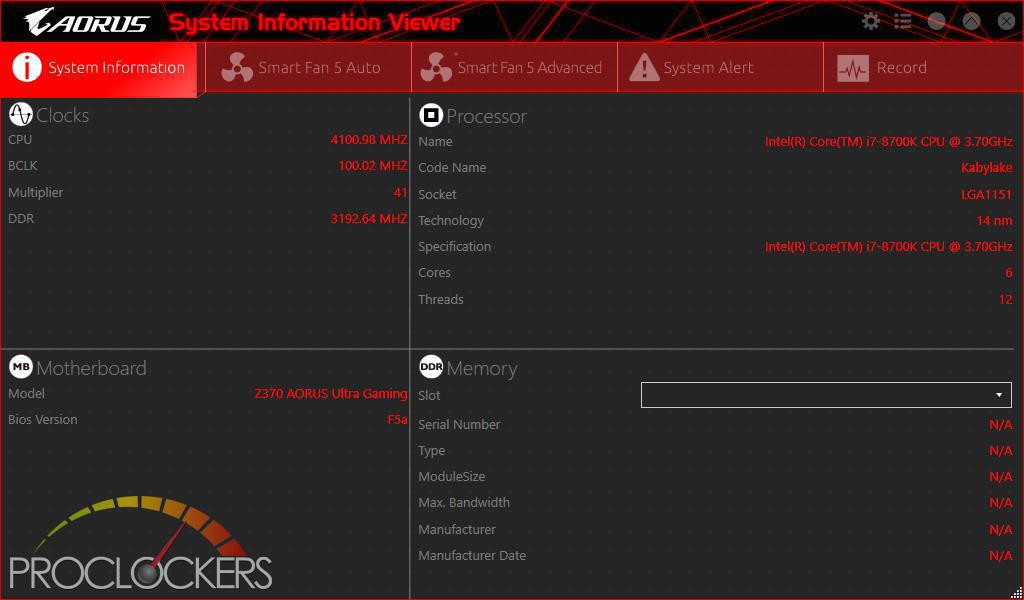
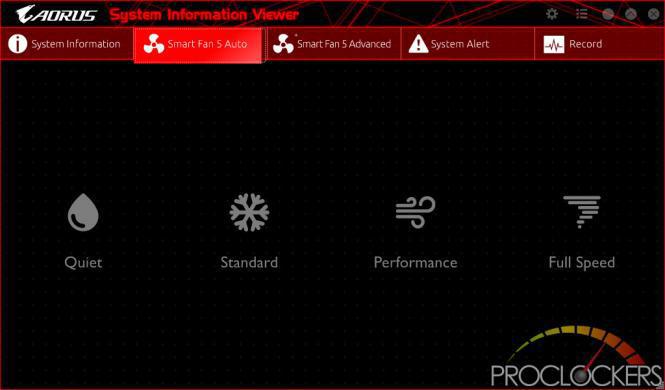
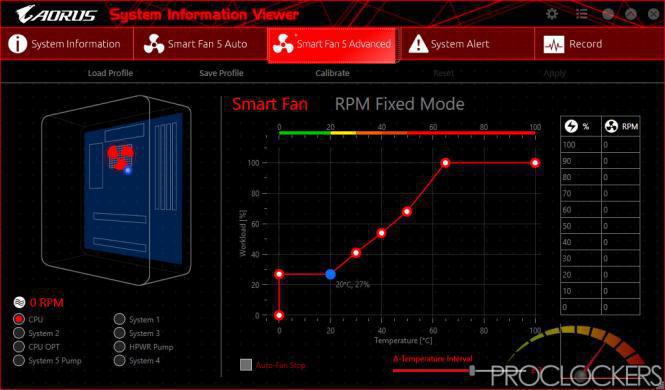
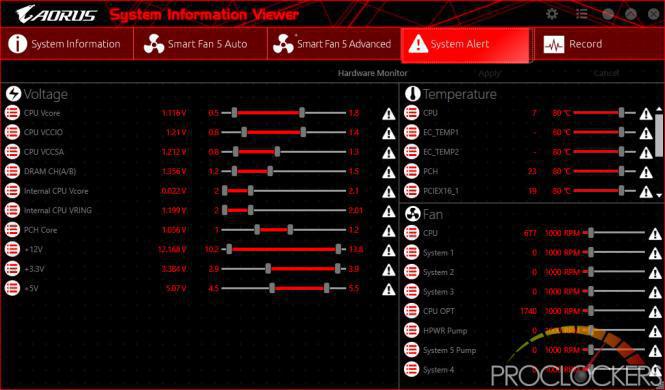
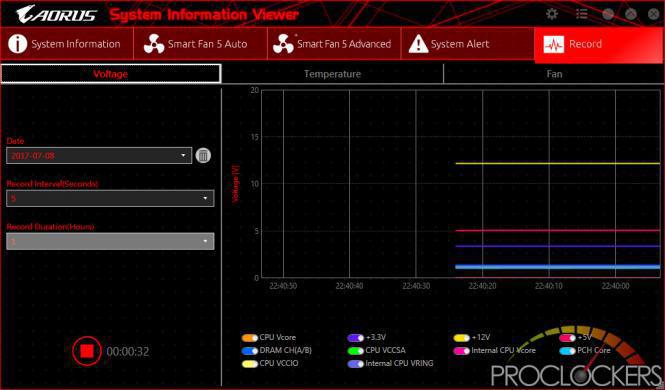
System Information Viewer allows you to monitor and adjust the fan speed in the operating system. You can also display the hardware monitor information on the desktop to view the system status at any time.
Smart Backup
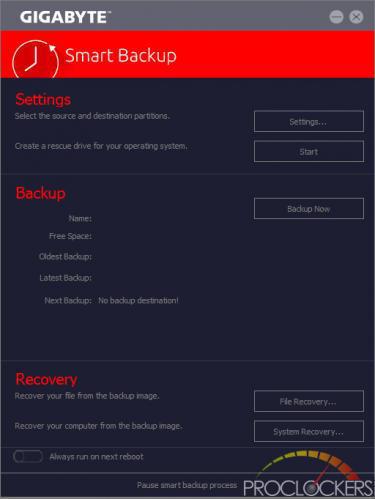
Smart Backup allows you to back up a partition as an image file every hour. You can use these images to restore your system or files when needed.
Smart TimeLock
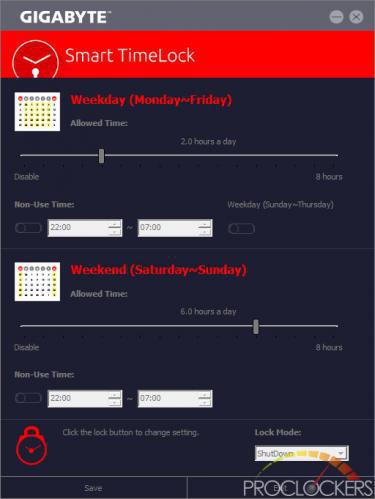
Smart TimeLock allows you to effectively manage computer or Internet usage time with simple rules and options.
Smart HUD
Offers many options for displaying real-time system information in-game.
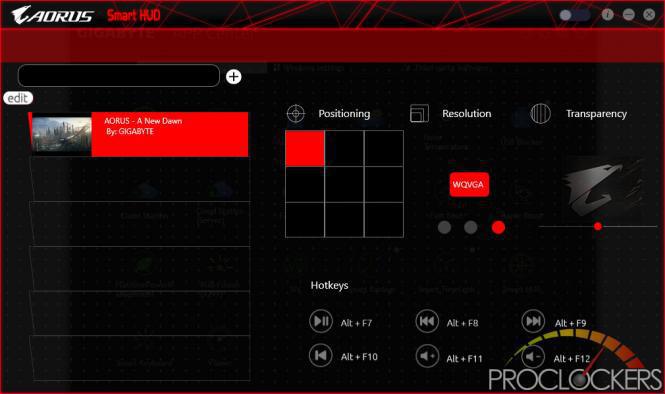
Smart Keyboard
Designed to easily create keyboard macros.
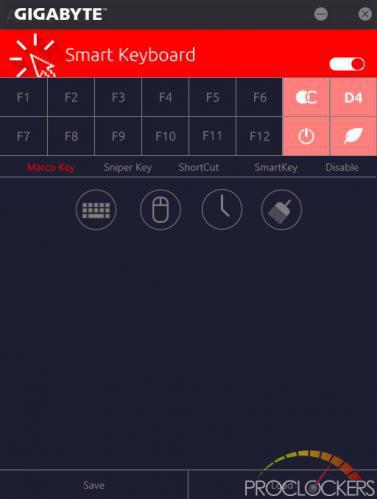
V-Tuner
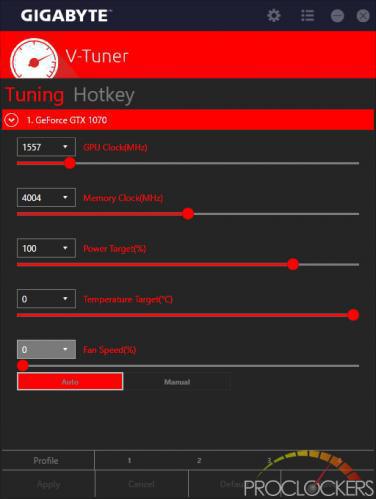
V-Tuner is a simple graphics card overclocking utility.
Performance Testing
All benchmarks are run using stock settings on the CPU, which leaves XFR2 enabled for some automatic boosting. We set our ram to its XMP rated speeds of 3200MHz @ 16-18-18-38. Games where ran at a resolution of 1920 x 1080 and higher presets used as indicated.
General Performance Testing
- Futuremark PCMark 10
- Principled Technologies WebXPRT 2015
- Passmark Performance Test 9.0
CPU Performance
- Super Pi – Mod 1.5
- Cinebench R15
- 7-zip
Memory Performance
- AIDA64
- Passmark – Memory Mark
- SiSoft Sandra
Storage Performance
- CrystalDiskMark 6.0.0
- ATTO Disk Benchmark
- AS SSD Benchmark
Synthetic Gaming Performance
- Futuremark 3DMark Firestrike
- Futuremark 3DMark Timespy
Real Gaming Performance
- Grand Theft Auto V
- Far Cry 5
- Metro: Last Light
- Deus Ex: Mankind Divided
PCMark 10
PCMark 10 is the complete benchmark for the modern office. It is the ideal test for organizations that are evaluating PCs for a workforce with a range of performance needs. The tests in this benchmark cover a wide range of activities from everyday productivity tasks to demanding work with digital media content.
PCMark 10 uses a modular approach to build relevant benchmark tests around common end-user scenarios. A Test Group is a collection of workloads that share a common theme or purpose. There are four test groups in PCMark 10, we use three of them. Essentials: covers the common, everyday ways that people use a PC. The workloads include Web Browsing, Video Conferencing, and App Start-up time. Productivity: measures system performance with everyday office applications. This test group includes the Spreadsheets and Writing workloads. Digital Content Creation: This test group’s workload reflects the demands of working with digital content and media. The tests include Photo Editing, Video Editing, and Rendering and Visualization.
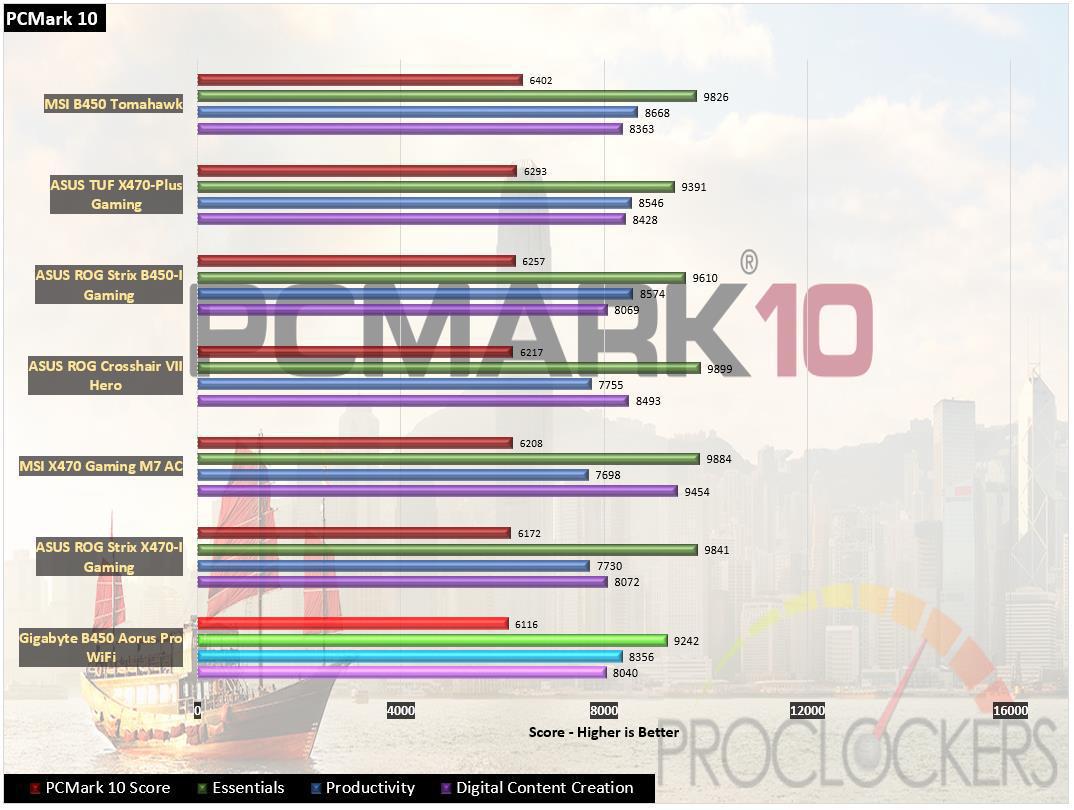
Gigabyte’s B450 Aorus Pro WiFi does decently in our PCMark 10 test, but out of our samples, comes in last place overall by a very slim margin.
WebXPRT 2015
WebXPRT 2013 uses scenarios created to mirror the tasks you do every day to compare the performance of almost any Web-enabled device. It contains four HTML5- and JavaScript-based workloads: Photo Effects, Face Detect, Stocks Dashboard, and Offline Notes. WebXPRT is run with the latest stable release version of Google Chrome browser, in this case, Version 61.
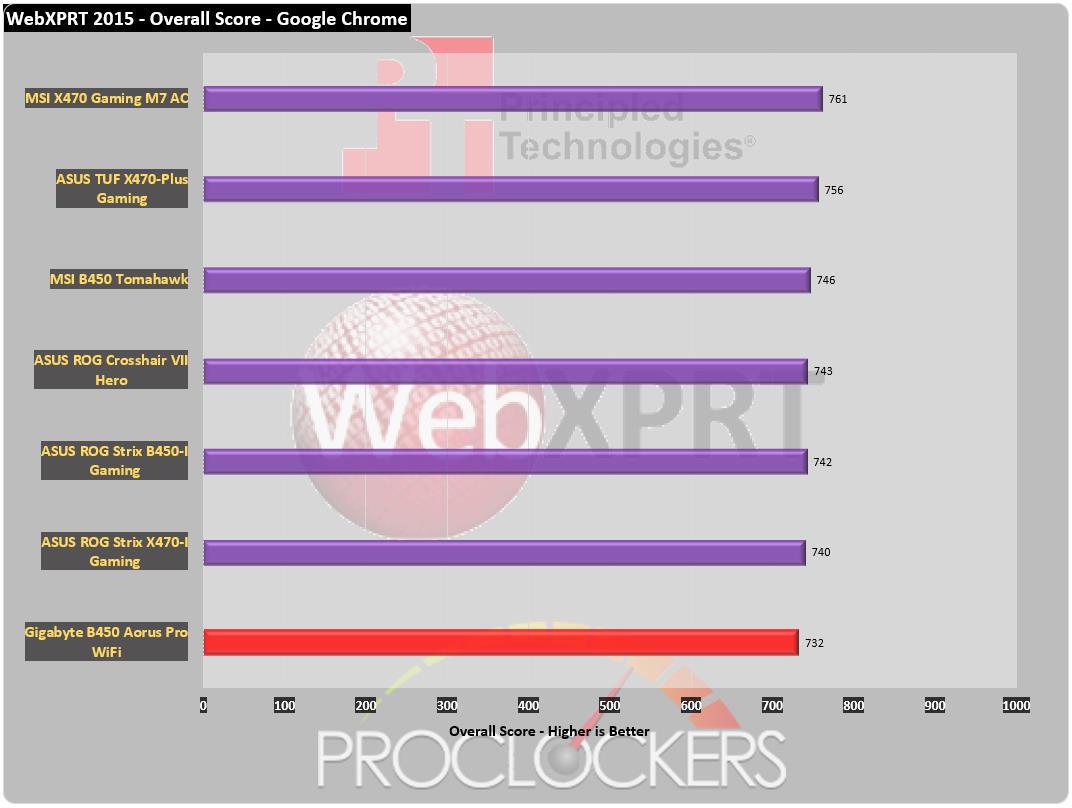
In our web-based test, WebXPRT 2015, the B450 Aorus scores 732 points +/- 9 which is very close to similar platforms.
PassMark PerformanceTest 9
Fast, easy to use, PC speed testing and benchmarking. PassMark PerformanceTest allows you to objectively benchmark a PC using a variety of different speed tests and compare the results to other computers.
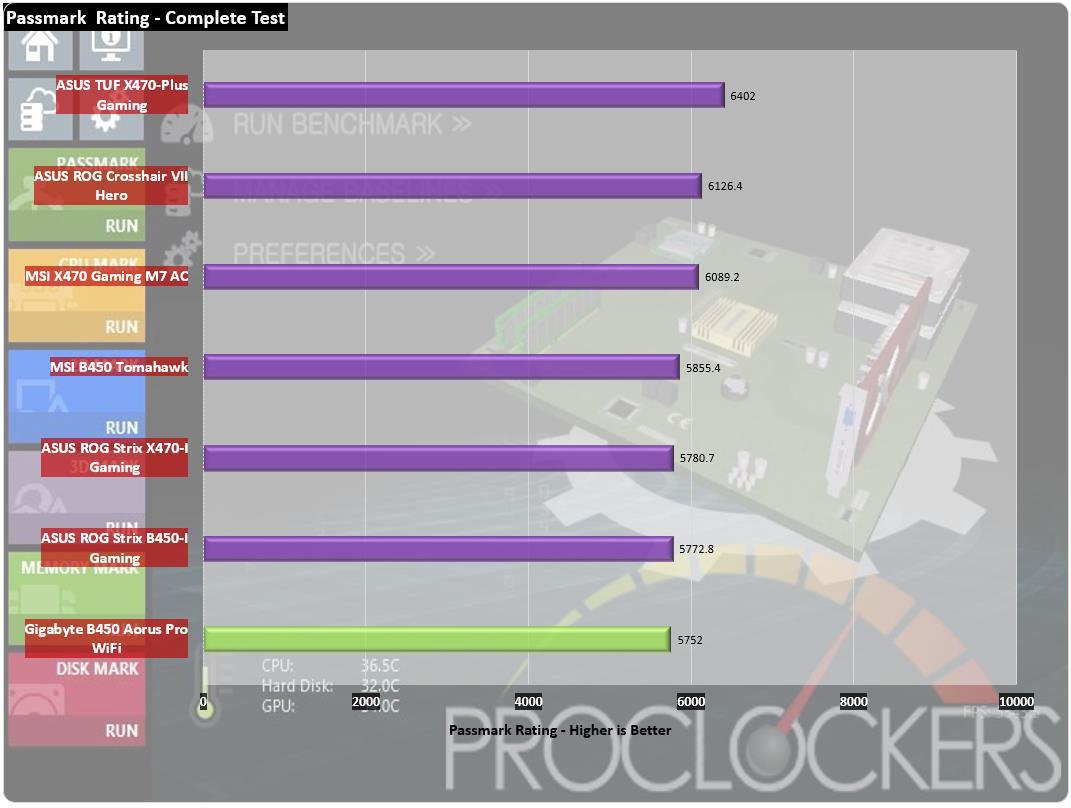
In Passmark’s Performance Mark 9, the B450 scores 5752.
CPU Performance Testing
Super PI Modded 1.5
“In August 1995, the calculation of pi up to 4,294,960,000 decimal digits was succeeded by using a supercomputer at the University of Tokyo. The program was written by D.Takahashi in collaboration with Dr.Y.Kanada at the computer center. This record should be the current world record. (Details are shown in the windows help.) This record-breaking program was ported to personal computer environments such as Windows NT and Windows 95. In order to calculate 33.55 million digits, it takes 3 days with a Pentium 90 MHz, 40 MB main memory and 340 MB available storage.”
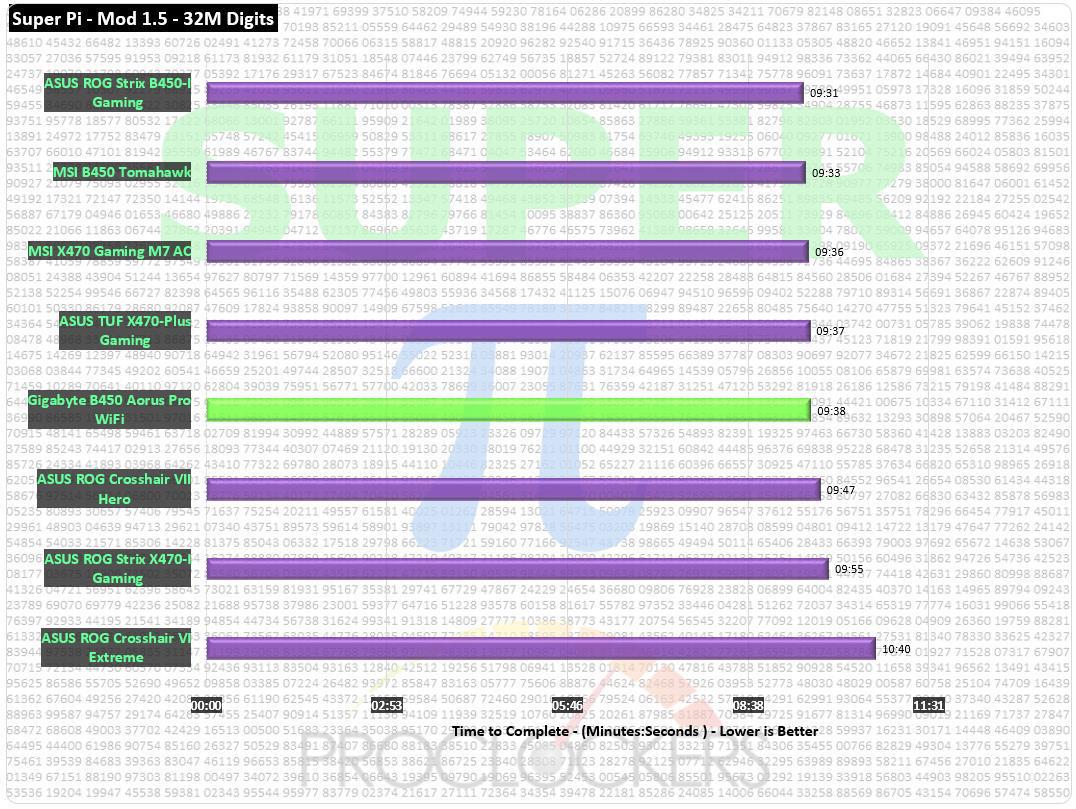
In our first CPU test, the B450 Aorus Pro Wifi comes in at 9 minutes and 38 seconds for 32M digits.
CINEBENCH R15
“CINEBENCH is a real-world cross platform test suite that evaluates your computer’s performance capabilities. CINEBENCH is based on MAXON’s award-winning animation software CINEMA 4D, which is used extensively by studios and production houses worldwide for 3D content creation. MAXON software has been used in blockbuster movies such as Iron Man 3, Oblivion, Life of Pi or Prometheus and much more. CINEBENCH is the perfect tool to compare CPU and graphics performance across various systems and platforms (Windows and OS X). And best of all: It’s completely free.”
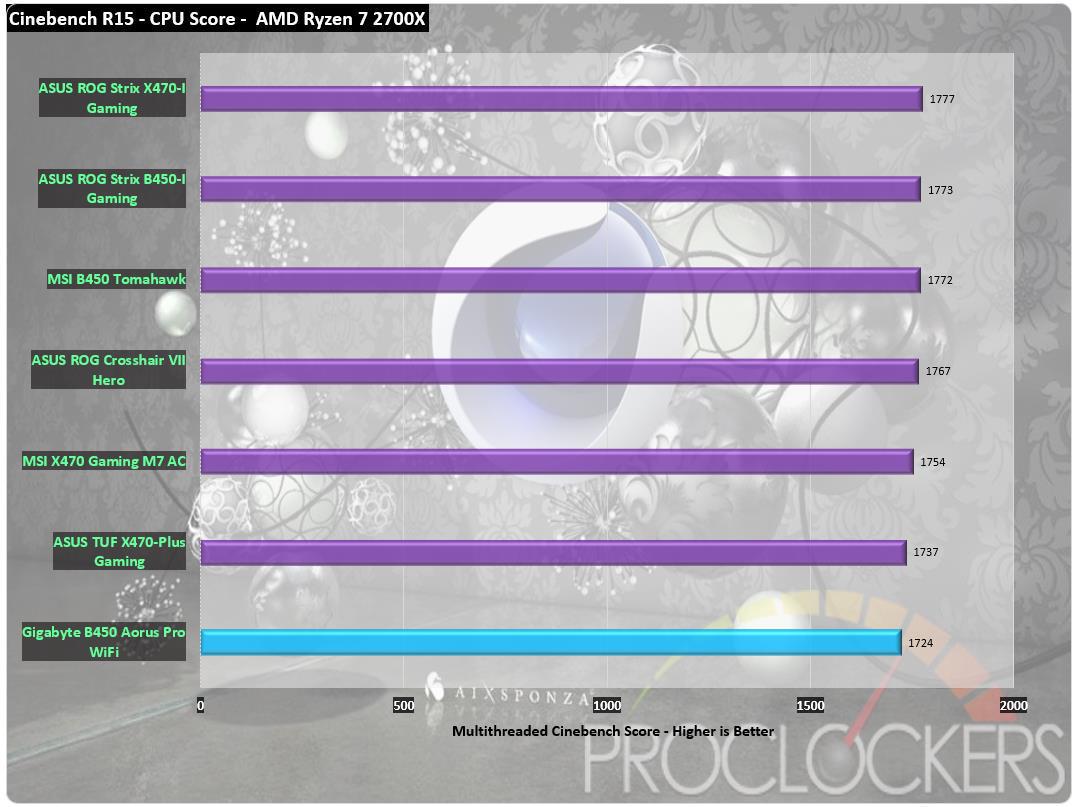
With all 16 threads firing in Cinebench R15, the B450 scores 1724 in the multi-threaded test.
7-Zip
The benchmark shows a rating of MIPS (million instructions per second). The rating value is calculated from the measured speed, and it is normalized with results of Intel Core 2 CPU with multi-threading option switched off. So if you have modern CPU from Intel or AMD, rating values in single-thread mode must be close to real CPU frequency. There are two tests, compression with LZMA method and decompression with LZMA method. Once the total passes reach 100, the score is taken.
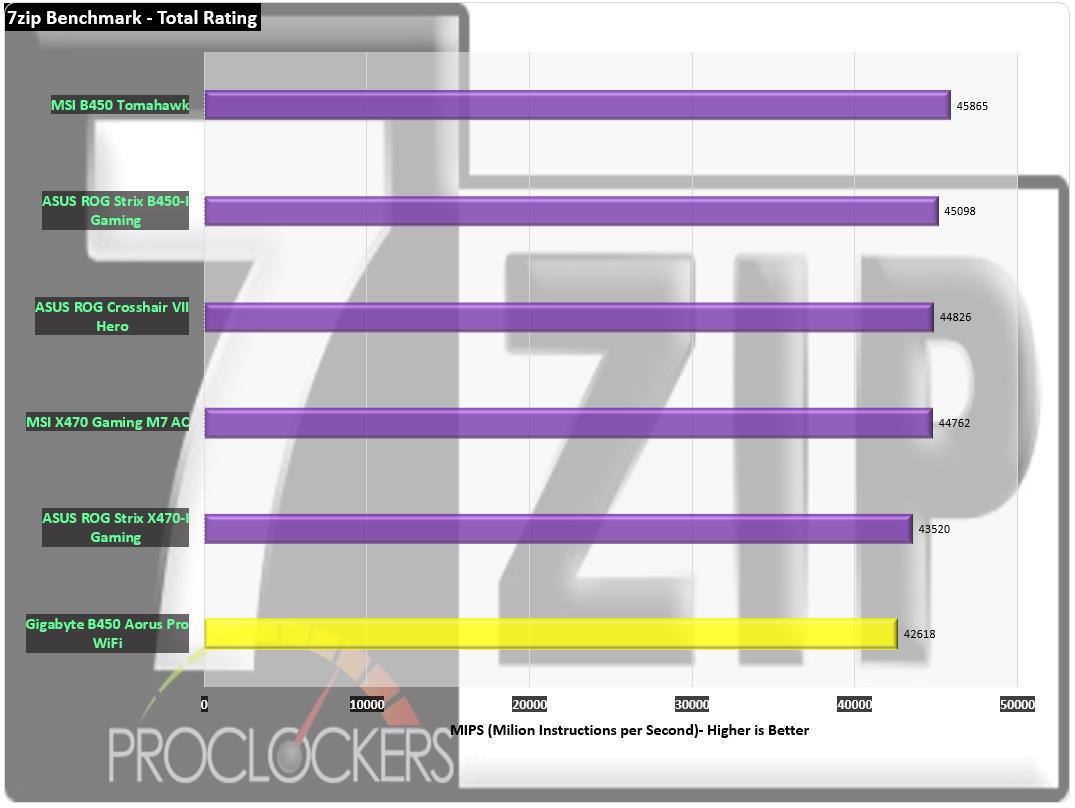
7-Zip’s benchmark comes in at 42,618 MIPS.
Memory Performance Testing
AIDA64 Engineer Edition
“FinalWire Ltd. today announced the immediate availability of AIDA64 Extreme Edition 1.50 software, a streamlined diagnostic and benchmarking tool for home users; and the immediate availability of AIDA64 Business Edition 1.50 software, an essential network management solution for small and medium scale enterprises. The new AIDA64 update implements AVX-optimized benchmarks for the upcoming Intel Sandy Bridge processors, adds a brand-new video encoding benchmark, and supports the latest AMD and NVIDIA graphics processors.”
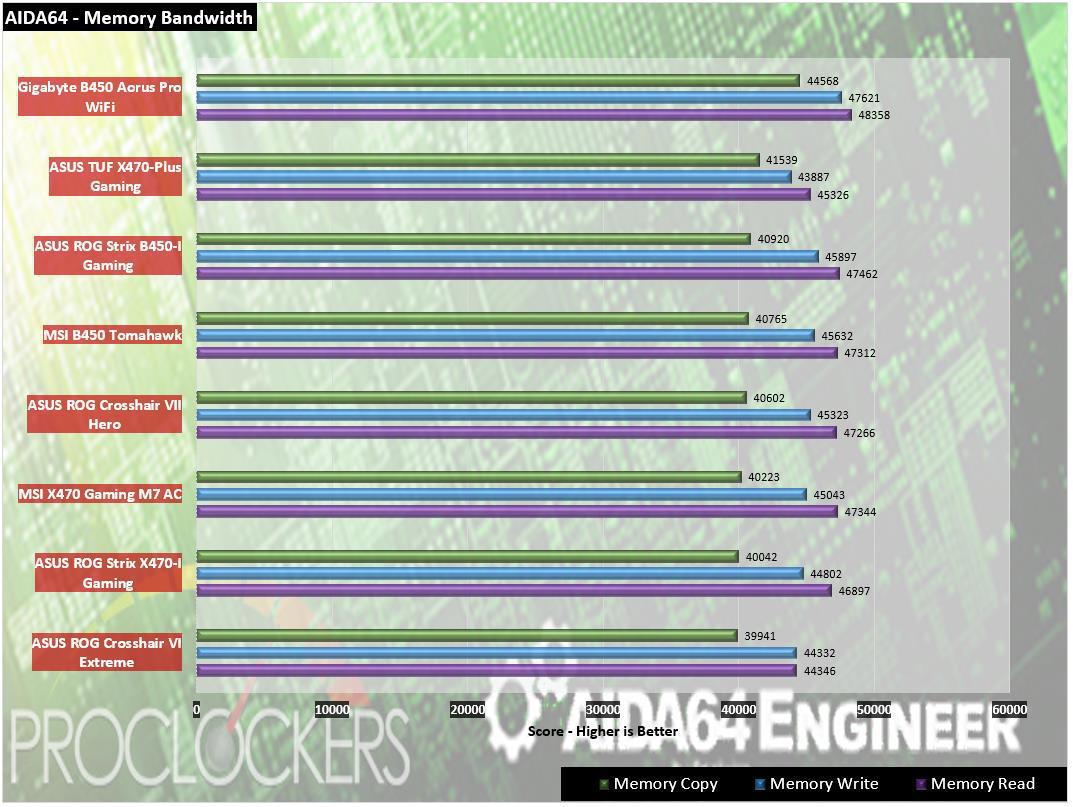
While raw CPU performance wasn’t hitting number one, testing memory performance turns the tables with the B450 Aorus Pro WiFi coming in first place with more than 44.5GB/s in copy bandwidth.
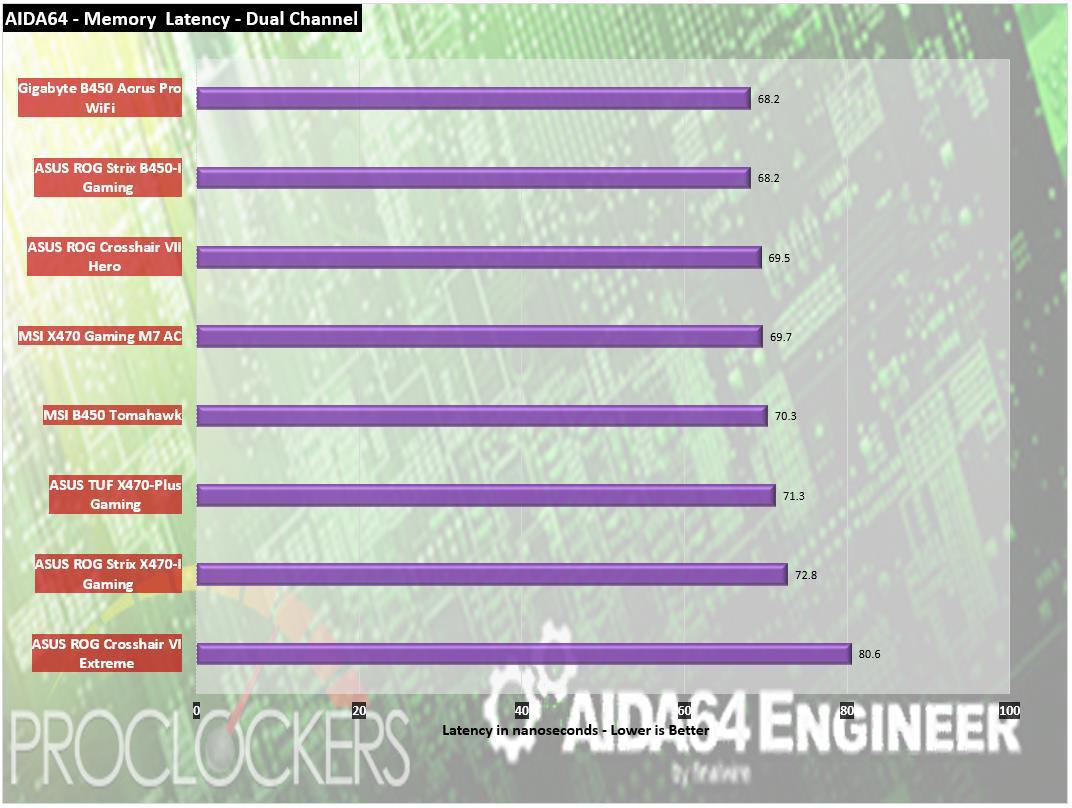
Latency comes in at a snappy 68.2ns, another first place.
Passmark Performance Test – Memory Mark – Threaded
“Fast, easy to use, PC speed testing and benchmarking. PassMark Performance Test ™ allows you to objectively benchmark a PC using a variety of different speed tests and compare the results to other computers.”
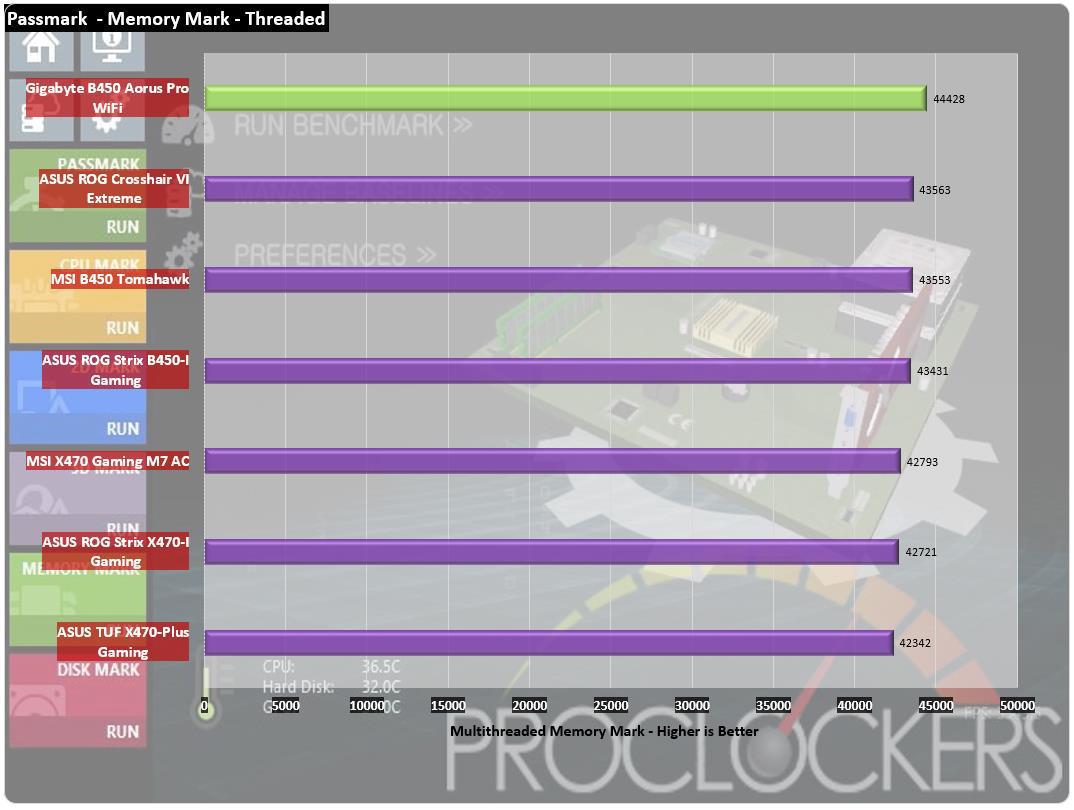
In PassMark’s threaded Memory Mark, the B450 scores 44428 points.
SiSoft Sandra
“SiSoftware Sandra provides a robust package of diagnostic tools for testing your system and teasing out its problems–or potential headaches.”
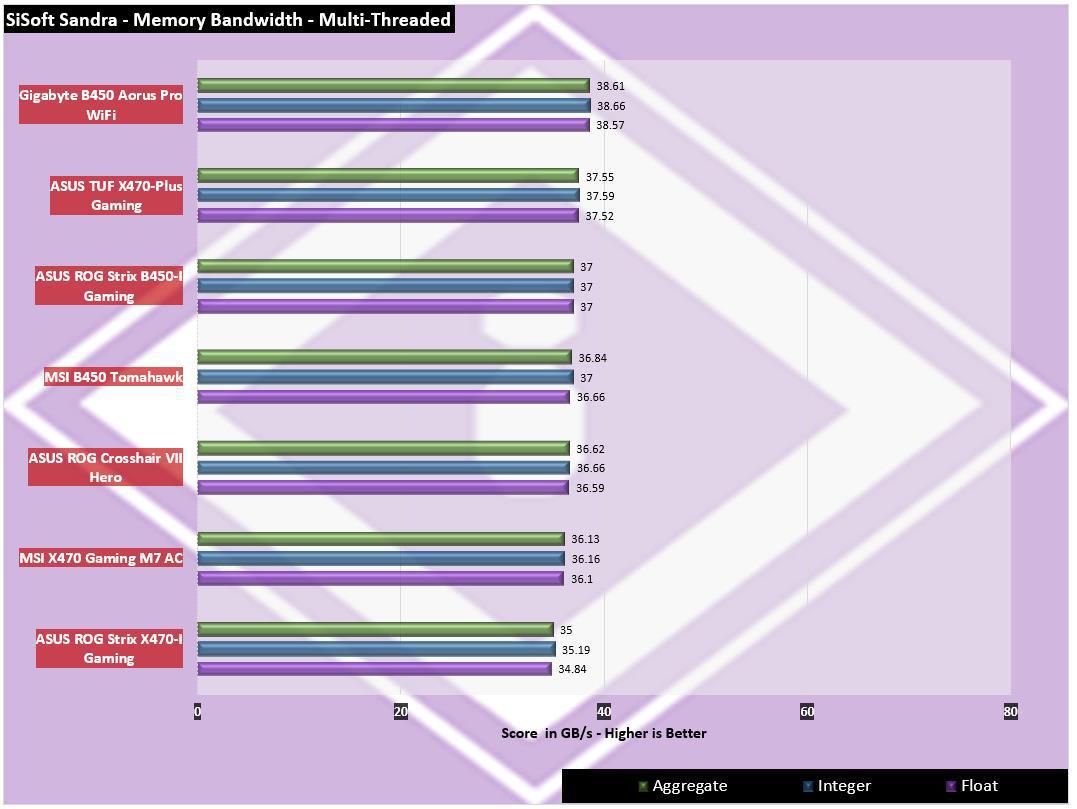
Our last memory test is another win coming in at well over 38GB/s across the board in SiSoft Sandra.
Storage Testing
ATTO Disk Benchmark
“As the industry’s leading provider of high-performance storage & network connectivity products, ATTO has created a widely-accepted Disk Benchmark freeware utility to help measure storage system performance. As one of the top tools utilized in the industry, Disk Benchmark identifies performance in hard drives, solid state drives, RAID arrays as well as connections to storage. Top drive manufacturers, like Hitachi, build and test every drive using the ATTO Disk Benchmark”
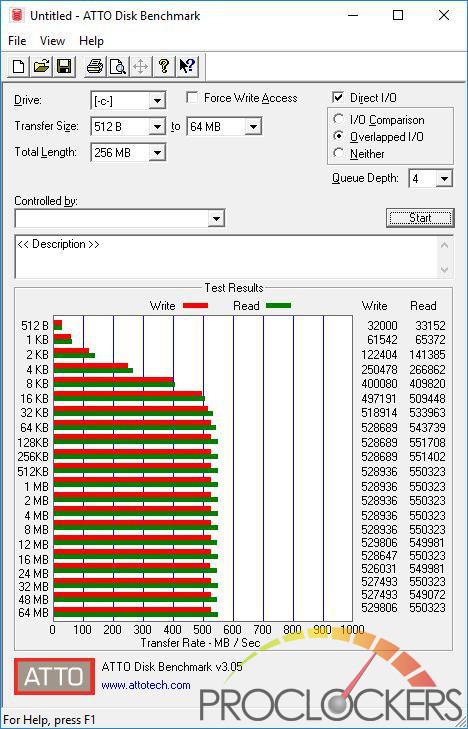
We’ll be testing a SATA SSD today and our first test shows it hitting its rated speeds with no bottlenecks.
CrystalDiskMark 6.0
“CrystalDiskMark is designed to quickly test the performance of your hard drives. Currently, the program allows measuring sequential and random read/write speeds.”
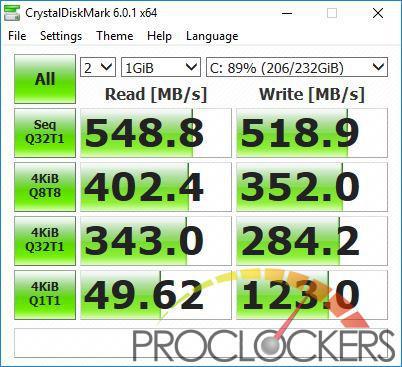
CrystalDiskMark comes in about 10MB/s slower on writes than ATTO, but still pretty close.
AS SSD
The AS SSD benchmark determines the performance of Solid State Drives (SSD). The tool contains six synthetic and three copy tests. The synthetic tests determine the sequential and random read and write performance of the SSD. These tests are performed without using the operating system cache. In the sequential test, the program measures how long it takes to read and write a 1 GB file. In the 4K test, read and write performance is determined for randomly selected 4K blocks. The 4K-64 Third test is equivalent to the 4K procedure, except that the read and write operations are distributed to 64 threads. This test should show differences between the IDE operating mode where NCQ is not supported and the AHCI mode for SSDs with Native Command Queuing (NCQ). The additional compression test can measure the performance of the SSD as a function of the compressibility of the data. This is especially important for the controllers that are used to increase the performance and life of the cell compression.
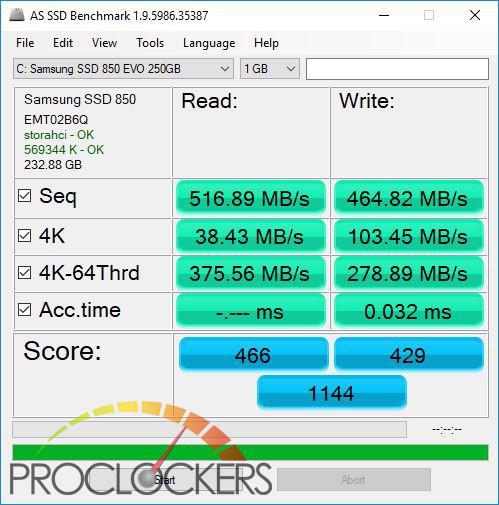
AS SSD comes in with a combined score of 1144 which is one of the higher score’s we saw out of this Samsung SSD.
Synthetic Game Testing
3DMark – Fire Strike
“Fire Strike is a showcase DirectX 11 benchmark designed for today’s high-performance gaming PCs. It is our most ambitious and technical benchmark ever, featuring real-time graphics rendered with detail and complexity far beyond what is found in other benchmarks and games today”
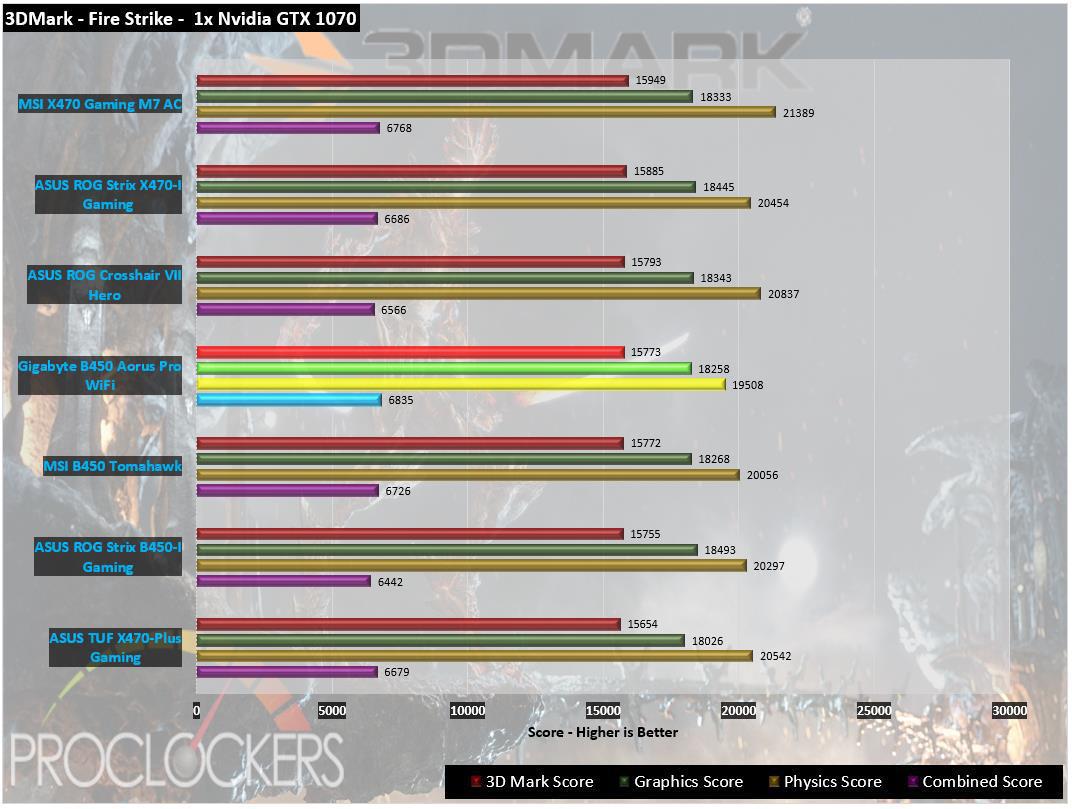
Our first synthetic game test, Firestrike, comes in around the middle of the pack with a 3D Mark score of 15,773.
3DMark – Time Spy
“3Dmark Time Spy is a new DirectX 12 benchmark test for Windows 10 gaming PCs. Time Spay is one of the first DirectX 12 apps to be built “the right way” from the ground up to fully realize the performance gains that the new API offers. With DirectX 12 engine, which supports new API features like asynchronous compute, explicit multi-adapter, and multi-threading, Time Spy is the ideal test for benchmarking the latest graphics cards.”
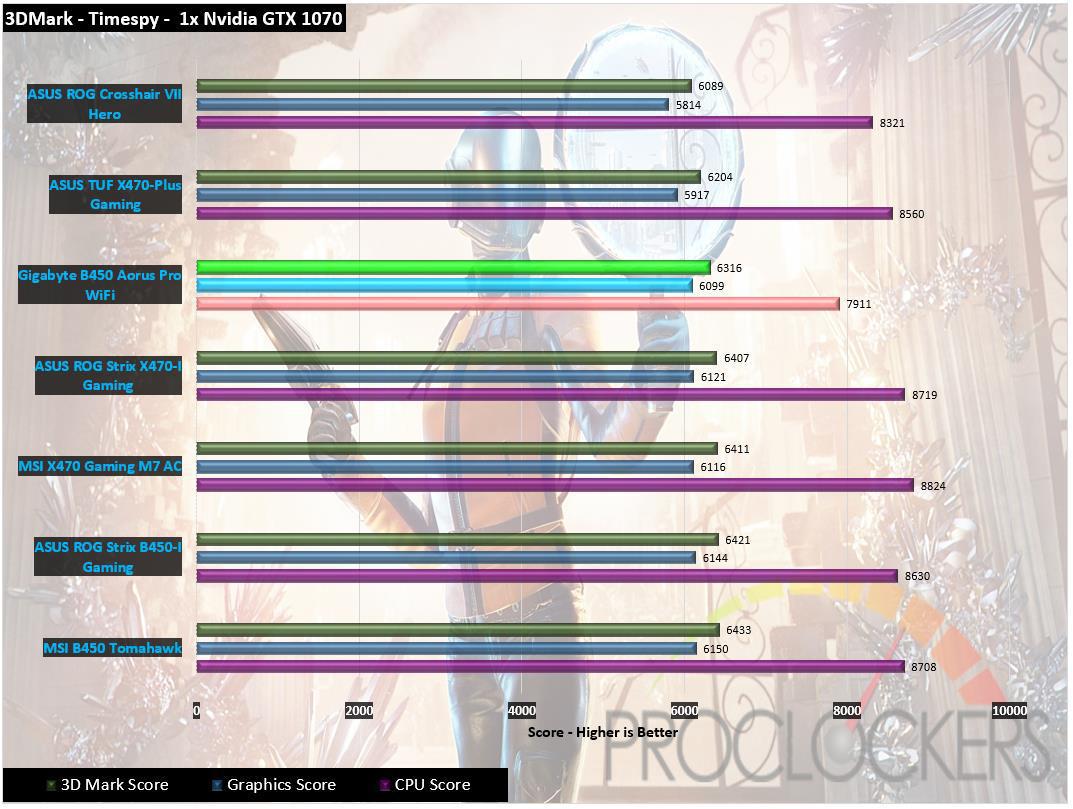
Timespy gives us a score of 6316 which places it towards the top of the list.
Real Gaming Performance
Grand Theft Auto V
“When a young street hustler, a retired bank robber, and a terrifying psychopath find themselves entangled with some of the most frightening and deranged elements of the criminal underworld, the U.S. government and the entertainment industry, they must pull off a series of dangerous heists to survive in a ruthless city in which they can trust nobody, least of all each other.”
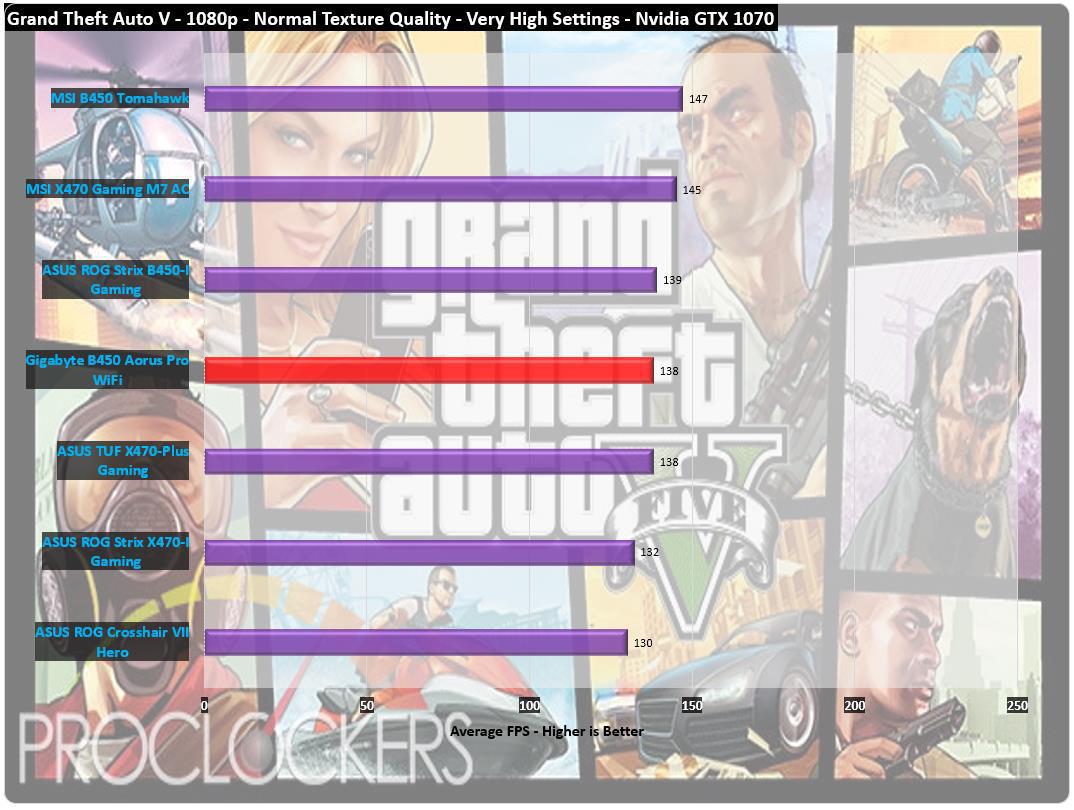
Our first real game test is the long-running Grand Theft Auto V which manages 138 FPS average.
Far Cry 5
Anything can happen. Everything will.
Welcome to Hope County, Montana, land of the free and the brave, but also home to a fanatical doomsday cult—known as The Project at Eden’s Gate—that is threatening the community’s freedom. Stand up to the cult’s leaders, Joseph Seed, and the Heralds, as you spark the fires of resistance that will liberate the besieged community.
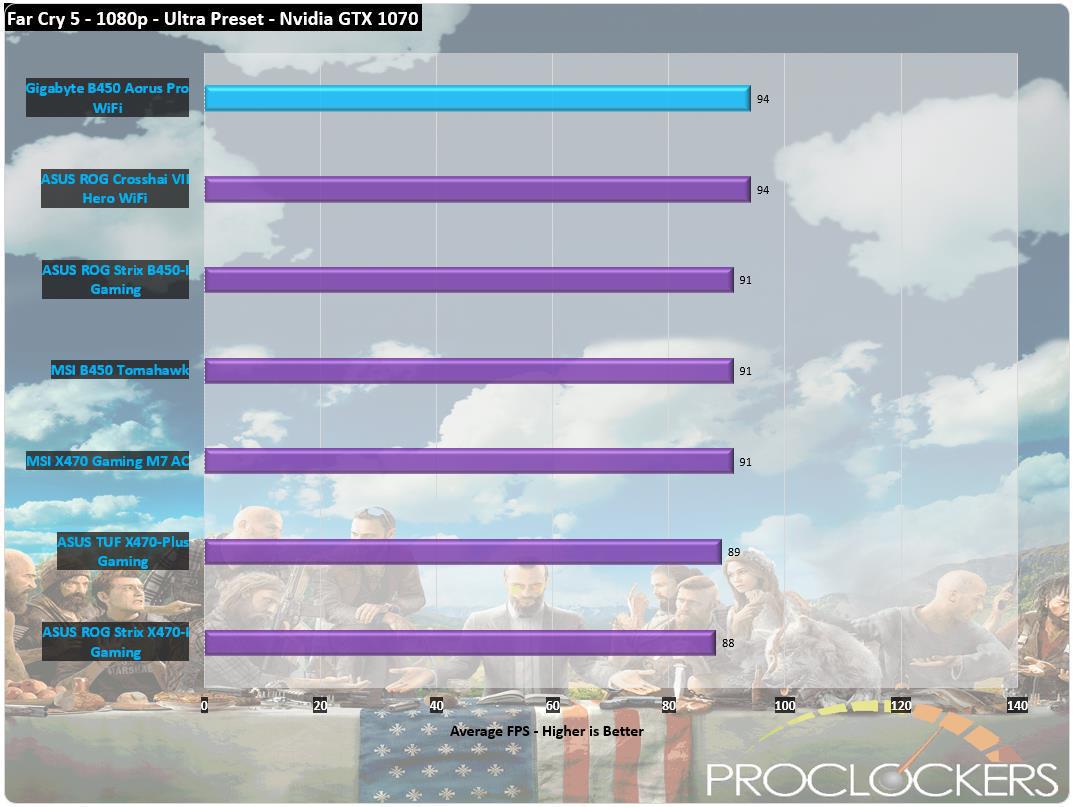
Our newest game in the lineup, Far Cry 5 gives us 94 FPS on average at the Ultra preset at 1080p resolution.
Metro: Last Light
“It Is the Year 2034. Beneath the ruins of post-apocalyptic Moscow, in the tunnels of the Metro, the remnants of mankind are besieged by deadly threats from outside – and within. Mutants stalk the catacombs beneath the desolate surface, and hunt amidst the poisoned skies above.”
Developed by 4A Games and published by Deepsilver, Metro: Last Light uses the 4A game engine. At its highest settings, the 4A game engine is capable of bringing all but the most extreme gaming systems to their knees.
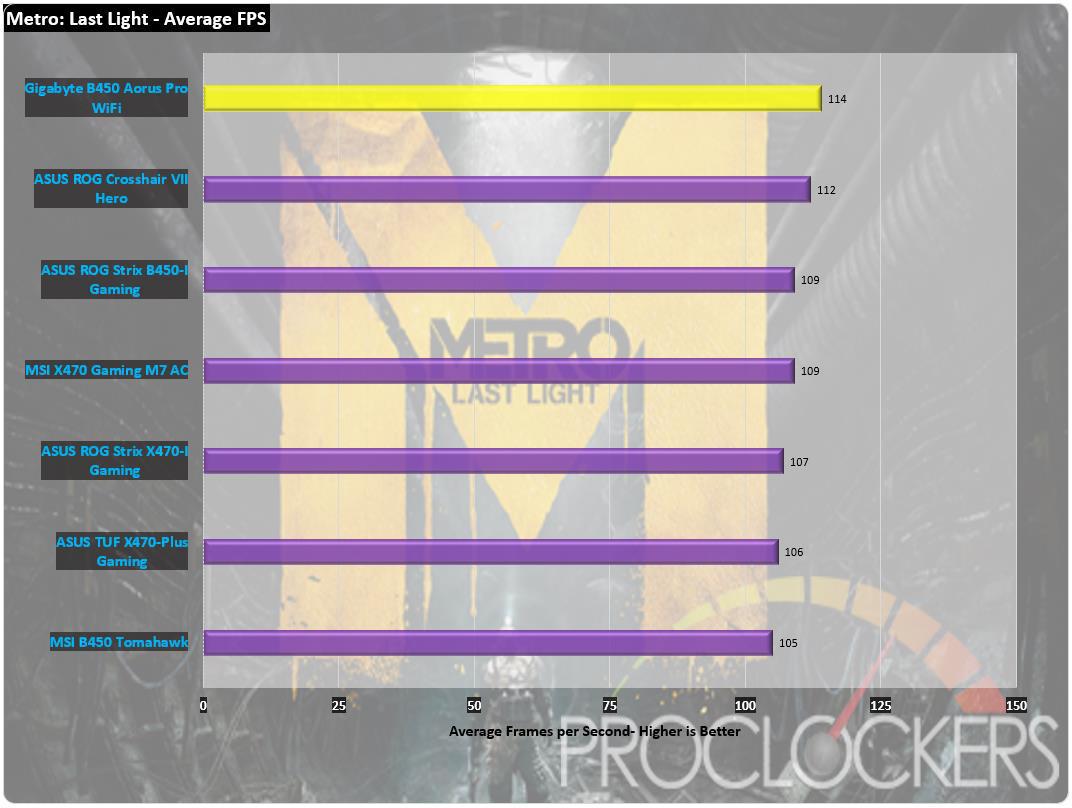
Metro Last light gives us 114 FPS average.
Dues Ex: Mankind Divided
The year is 2029, and mechanically augmented humans have now been deemed outcasts, living a life of complete and total segregation from the rest of society. Now an experienced covert operative, Adam Jensen is forced to operate in a world that has grown to despise his kind. Armed with a new arsenal of state-of-the-art weapons and augmentations, he must choose the right approach, along with who to trust, in order to unravel a vast worldwide conspiracy.
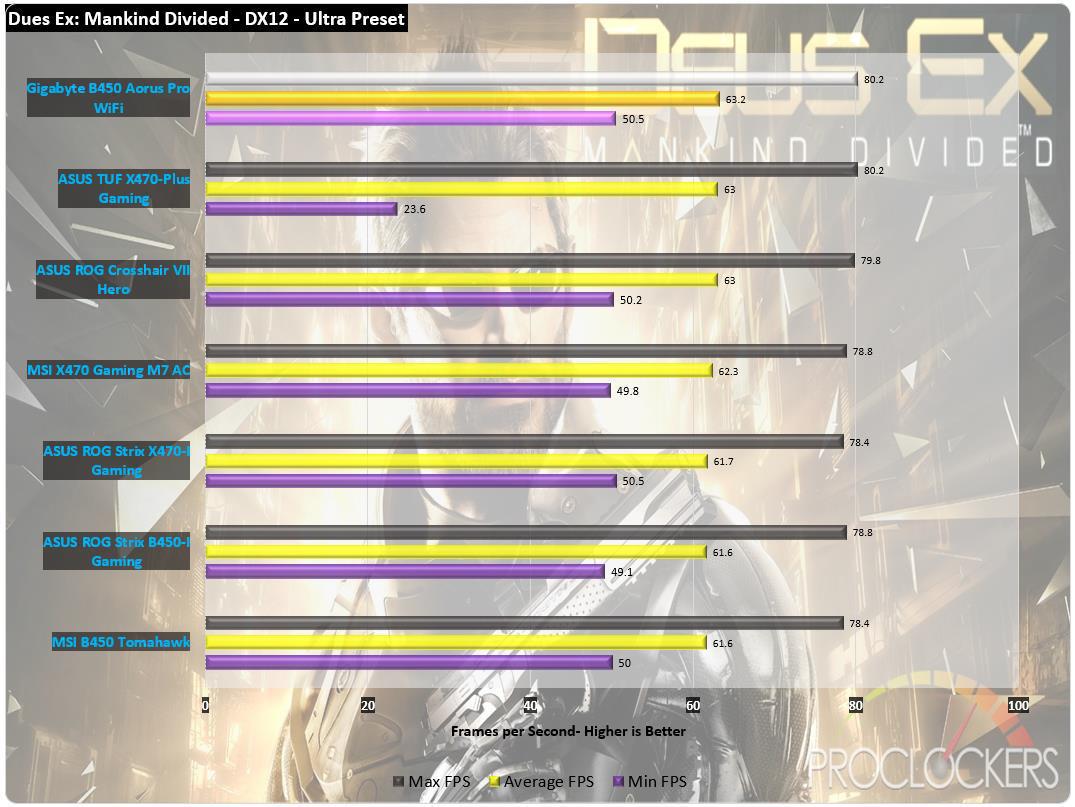
Dues Ex Mankind Divided gives us a fully playable 63.2 FPS average.
Overclocking
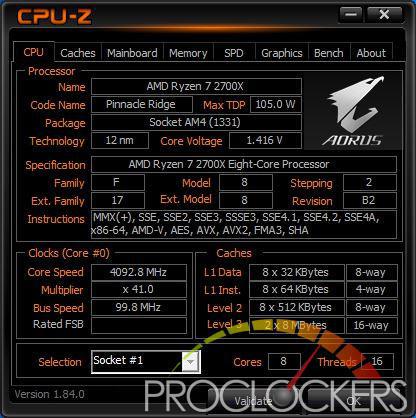
Our experience with Overclocking 2nd gen Ryzen hasn’t been huge gains since their automatic tools are quite well tuned. AMD simply doesn’t leave much on the table un-tapped. Sitting at the windows desktop here we are already seeing the CPU running at around 4.1GHz as indicated by CPU-Z.
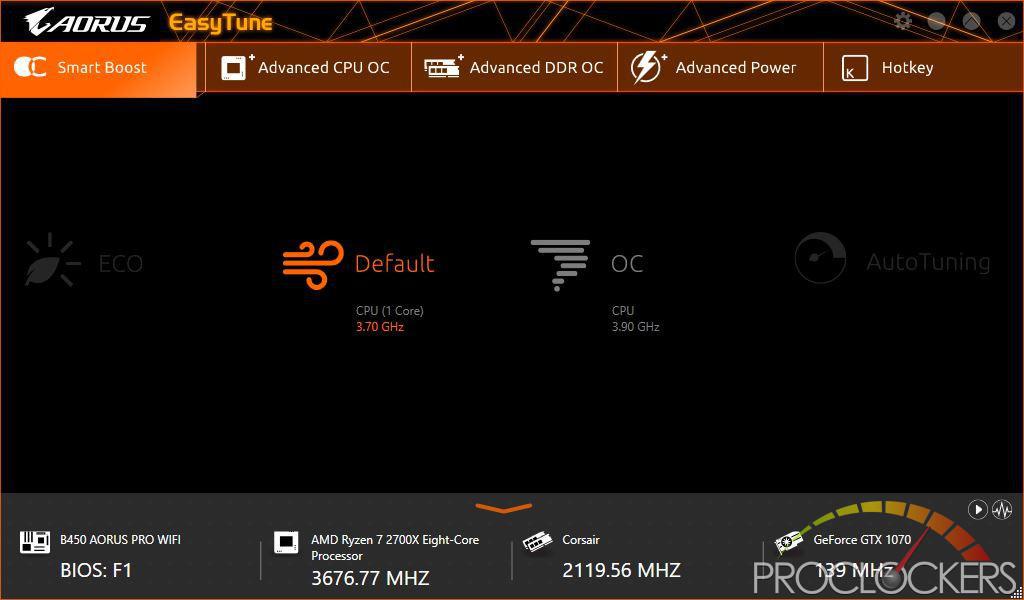
Using the Easy Tune software is probably the easiest way to get a bit extra.
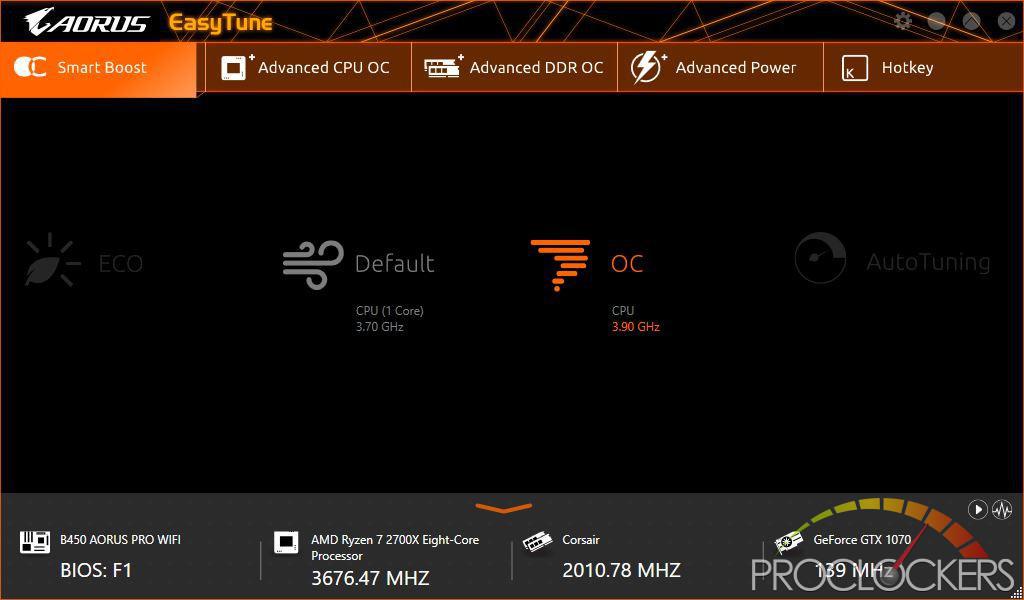
The OC profile gives us 3.9GHz across all cores. AutoTune is locked out on this platform.
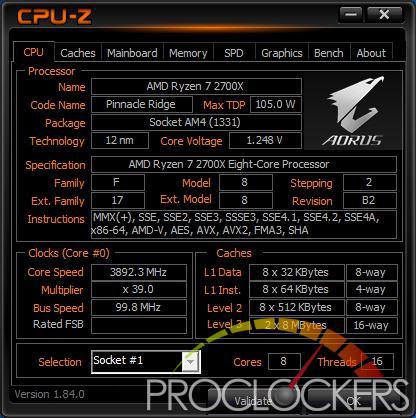
This is what you get, 8 cores at 3.9GHz, but we think we can do better.
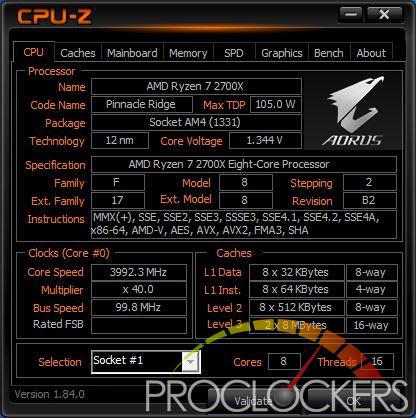
Hand tuning only got us up to 4.0 across all cores. The B450 chipset doesn’t have as advanced voltage controls so getting everything where we need it isn’t as easy. In the end, 4.0 is all we could get 100% stable.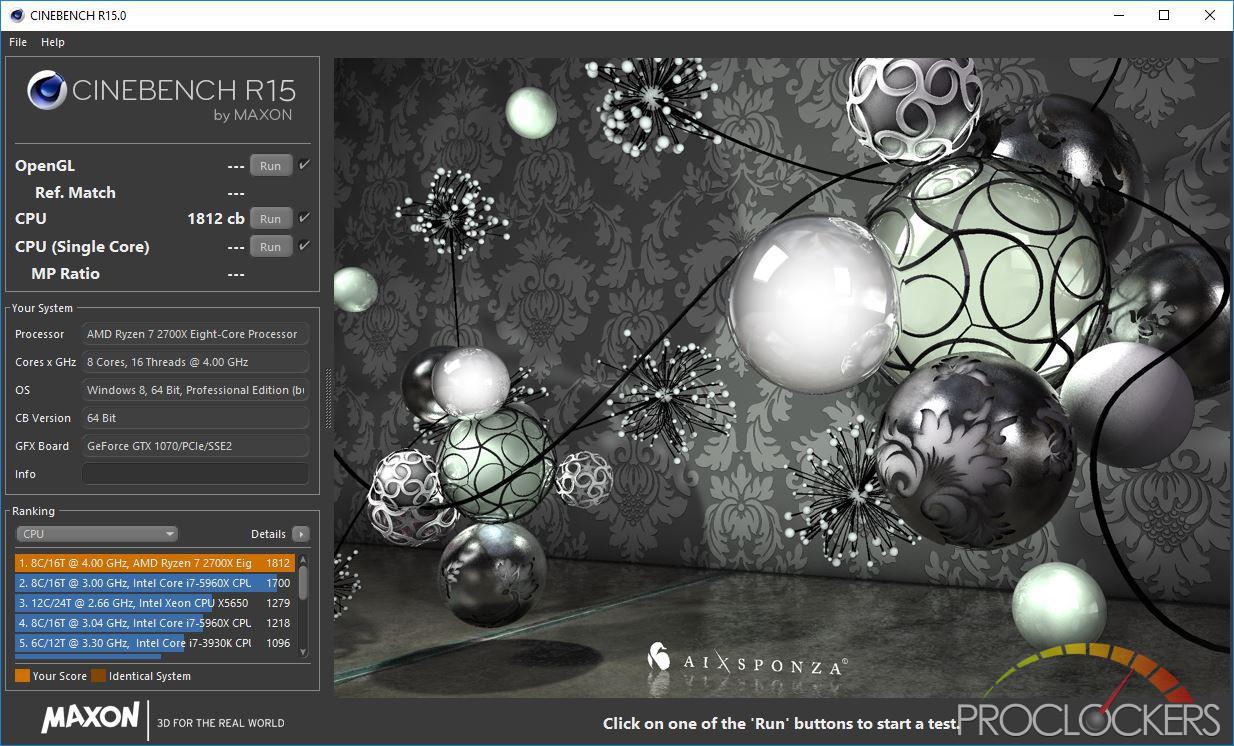
It does get us a fair increase in Cinebench score. Nothing record breaking here, but hey, it’s free performance that Is easy to get.
Final Thoughts & Conclusion
Gigabyte does another amazing job with the B450 Aorus Pro Wifi. We enjoyed a solid performance from start to finish. Memory performance was class leading as was real-world gaming performance. Unless you specifically need multiple GPU’s you really aren’t missing anything going with the B450 chipset over the bigger (and more expensive) X470. Aesthetics are on point, as is pretty traditional for products in the Aorus family at this point. Overclocking capabilities certainly didn’t blow us out of the water, but we did get a fully stable 4.0 GHz across all 8 cores without trying too hard. Given the $120 street price, it’s not hard to give Gigabyte’s B450 Aorus Pro WiFi high remarks for performance and features per dollar.
Great Job Gigabyte!
If you enjoyed this Gigabyte Motherboard review, check out some of our other Aorus Motherboard reviews:
- GIGABYTE AORUS AX370 GAMING AMD ATX Motherboard Review
- Gigabyte X299 AORUS MASTER Motherboard Review
- Gigabyte Z390 Aorus Pro Motherboard Review
- Gigabyte X570 AORUS Pro WIFI Motherboard Review
What did you think of this review? Leave a comment below.

